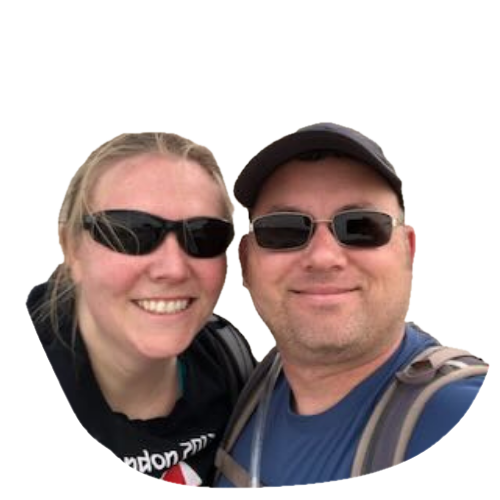🇿🇦 South Africa
🎥 Recapping our 24-day overlanding safari of Africa
Here’s a video recap of what we thought about our 24-day overlanding safari tour of Africa. What did we like? Dislike? Would we do it again? Find out below.
And here’s a short montage video someone on our tour made for his students—focusing on the first few days of the East Africa portion of our tour—using a 360 camera.
And if you missed it, here’s more on the overlanding truck we used:
https://adventuresaroundthe.world/2025/01/07/a-little-bit-about-the.html
-S 🇿🇦🇧🇼🇿🇼🇿🇲🇲🇼🇹🇿
🎥 Recapping our wildlife experiences in Africa
A video discussion of our wildlife experiences in Africa. Did we see everything we wanted to? What were the game drives like? Find out in the video below. -S 🇿🇦🇧🇼🇿🇼🇿🇲🇲🇼🇹🇿
And we’re off on our 24-day safari thru South Africa, Botswana, Zimbabwe, Zambia, Malawi, and Tanzania!
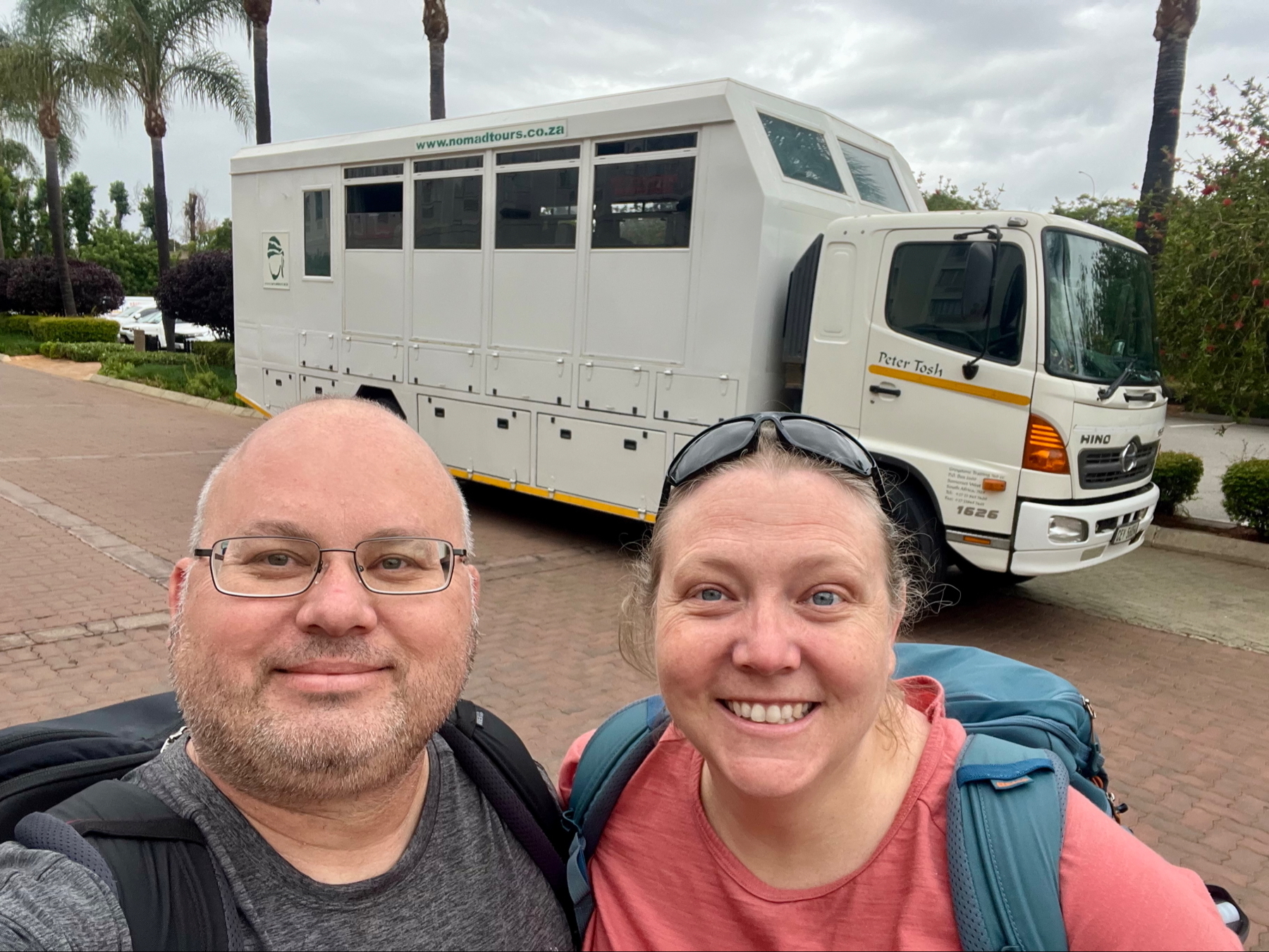
Here’s our vehicle for the journey! -S 🇿🇦🇧🇼🇿🇼🇿🇲🇲🇼🇹🇿
A Day Tour of Johannesburg
For our last full day in Johannesburg, we opted to do a day tour of some of the main historical parts of the city.
The first stop was at Constitution Hill, which is at a former prison complex/military fort built by Paul Kruger in 1898 to protect against British Invasion and then to house Boer prisoners from the Anglo-Boer war. Starting in the early 1900s, political activists opposed to apartheid were imprisoned here, including Mahatma Ghandi. As apartheid took hold, many thousands were imprisoned, including political activists like Nelson Mandela. But the prison held many who simply violated the “pass laws” - laws requiring blacks to have a pass to enter the city to work. White men were held separately, and in significantly better conditions than the black men, and women had their own block. Overcrowding, disease, humiliation, rape, torture, and starvation was the norm for the black men held there. The prison was closed in 1983. In 2004, Nelson Mandela oversaw its reopening as the country’s highest constitutional court (Similar to the US Supreme Court for constitutional issues, not civil).
The courtyard in the area holding black prisoners where the prisoners had to strip naked, were strip searched, had to do a dance and squat down where they were probed for contraband, and otherwise harmed and humiliated
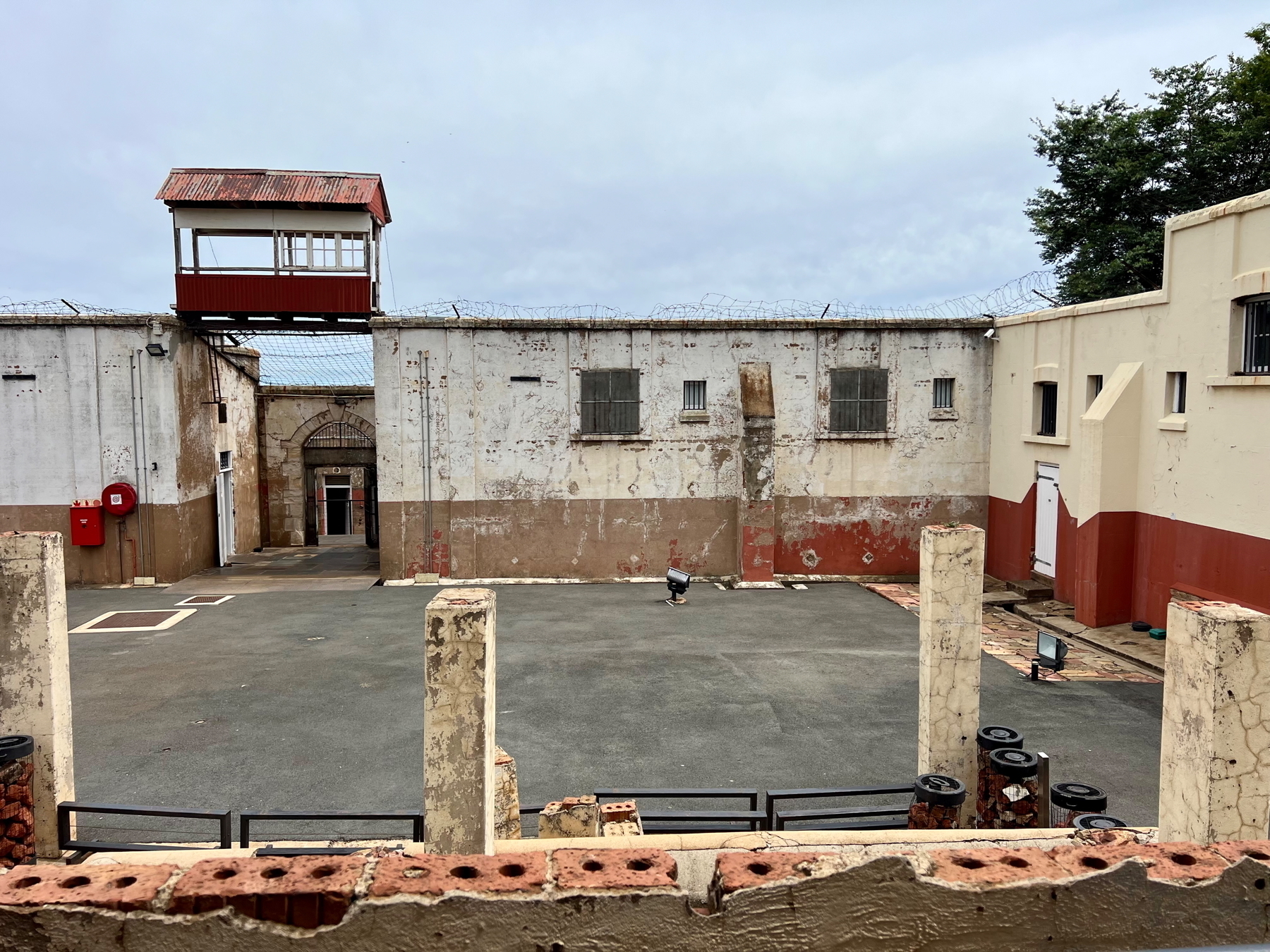
These cells held black prisoners—60 to 80 prisoners per room
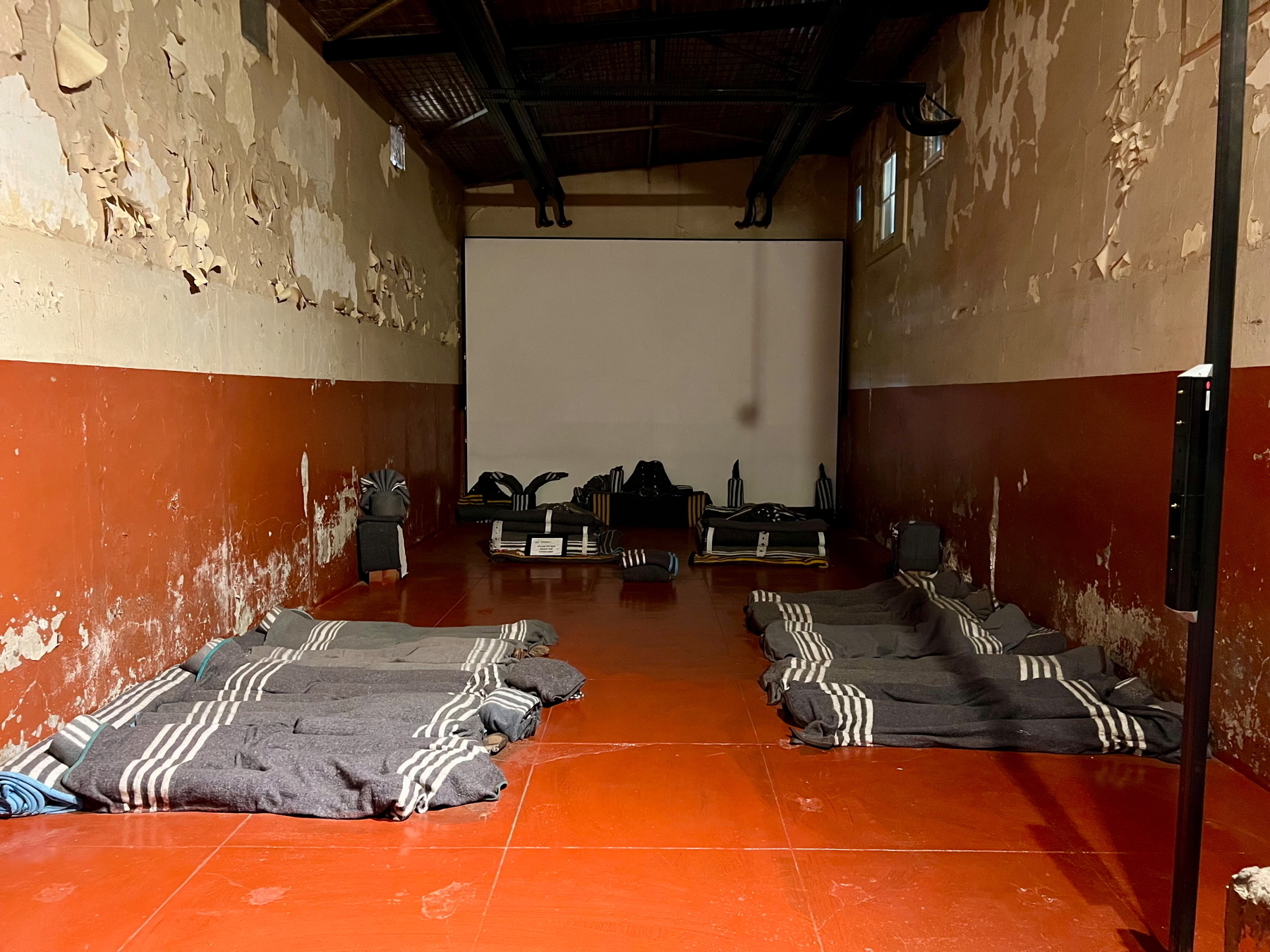
This cell was an isolation cell for black prisoners, but specifically held political prisoners
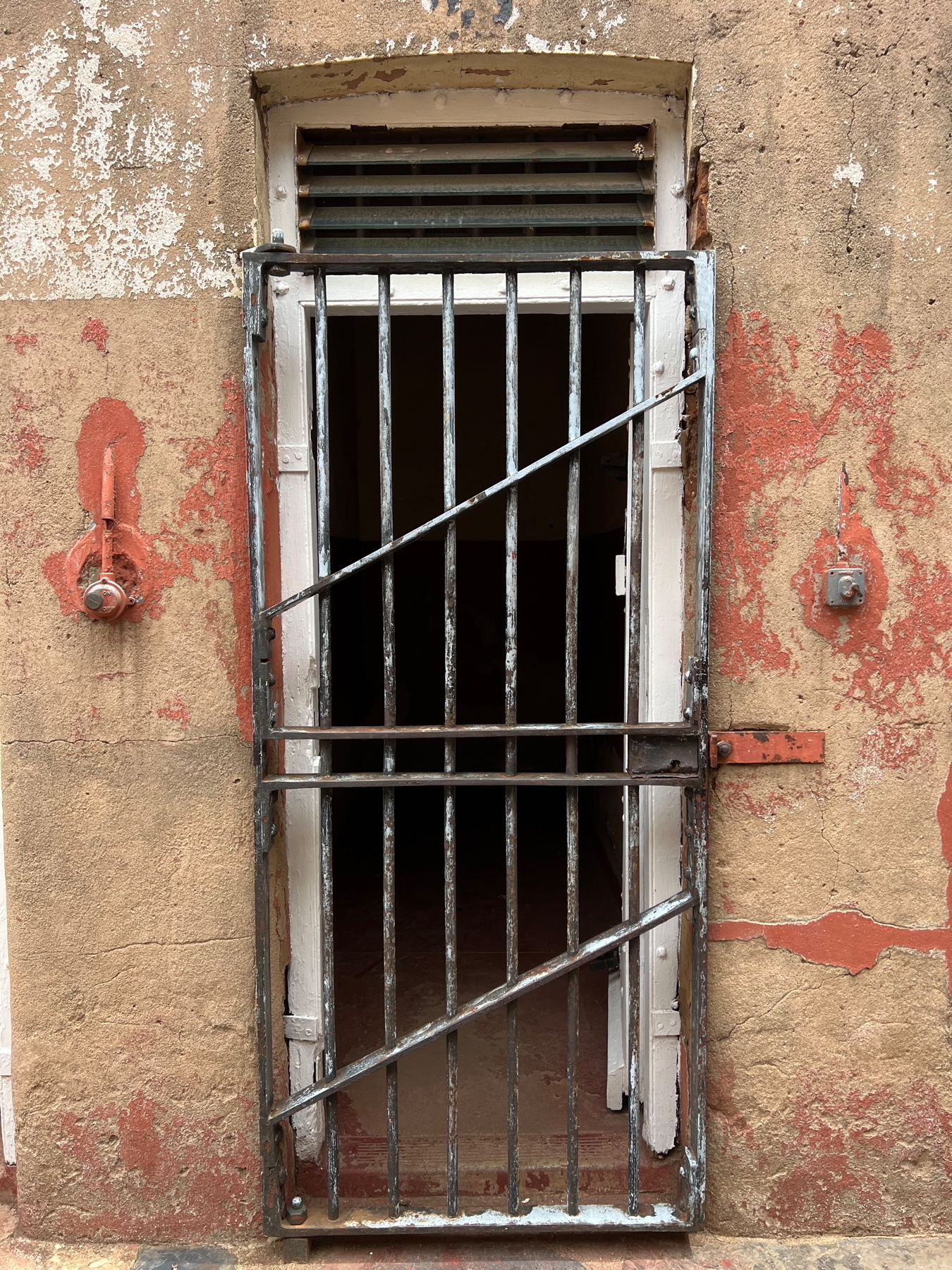
The barbed wire over the area where the isolation cells were for the black prisoners
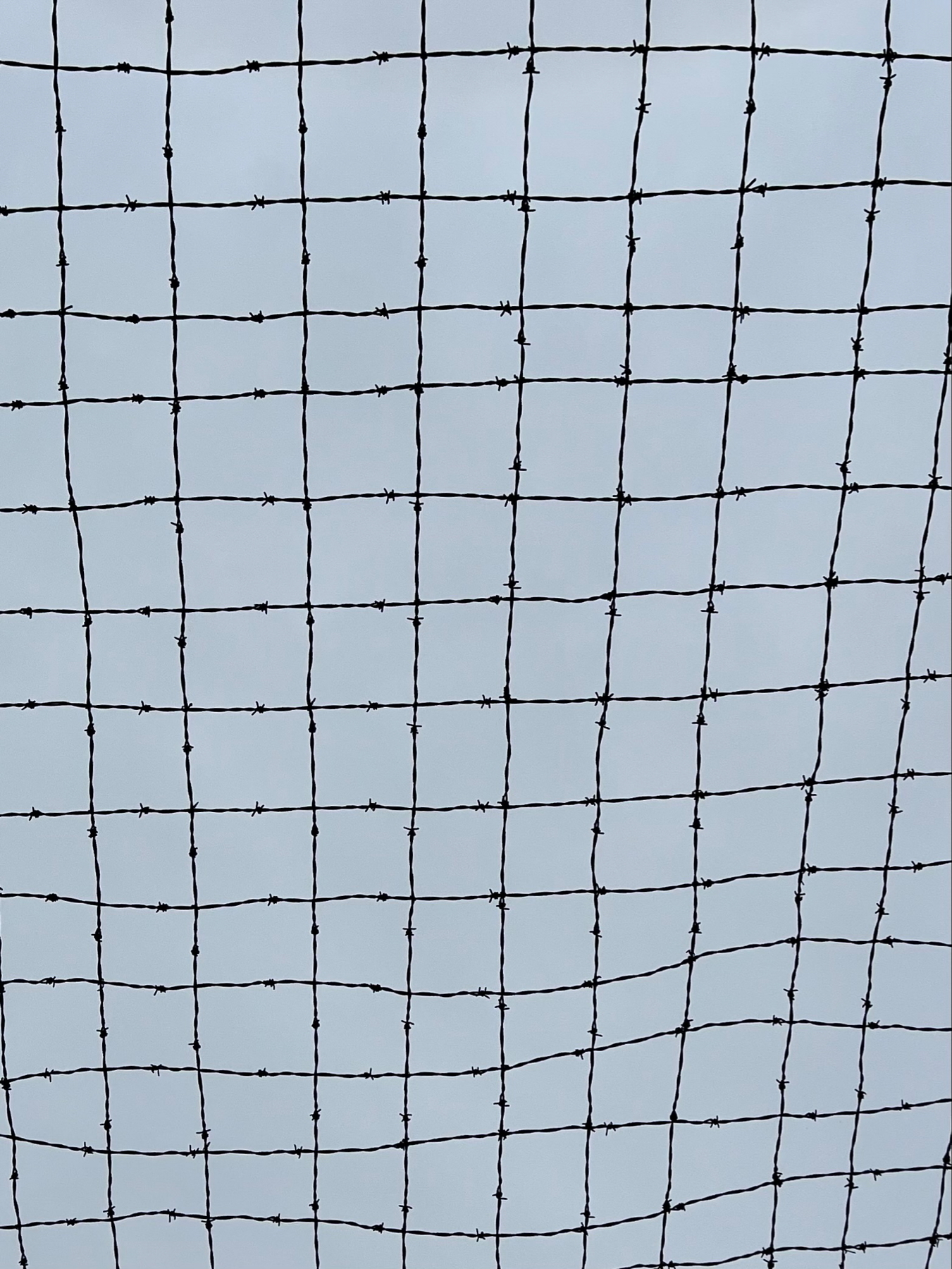
The isolation cells for the white prisoners
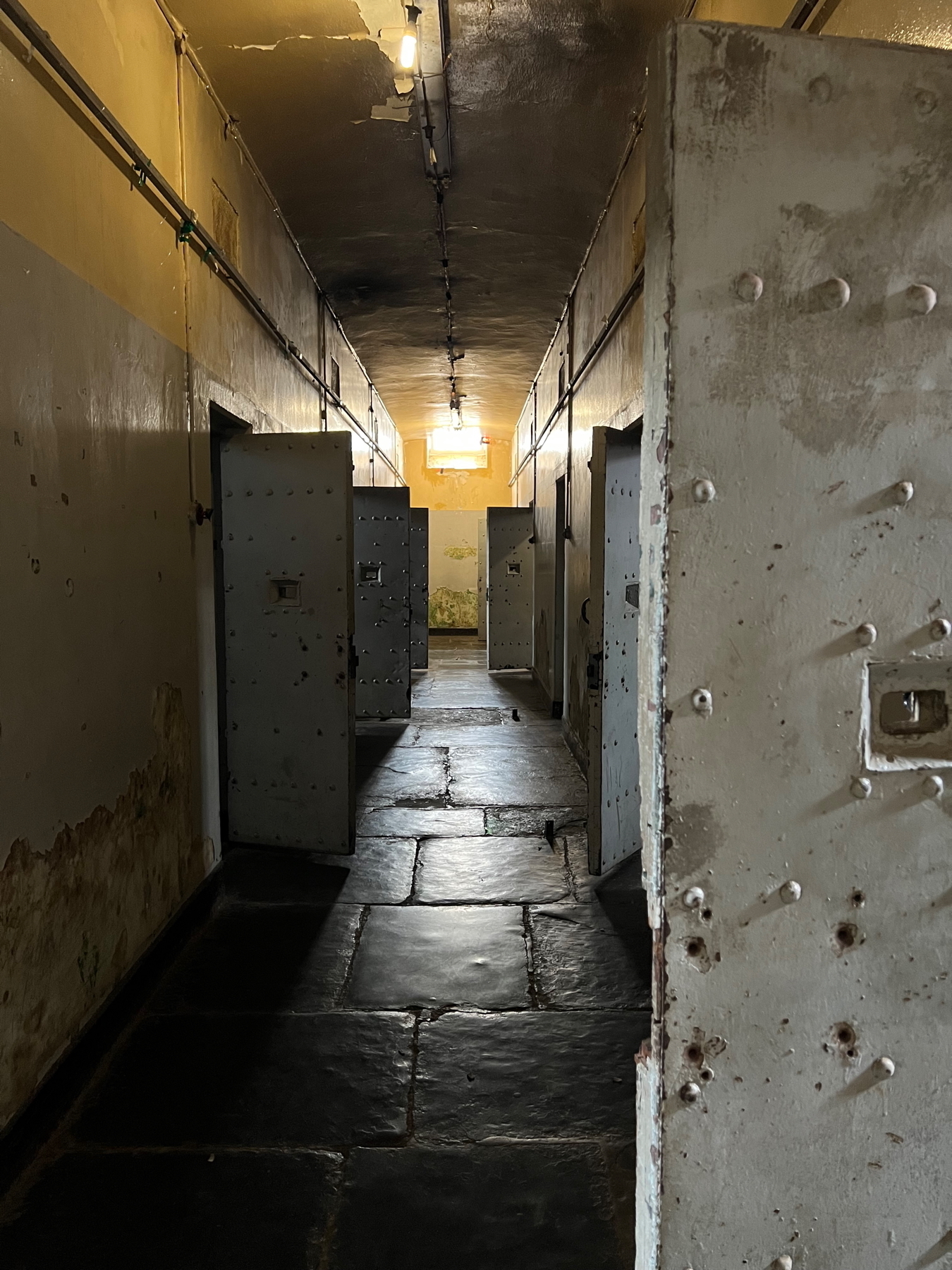
The Constitutional Court
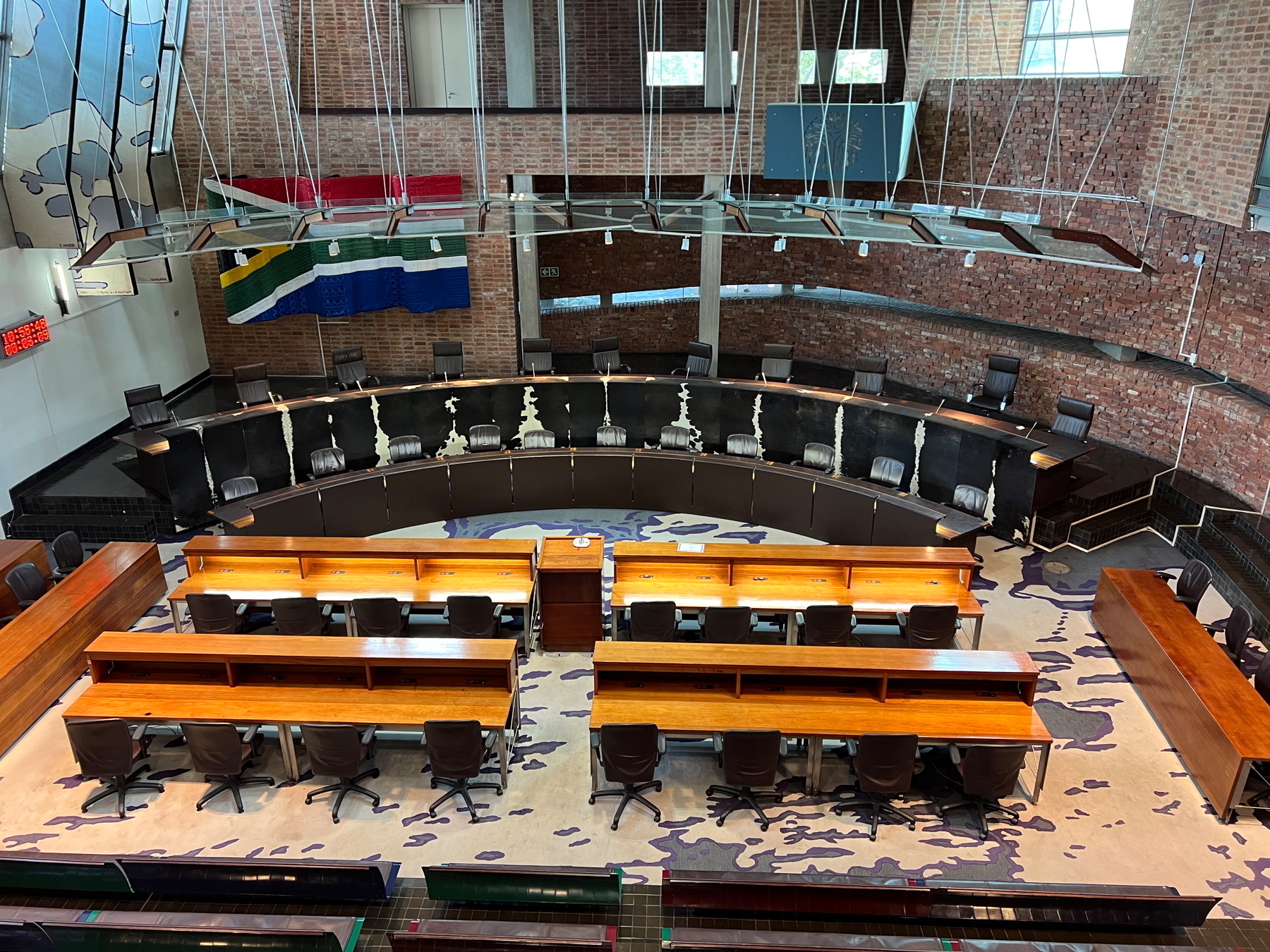
The doors leading into the court-they outline the 12 official languages of the court
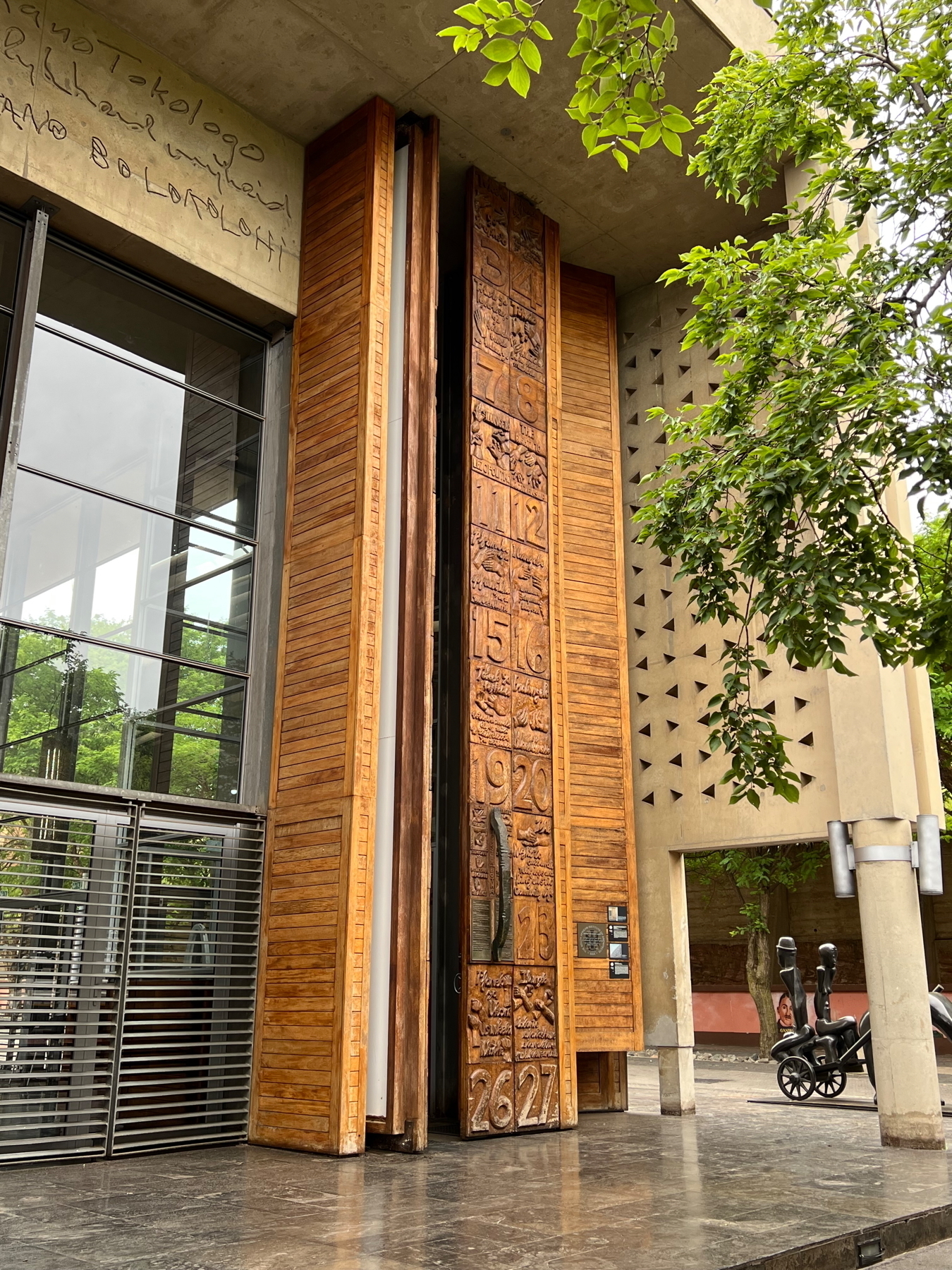
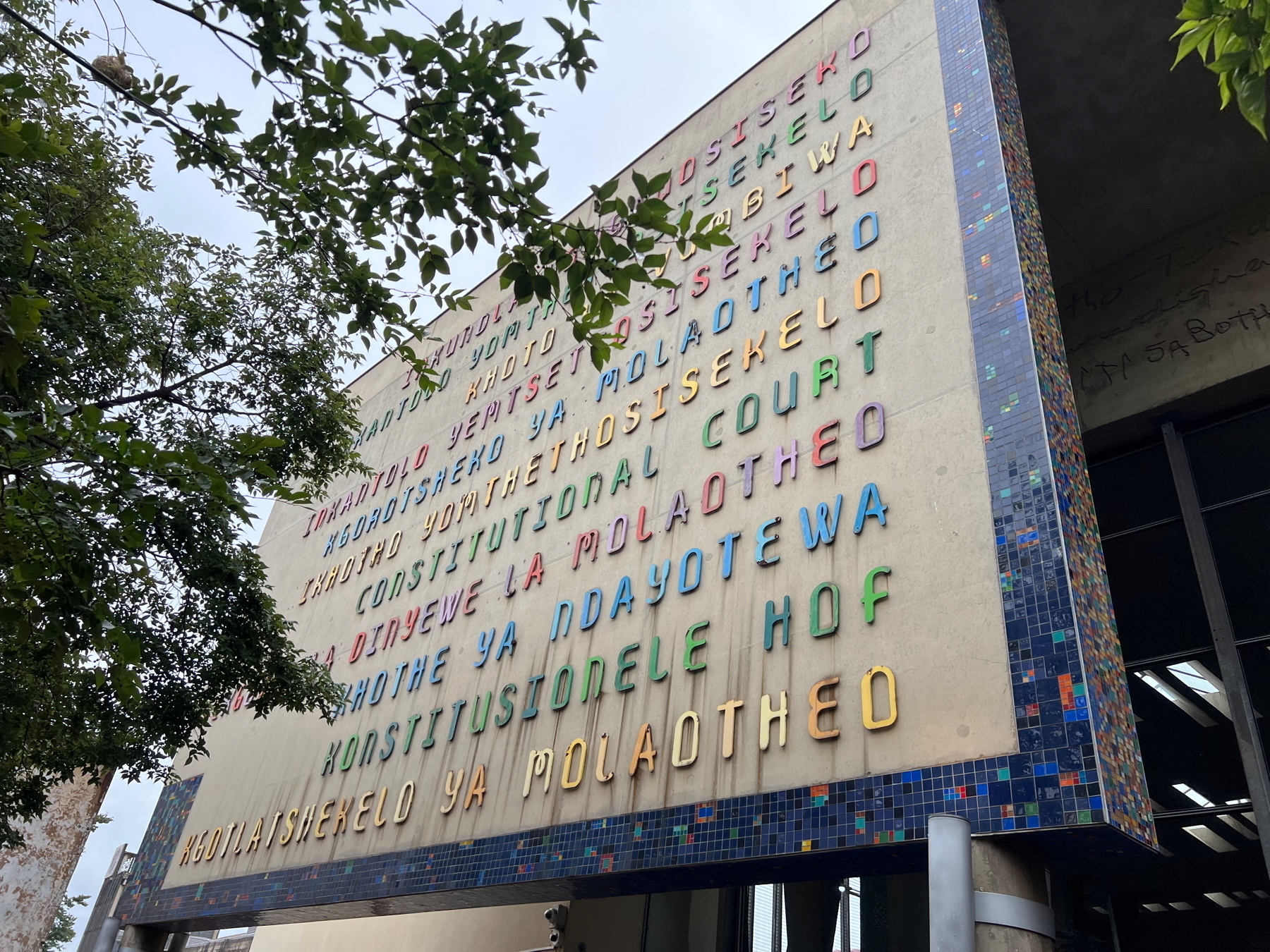
A replica of the holding cells for prisoners awaiting “trial” during apartheid
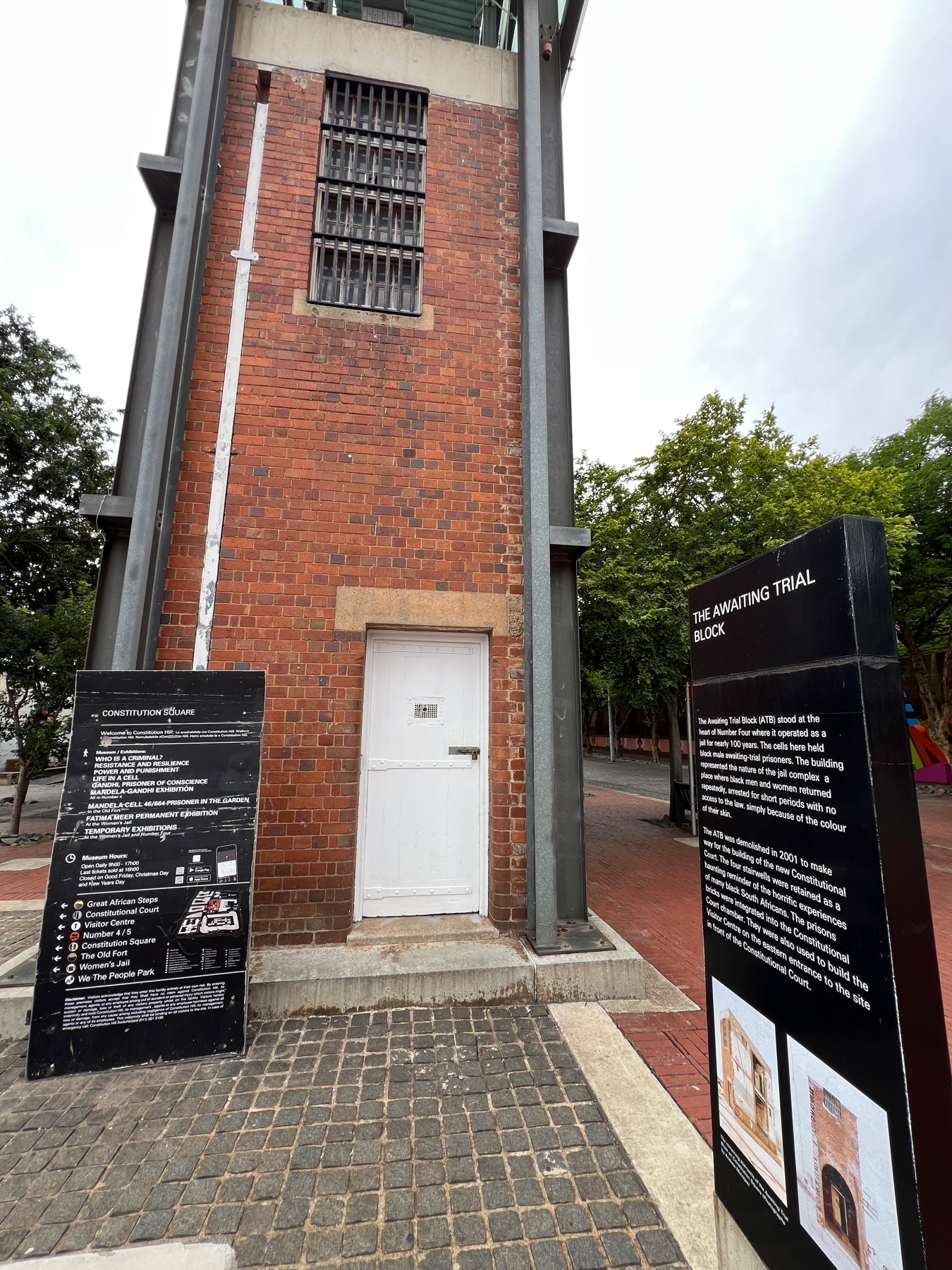
Nelson Mandela’s cell
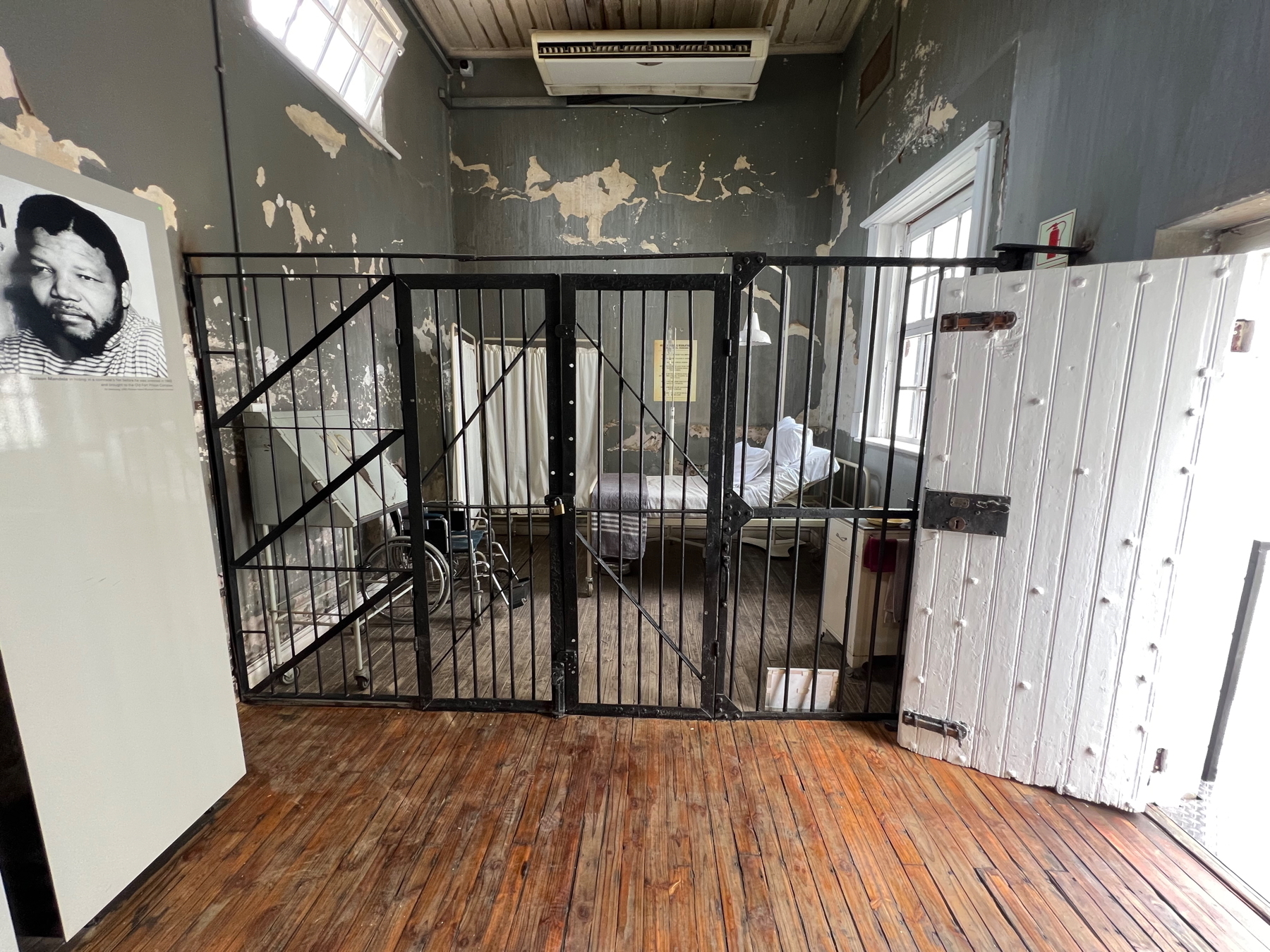
Nelson Mandela’s personal papers
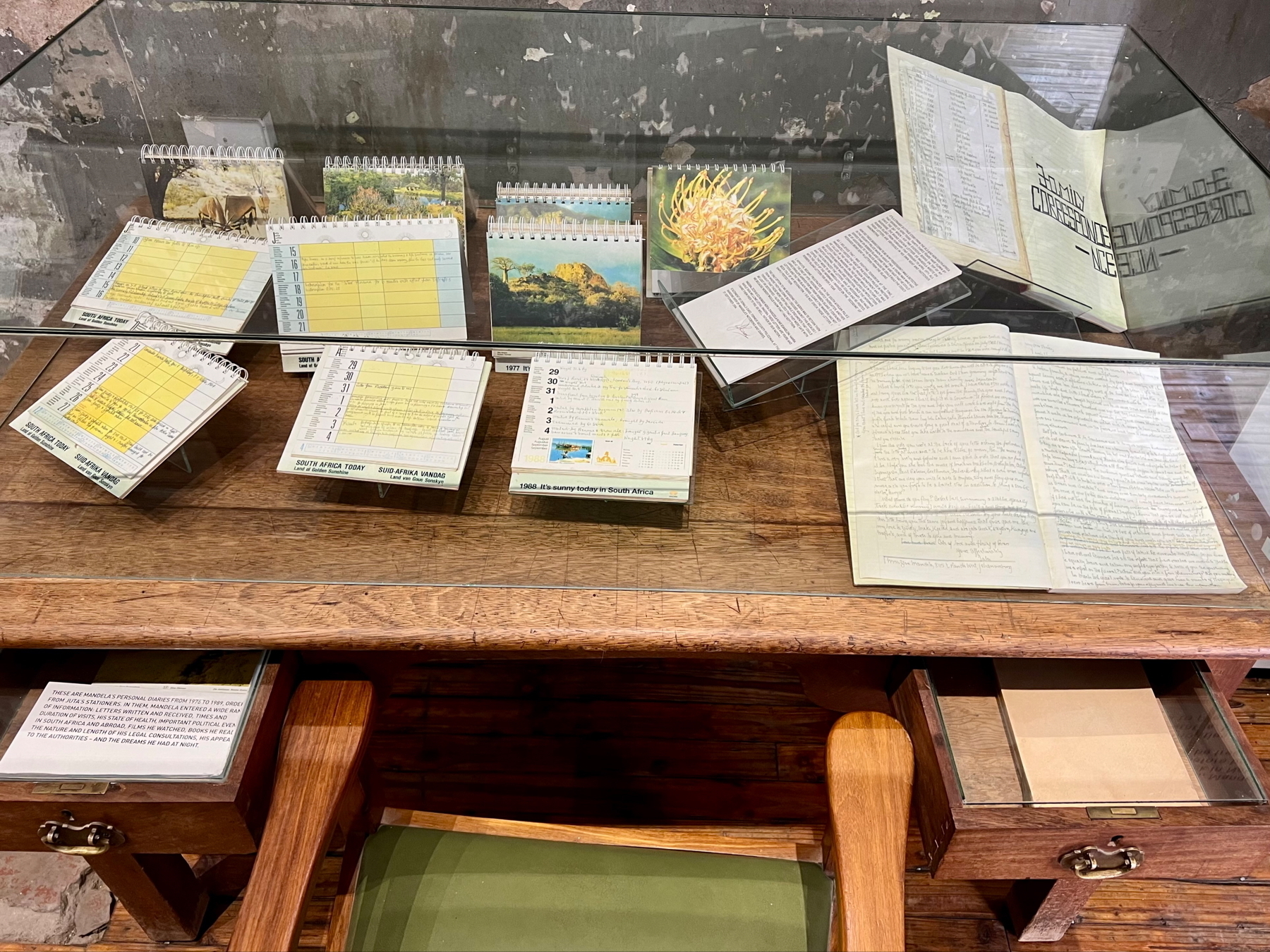
The flame of democracy
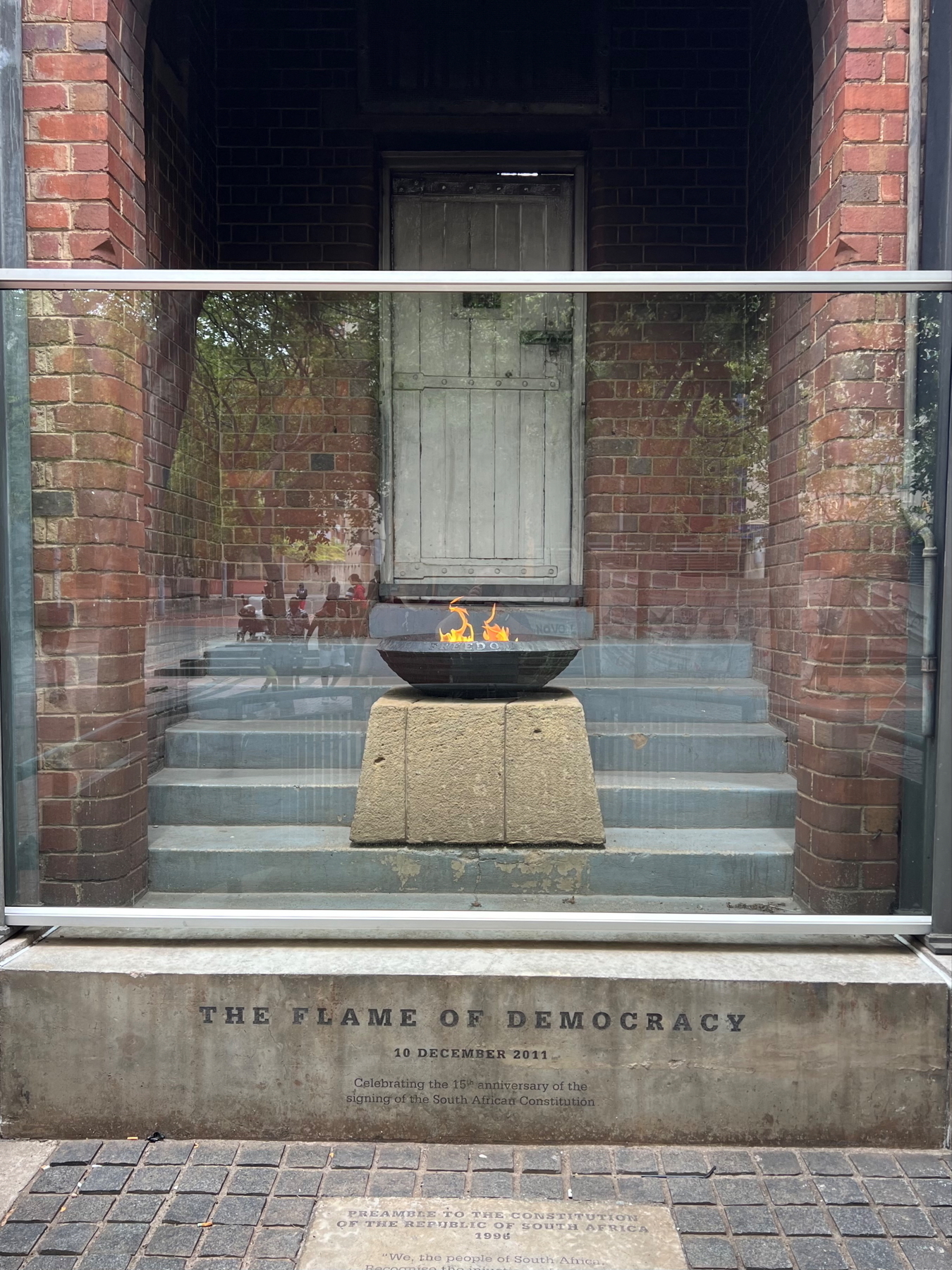
An interesting statue
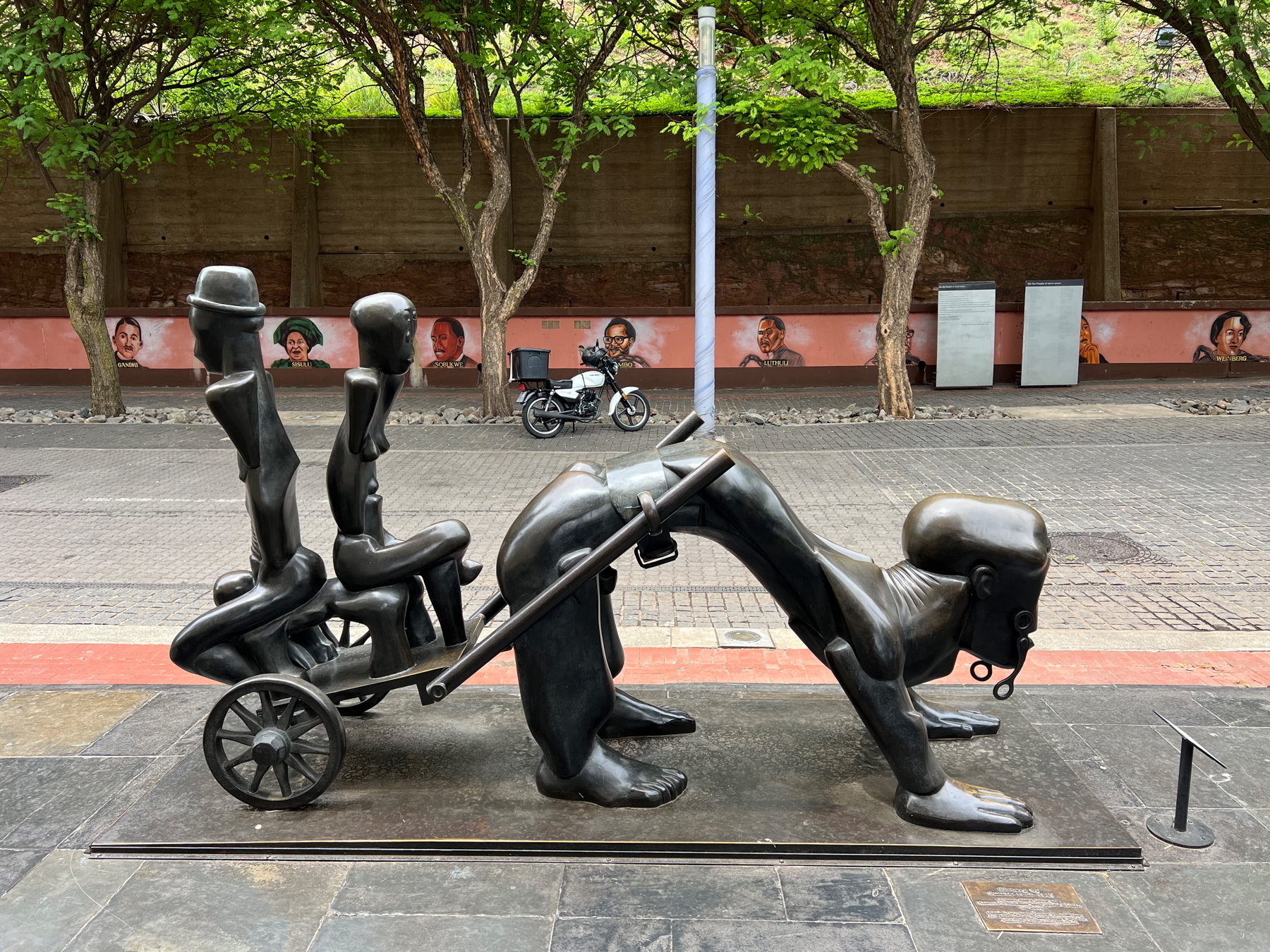
Ghandi’s bust
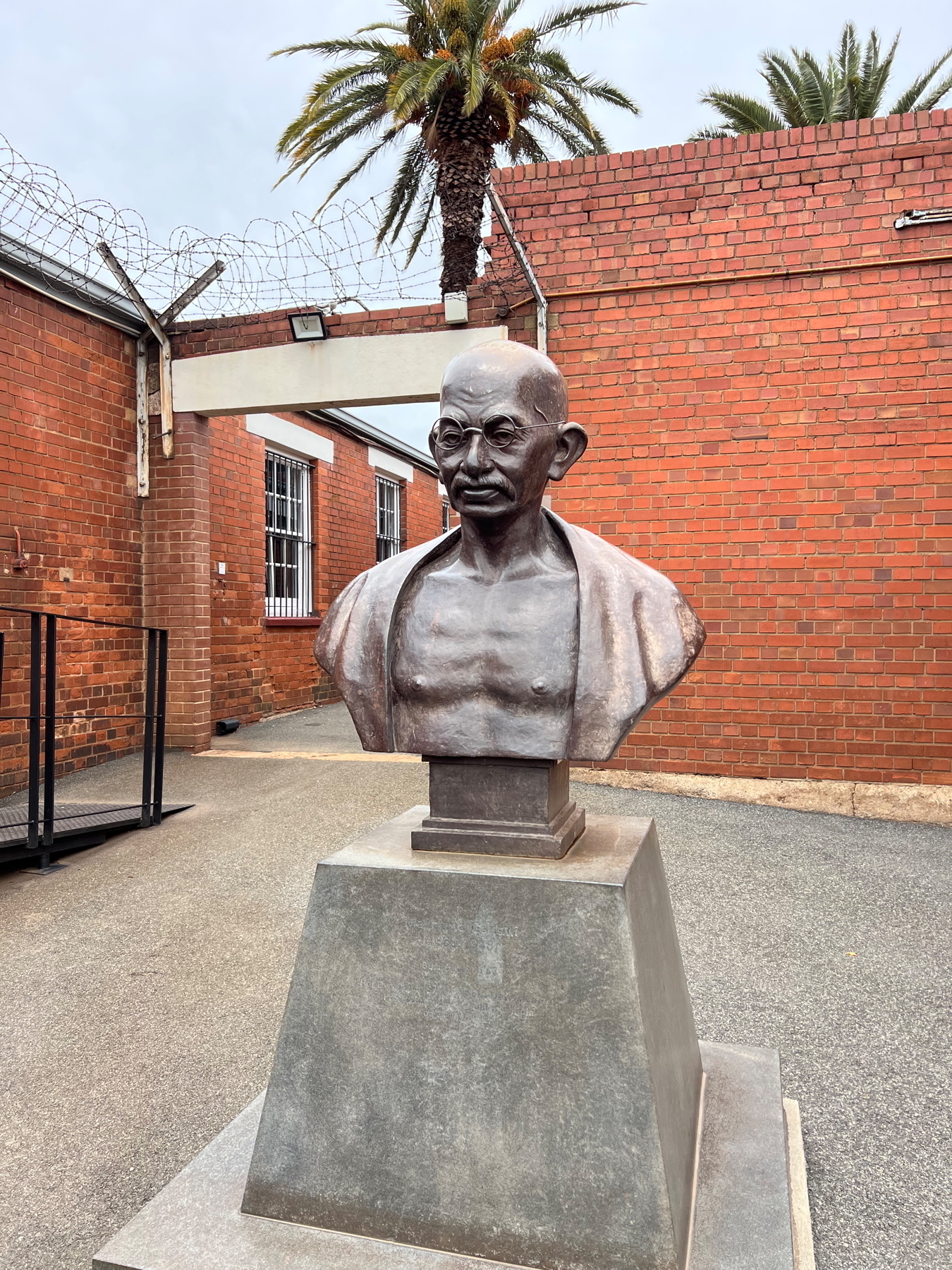
After that, we headed to Nelson Mandela’s home in Soweto. Mandela bought it in 1946 with his first wife, Evelyn. After their divorce in 1957, Mandela continued to live there, and welcomed his second wife, Winnie there. Mandela lived there until his arrest and imprisonment in 1962, but the house stayed in their name until the family donated it in 1996. Winnie was subjected to extreme harassment when Mandela was imprisoned, even subjecting her to a firebombing of the house, and eventually forced her to go into exile. Mandela returned to the home when he was finally released from prison in 1990.
Nelson Mandela’s home
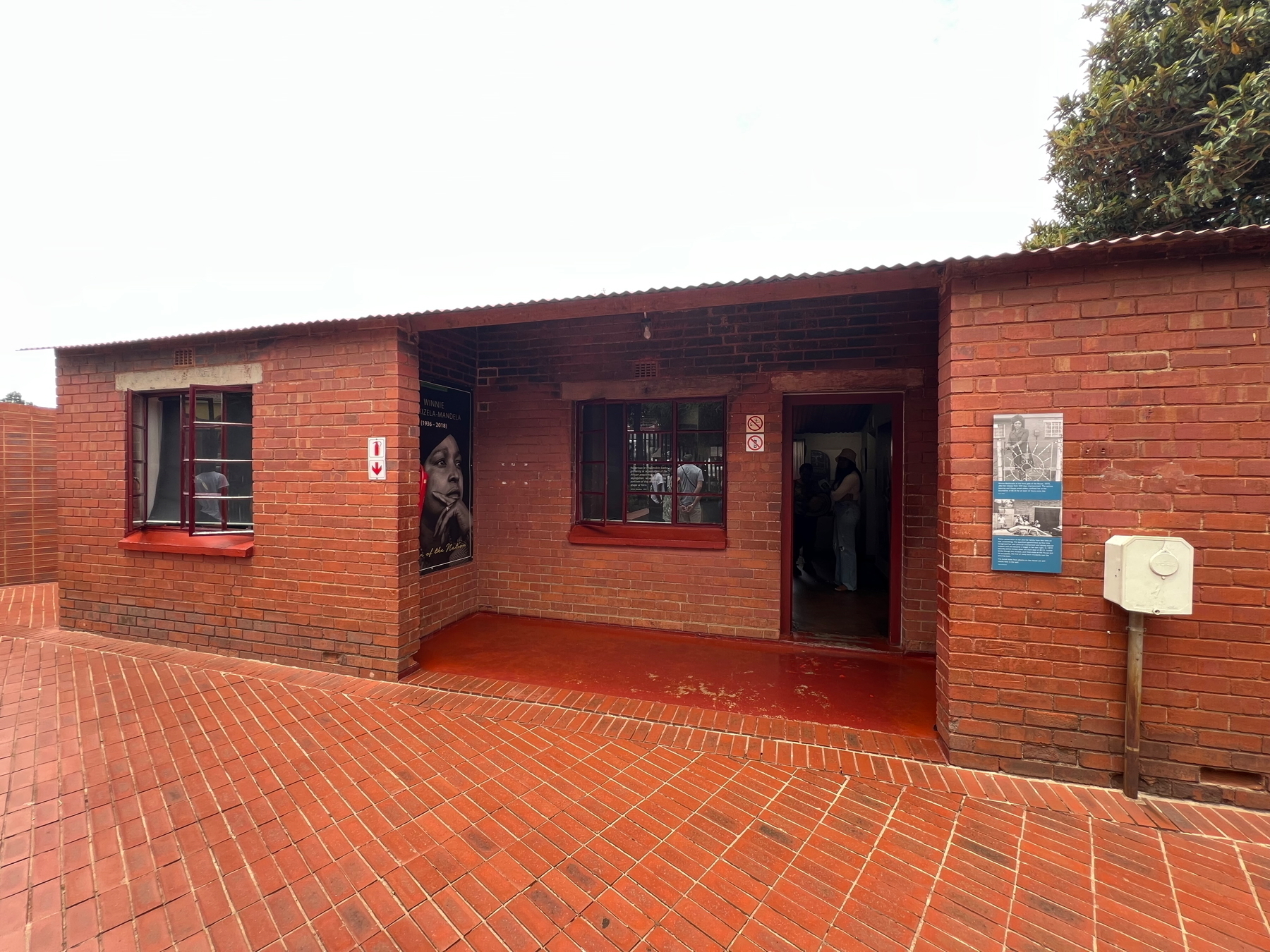
Nelson Mandela’s actual chair
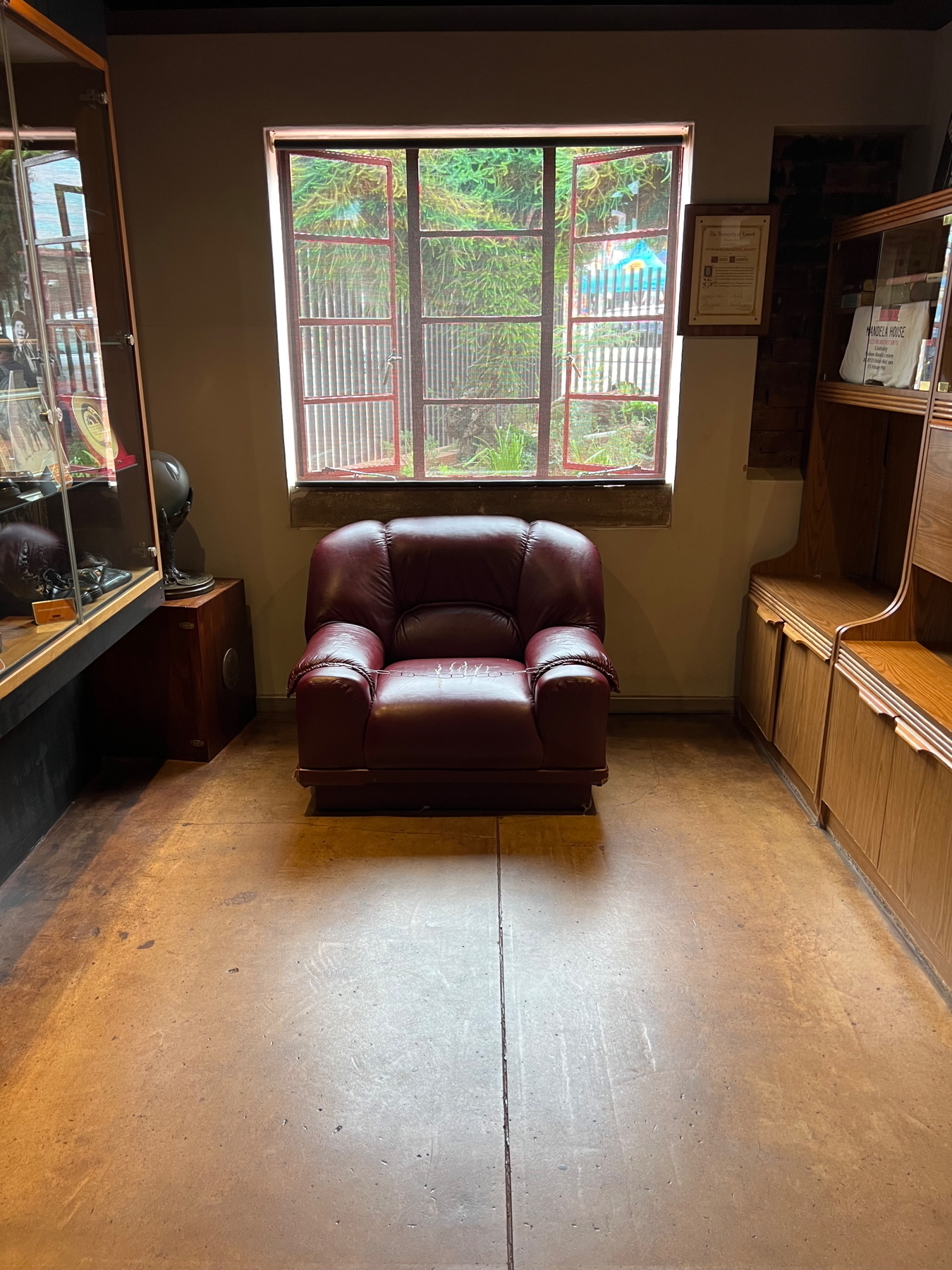
Nelson Mandela
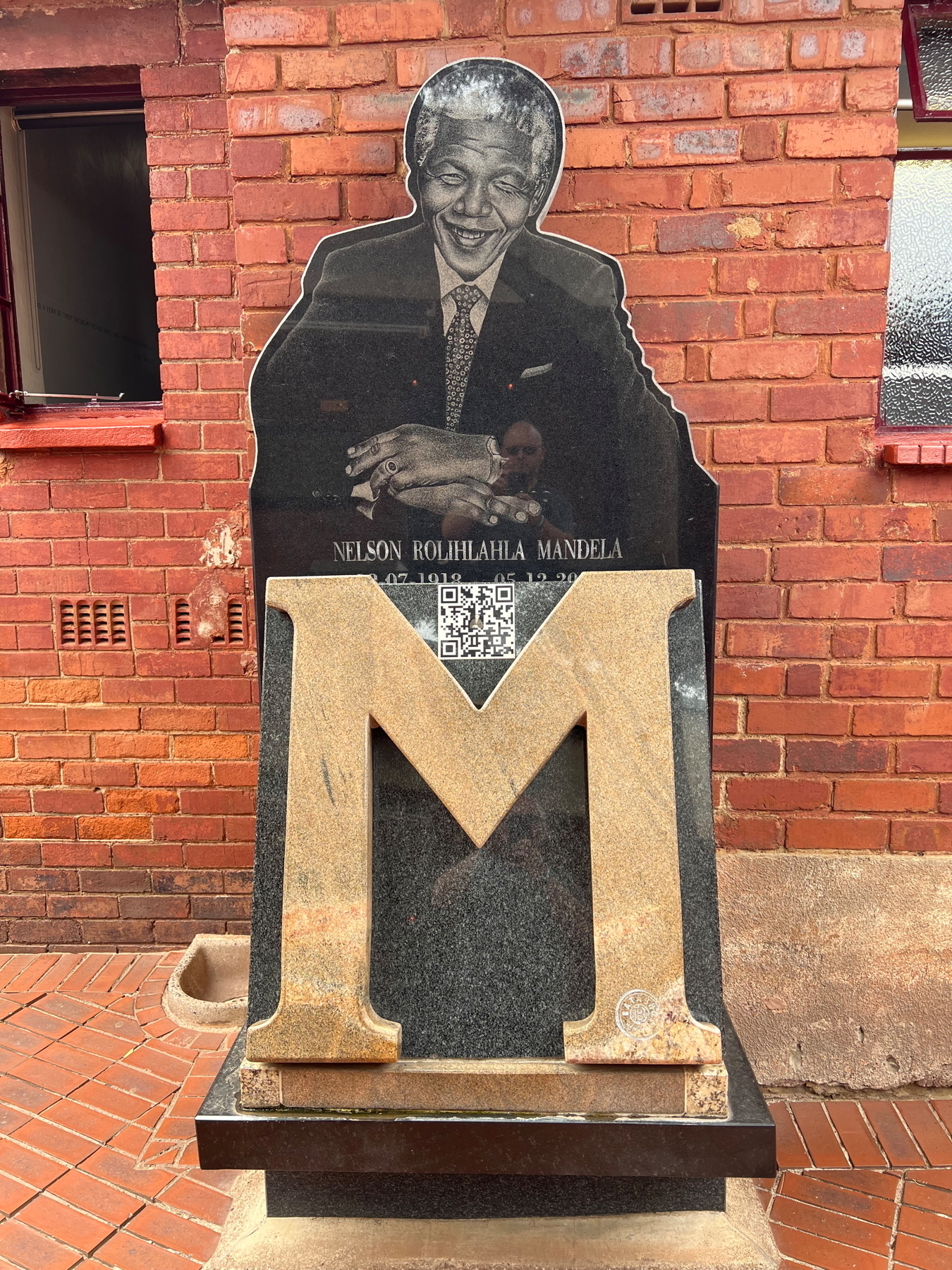
We then went to the site of the 1976 Soweto uprising where black students began protesting the apartheid government’s mandate that they only learn and use the Afrikaans language. Eventually the police started using live ammunition and when everything was done, hundreds of children were dead. One such child was Hector Pieterson, who was not participating in the protest, but was innocently standing on a street corner waiting for his sister to come from school. A memorial in his name now stands to commemorate those who were killed.

Injustice
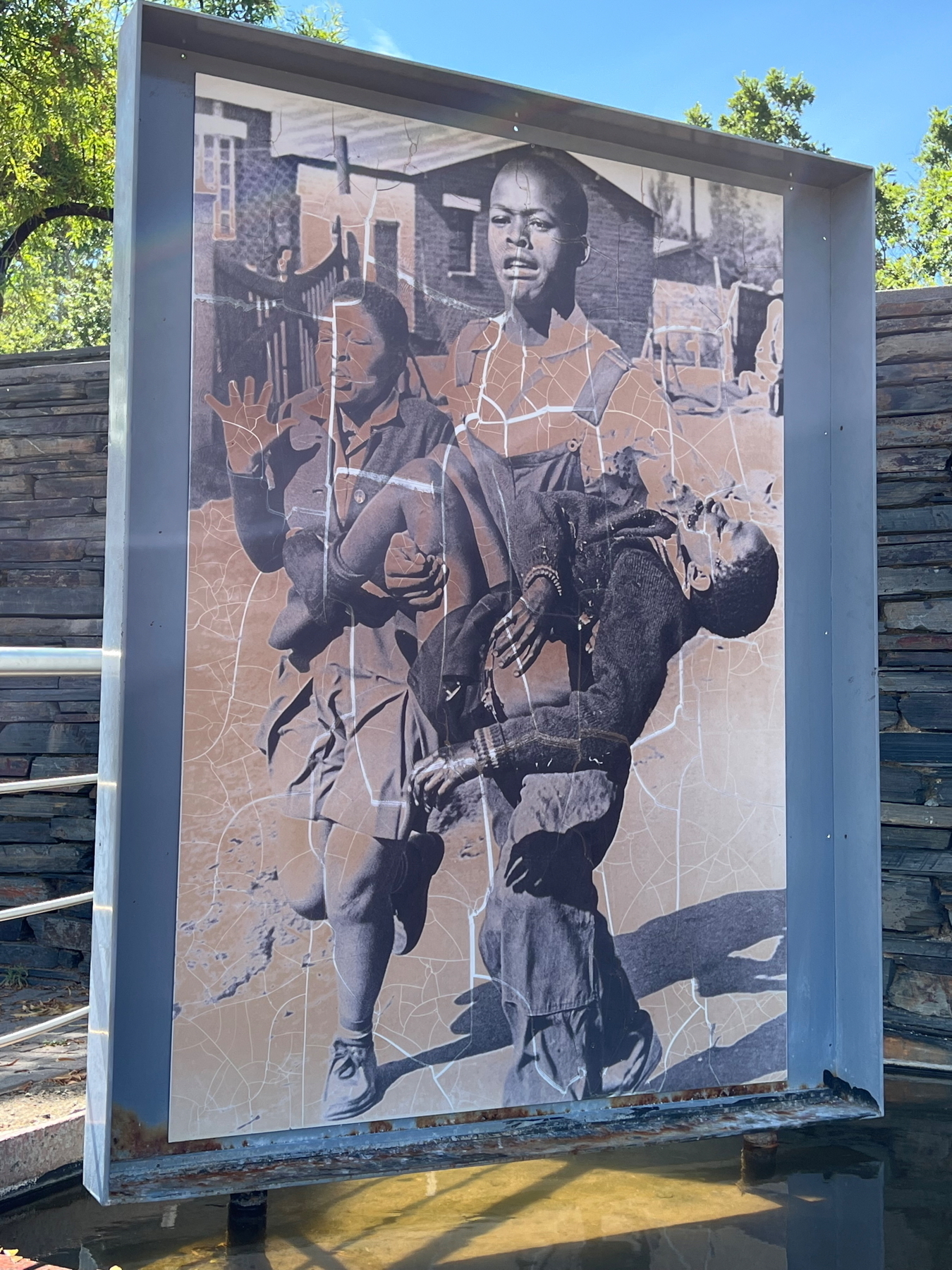
Then we were off to the Apartheid Museum, which was a great museum outlining the events leading to, during, and the downfall of Apartheid.
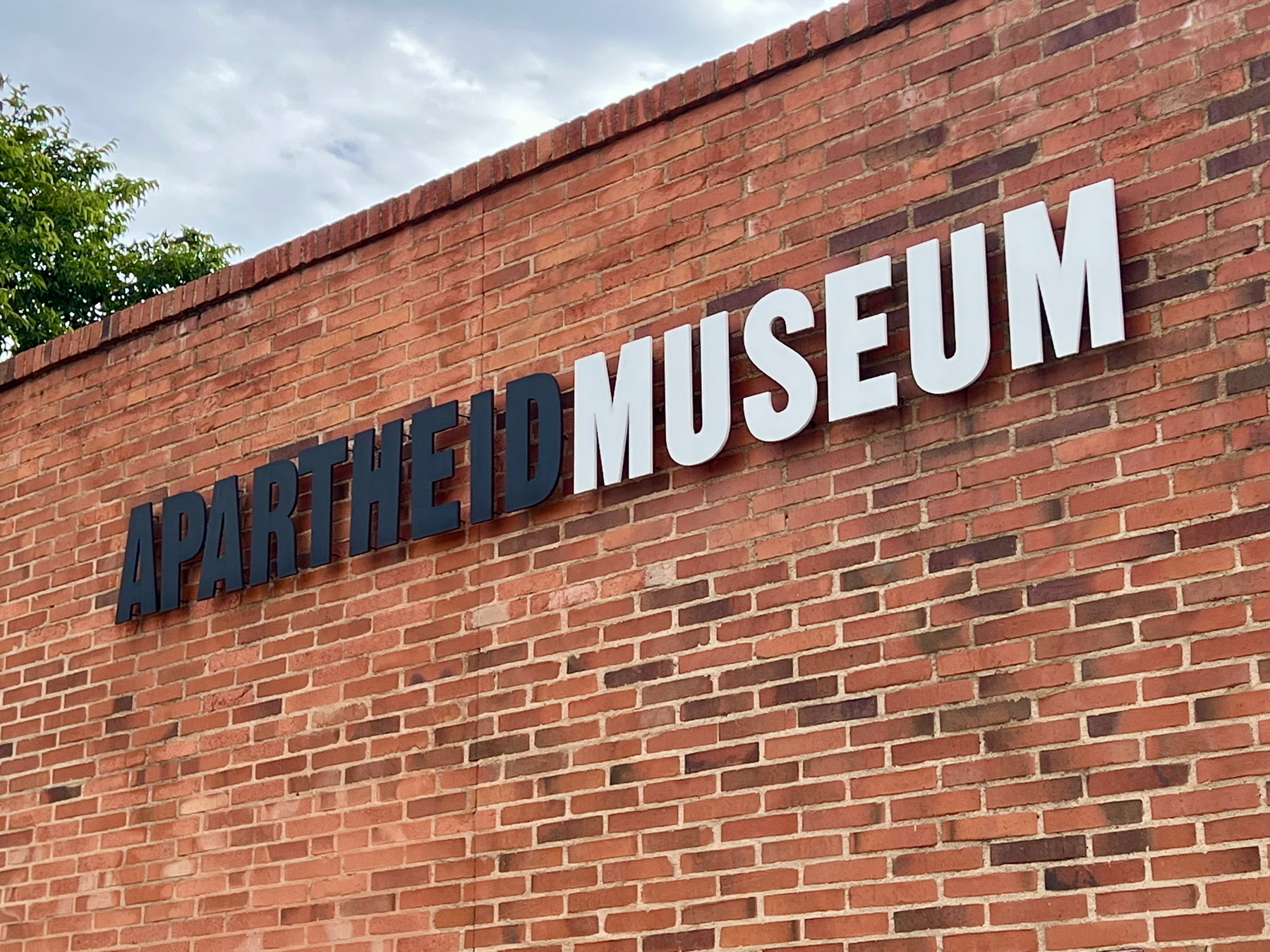
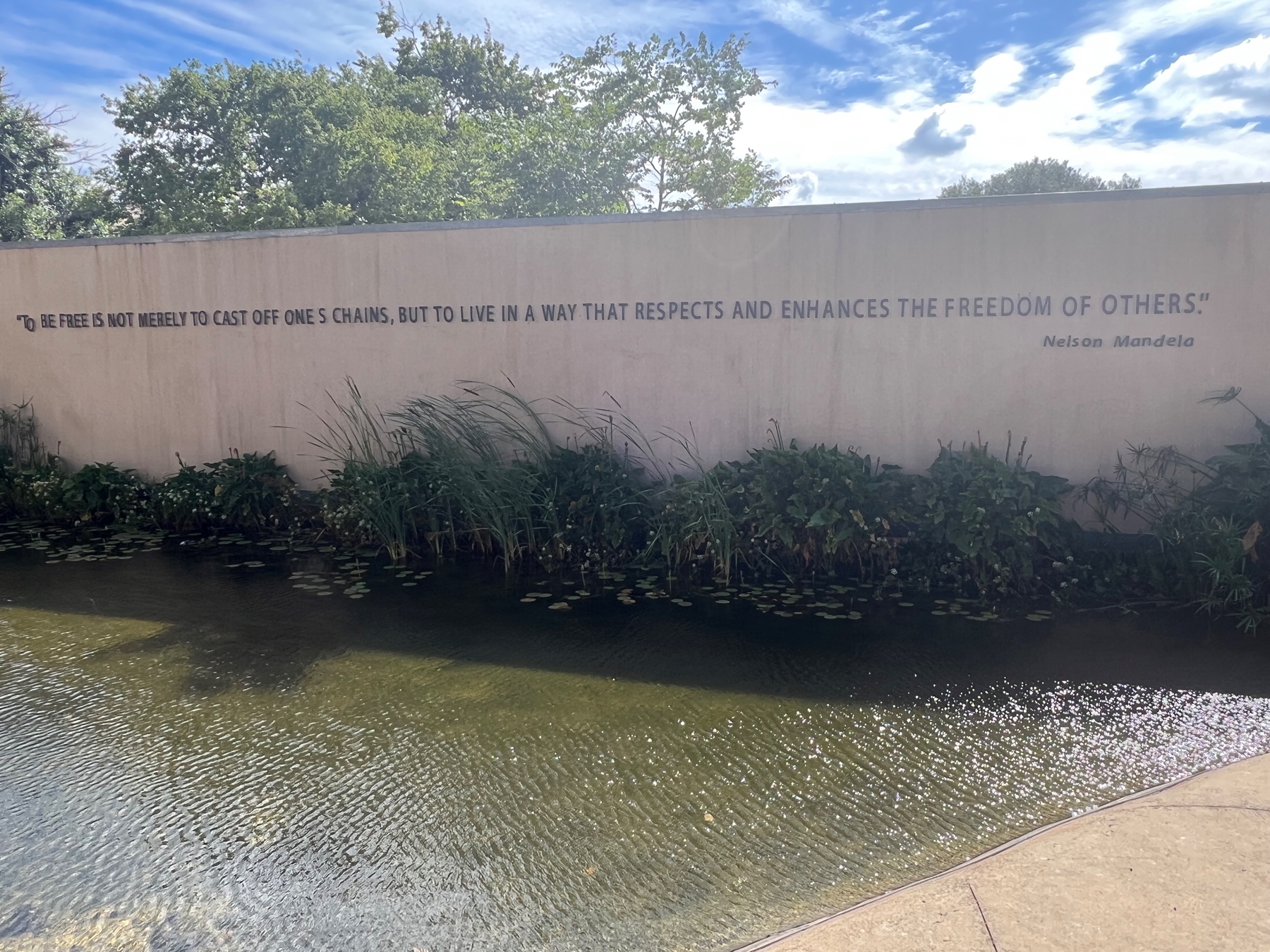
Here are some other photos of interesting things/stops along the tour:
Old coal chimneys
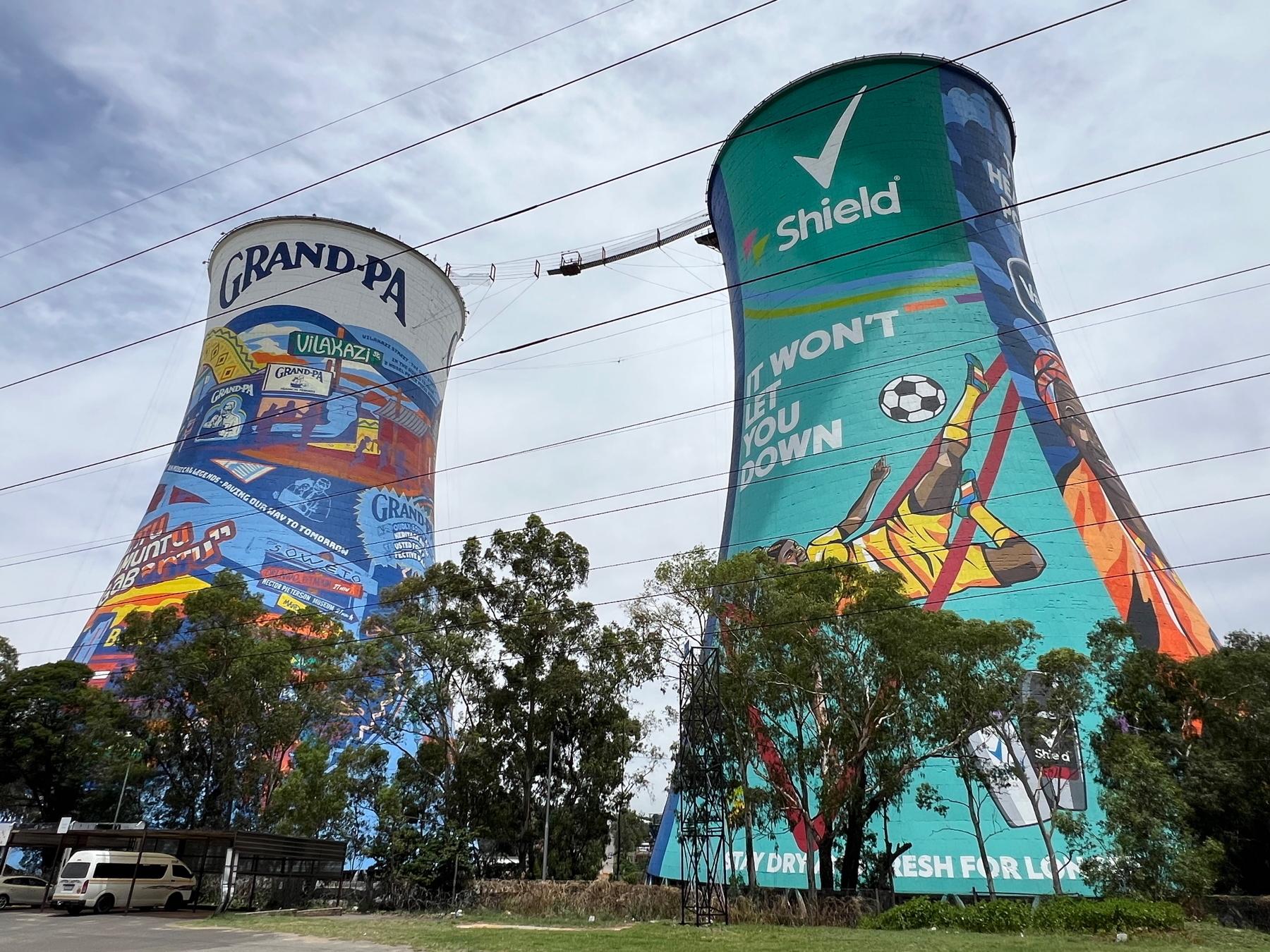
Stadium

A statue to represent the mining background of the area
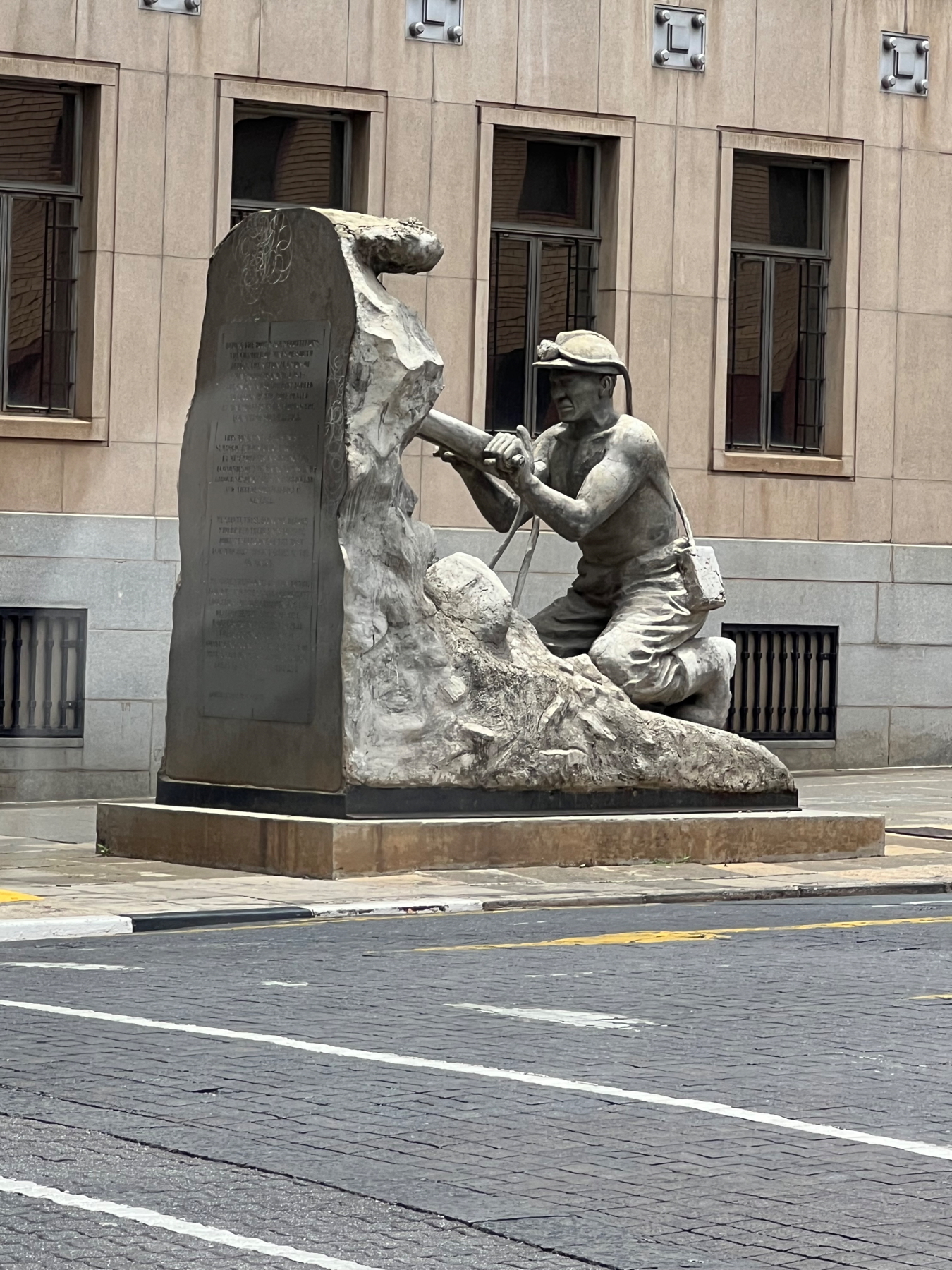
We decided to spend more to have the hotel do our laundry for us today, so that opened up some extra time that we spent—magnificently, I’ll say—getting (quite excellent, yet cheap) 90-minute in-room massages. A rare treat, for sure, but also a great move after weeks of flights + long drives! -S 🇿🇦
Amarula is a great South African liqueur that my friend, Theresa, introduced me to when I visited her in Cameroon. So naturally I wanted some when we got to South Africa, but haven’t been able to find until tonight. Cheers, Theresa! -J 🇿🇦
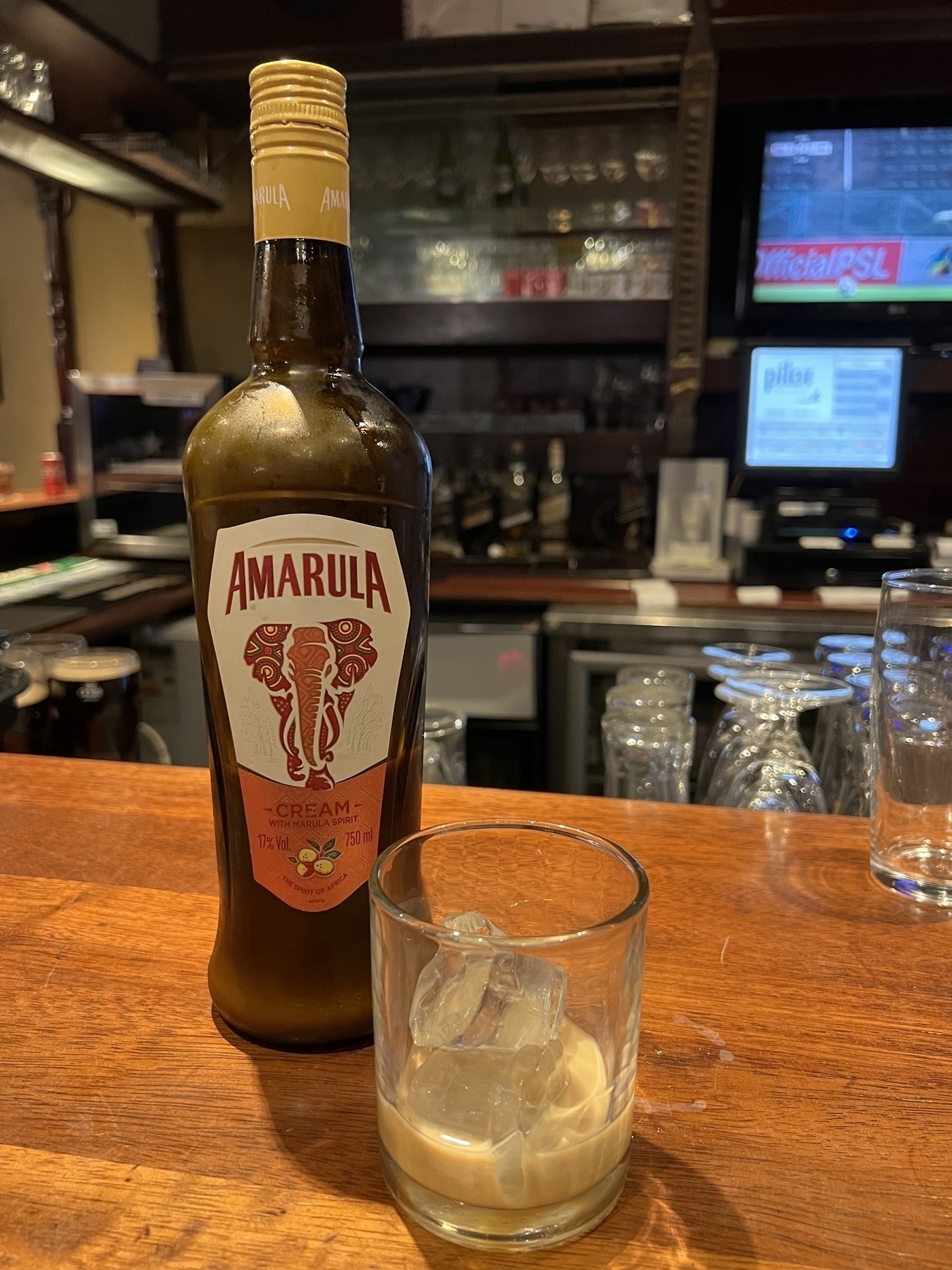
Marking off South Africa on our quest to drink a Guinness in an Irish Pub in 32 countries. This makes 17/32 -S 🇿🇦 🍀🍻
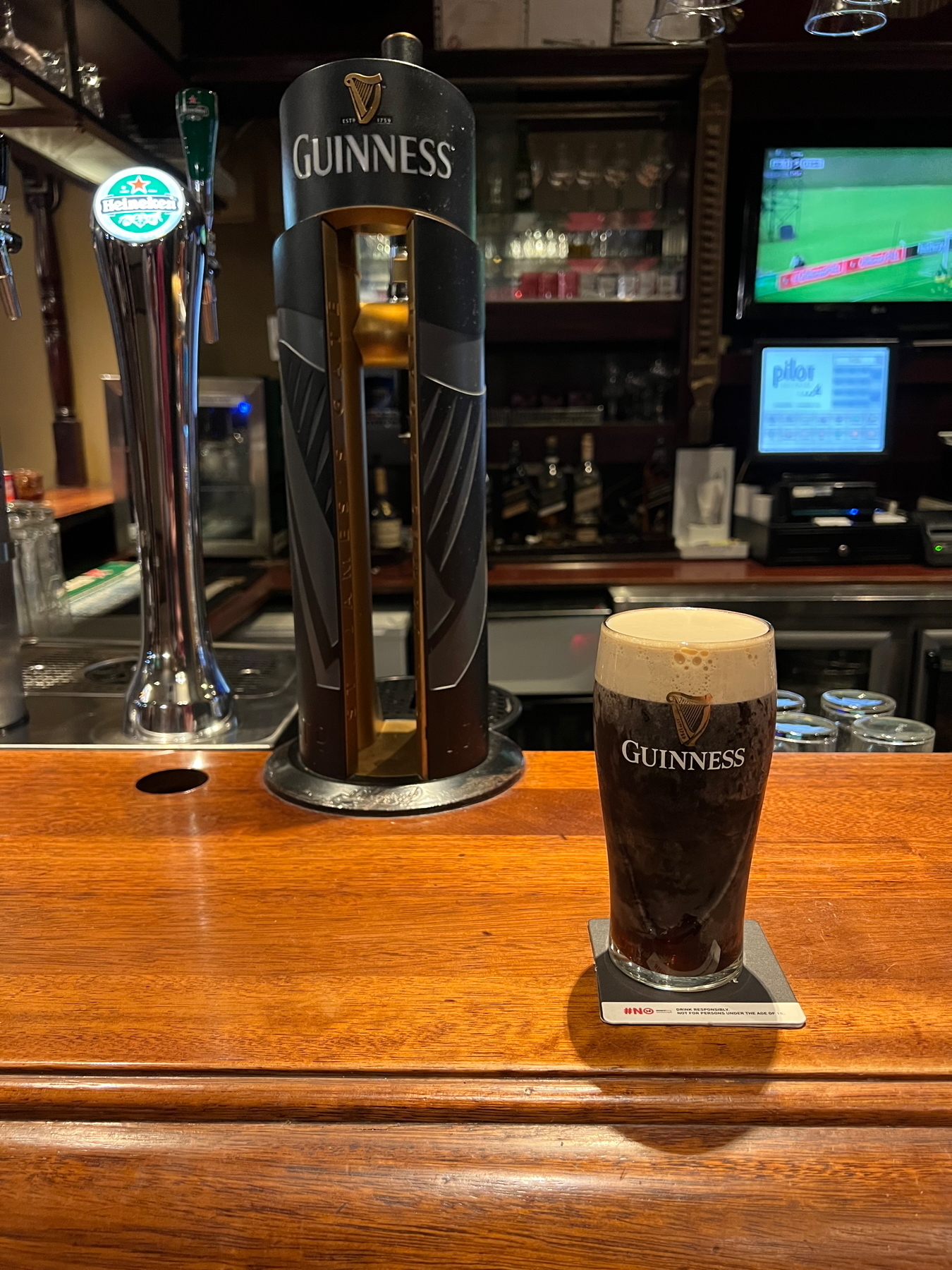
Edit: So…this Guinness is terrible. We weren’t sure if it was just a keg gone bad, icky lines, or just how it tastes down here.
The answer: “Instead of barley, it’s typically brewed with maize or sorghum, which produces a more bitter taste compared to barley.”
Hluhluwe-iMfolozi National Park, South Africa
Photos from our visit on Friday to the Hluhluwe-iMfolozi National Park, a 230,000-acre preserve about 3 hours north of Durban, South Africa. Established in 1895(!), it’s the oldest nature reserve in the country, the only state-run park in KwaZulu-Natal where each of the big five game animals can be found, and is home to one of the largest populations of white rhino in the world.
This was another private game drive (perhaps our last of the trip?) and we especially enjoyed seeing the monkeys and the watching the elephant browsing on the tree in front of us.
-S 🇿🇦
A young baboon attempts to climb, but doesn’t get too far.
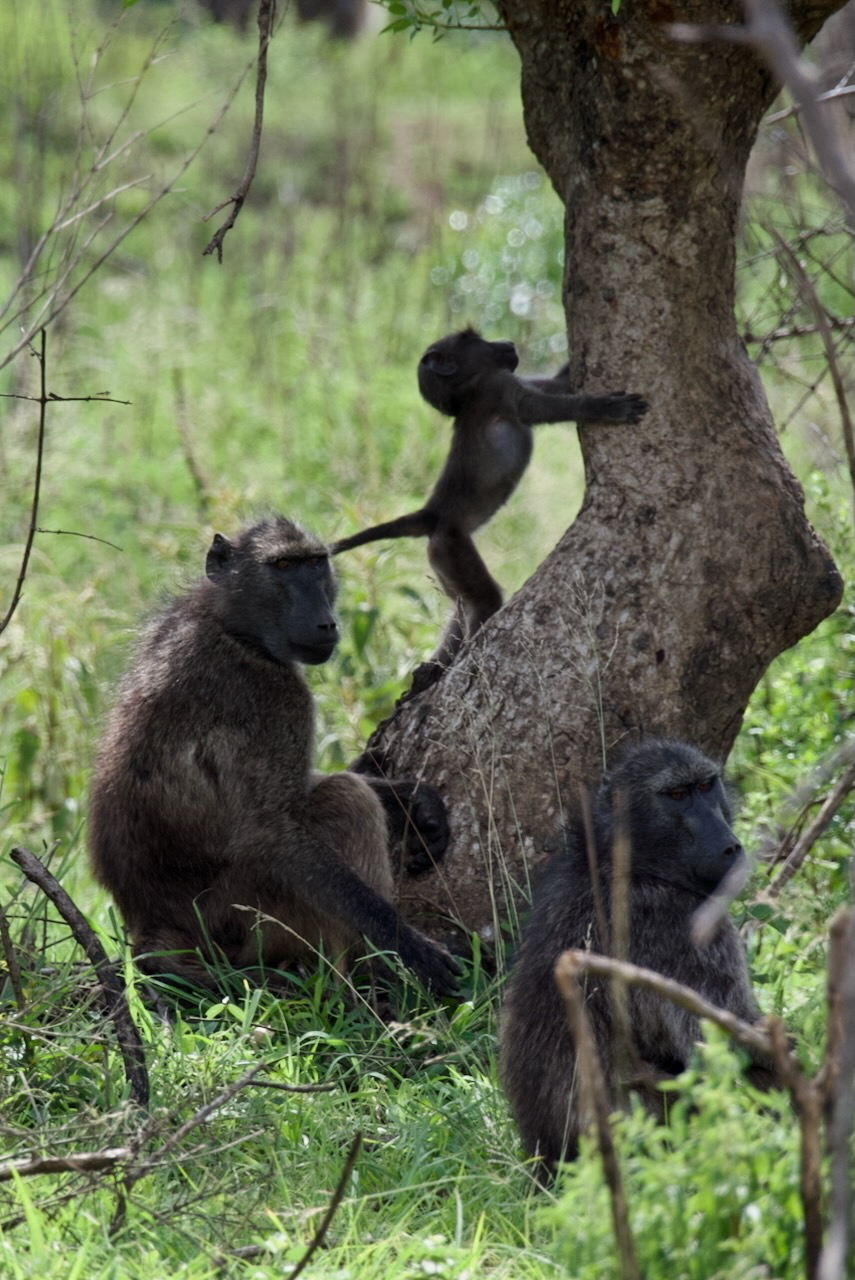
Warthog through the brush
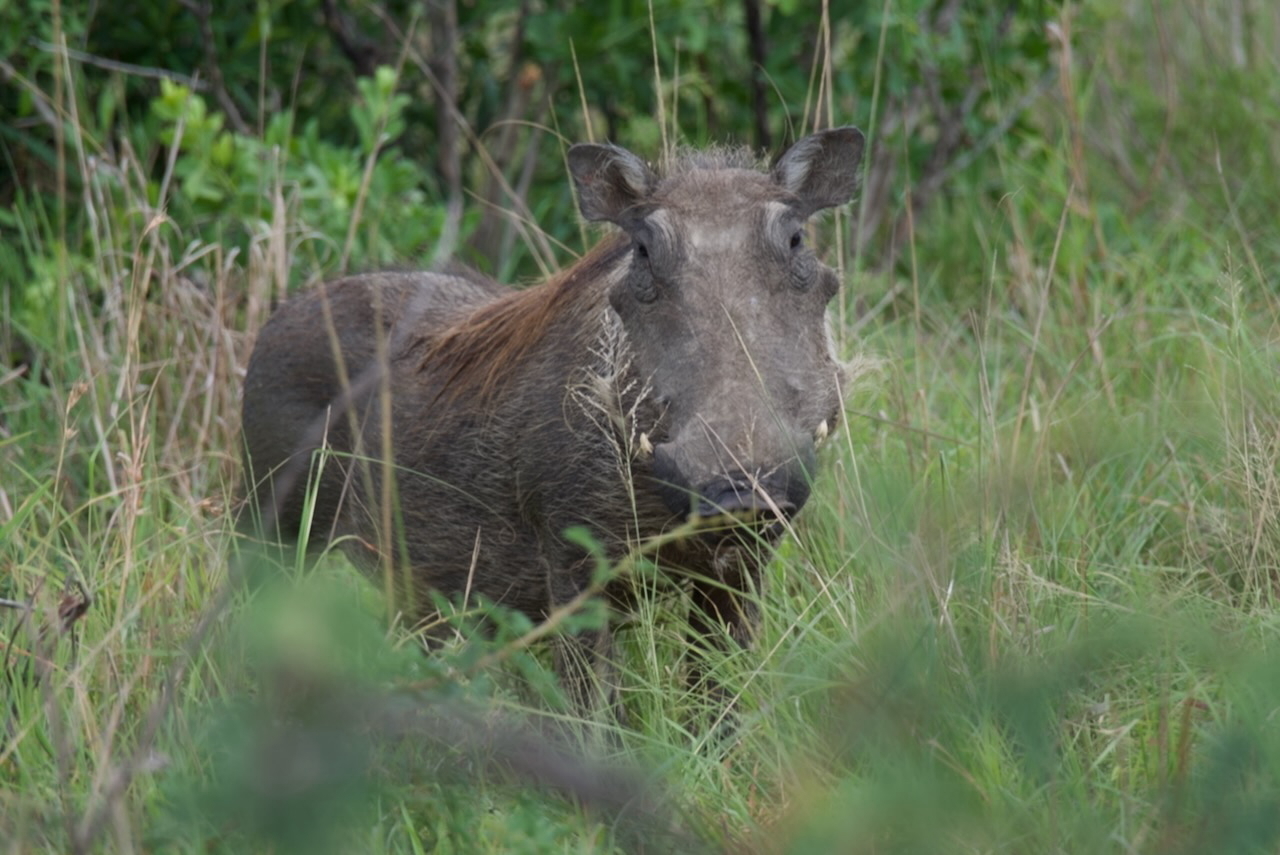
Being stared down by an elephant
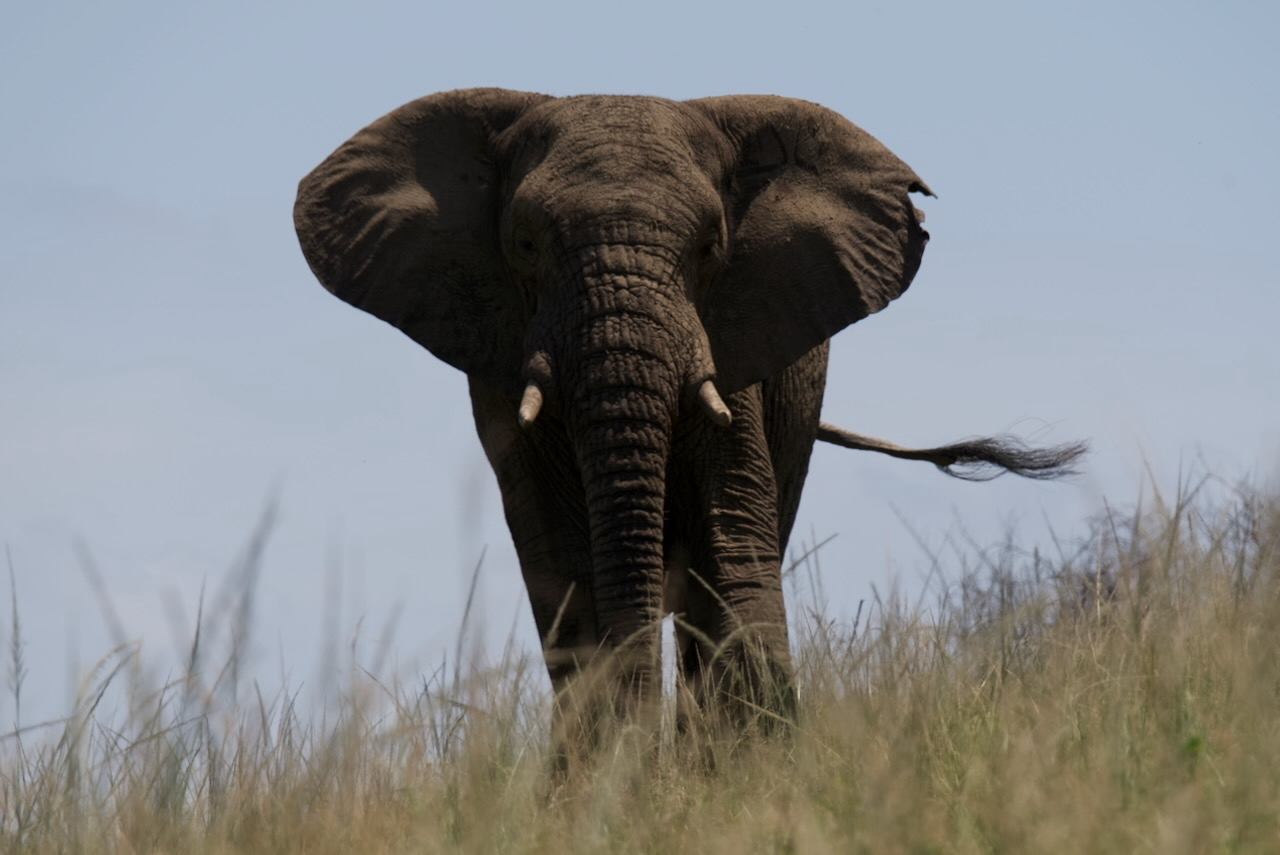
This lonely tree just screams African safari, doesn’t it?

A matter of scale.
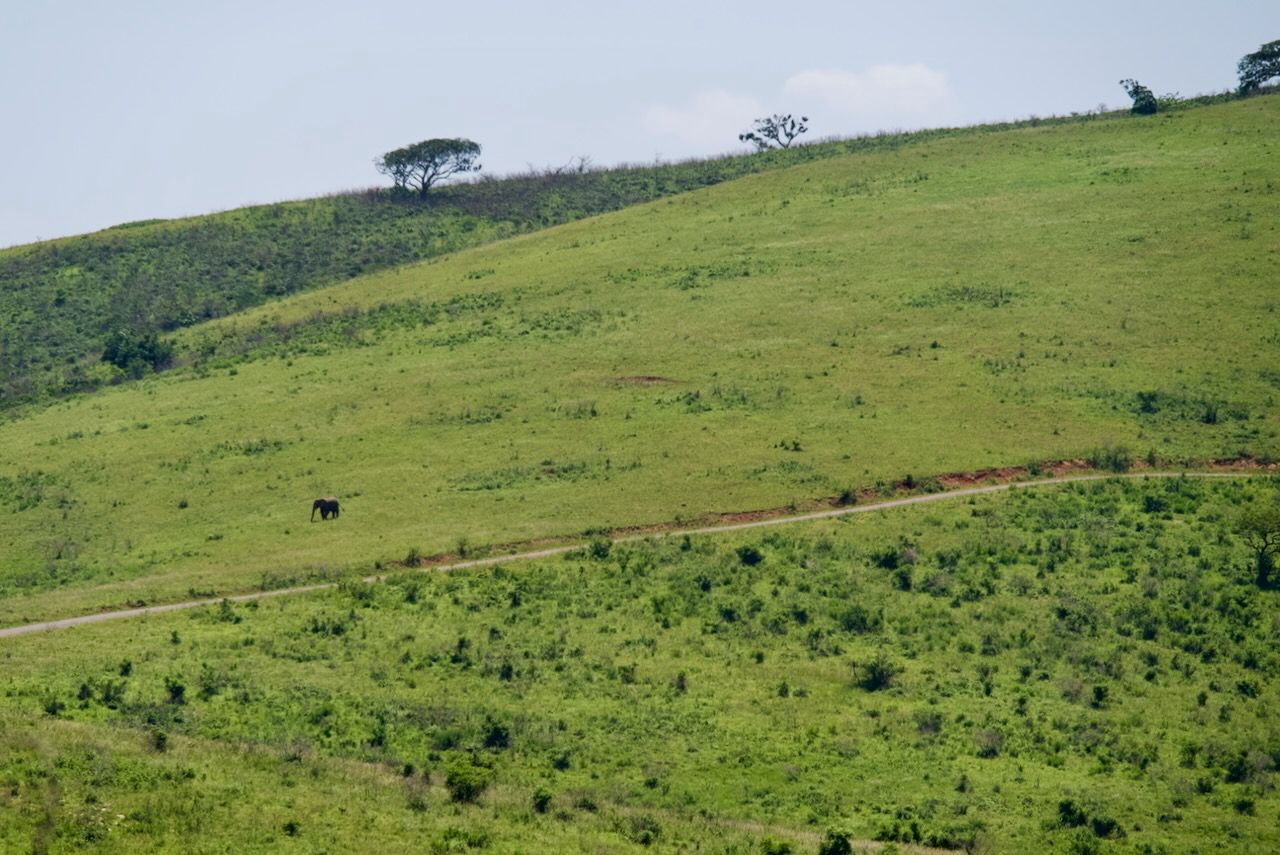
The elephant spotted above.
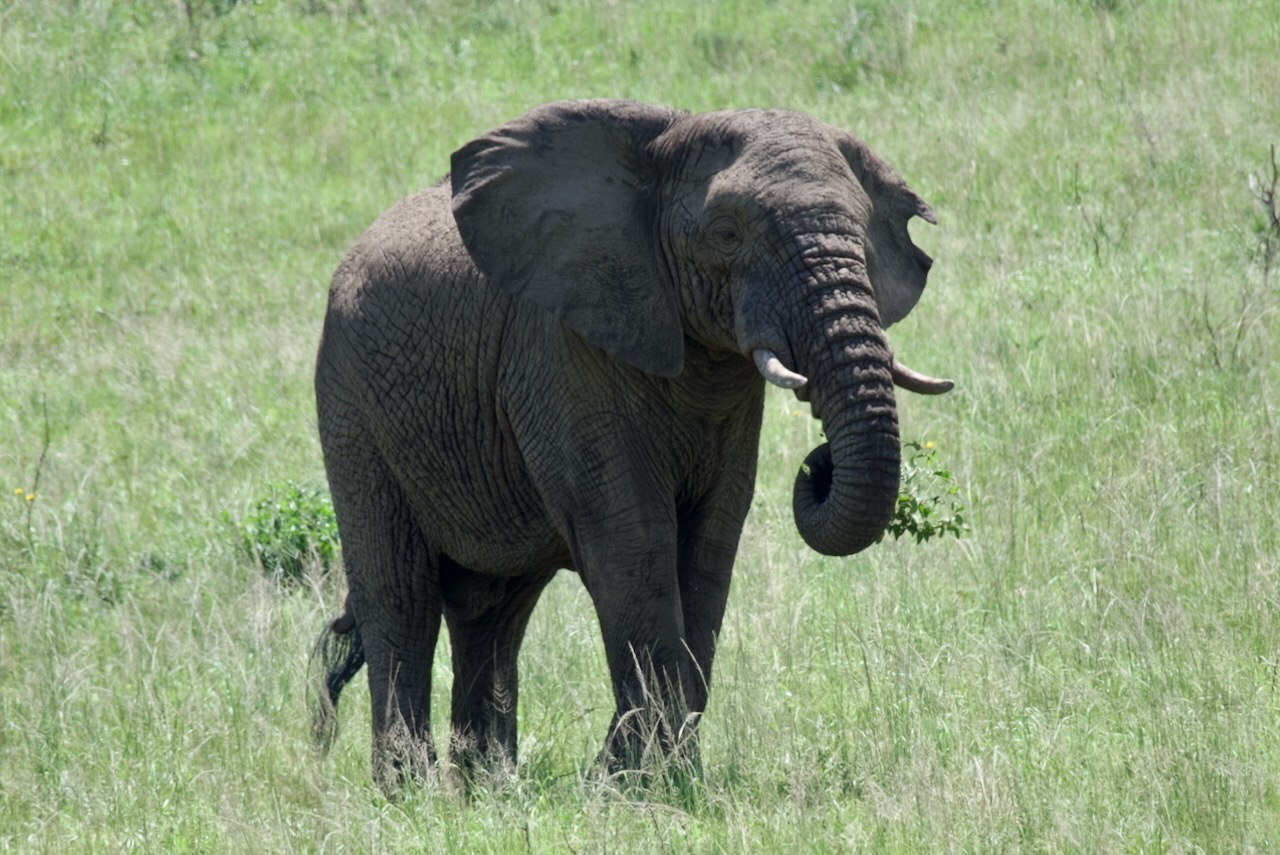
Views ahead.
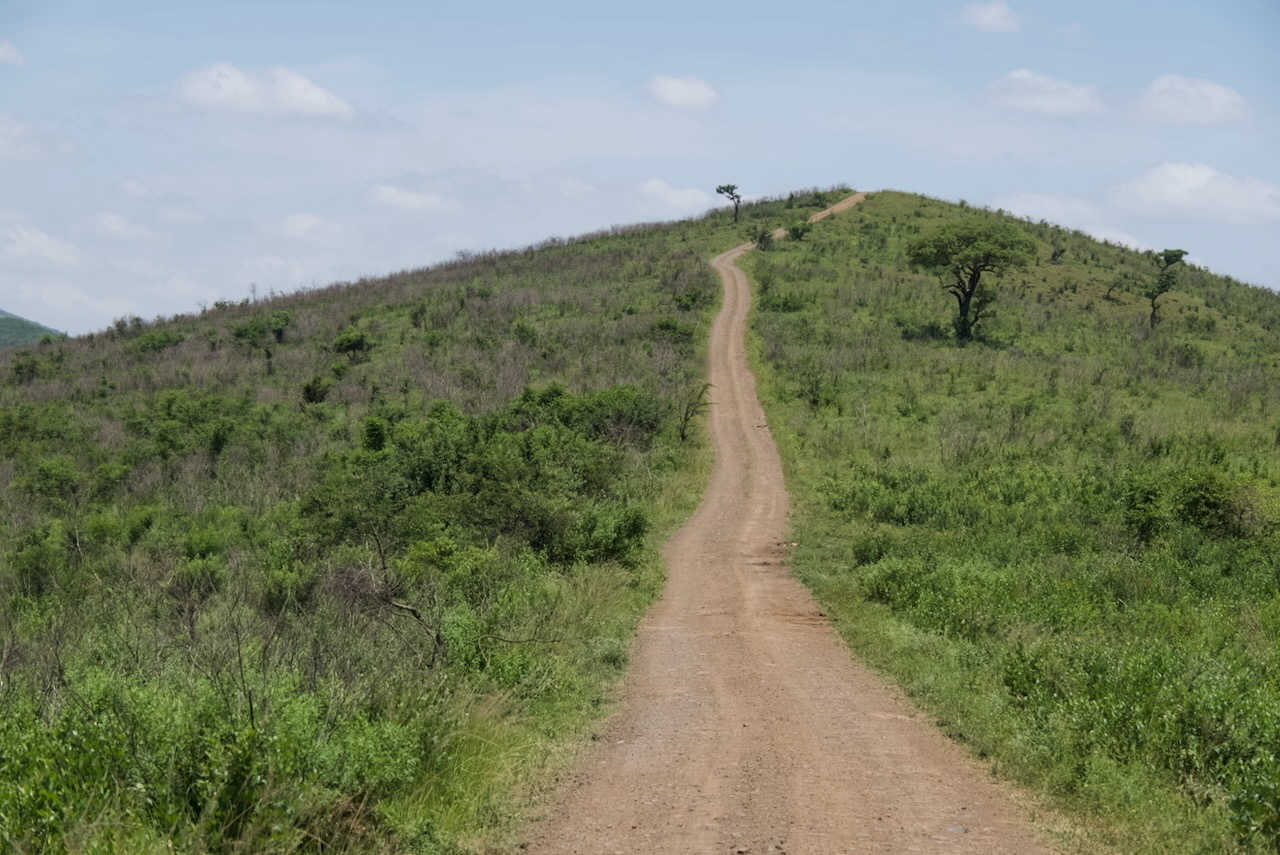
On our Zoom update, Matt asked how close the animals were. It varies, of course, but here’s a good example. This shot is 130mm (for comparison, an iPhone’s 1x lens is 24mm, and its 3x lens is 77mm).
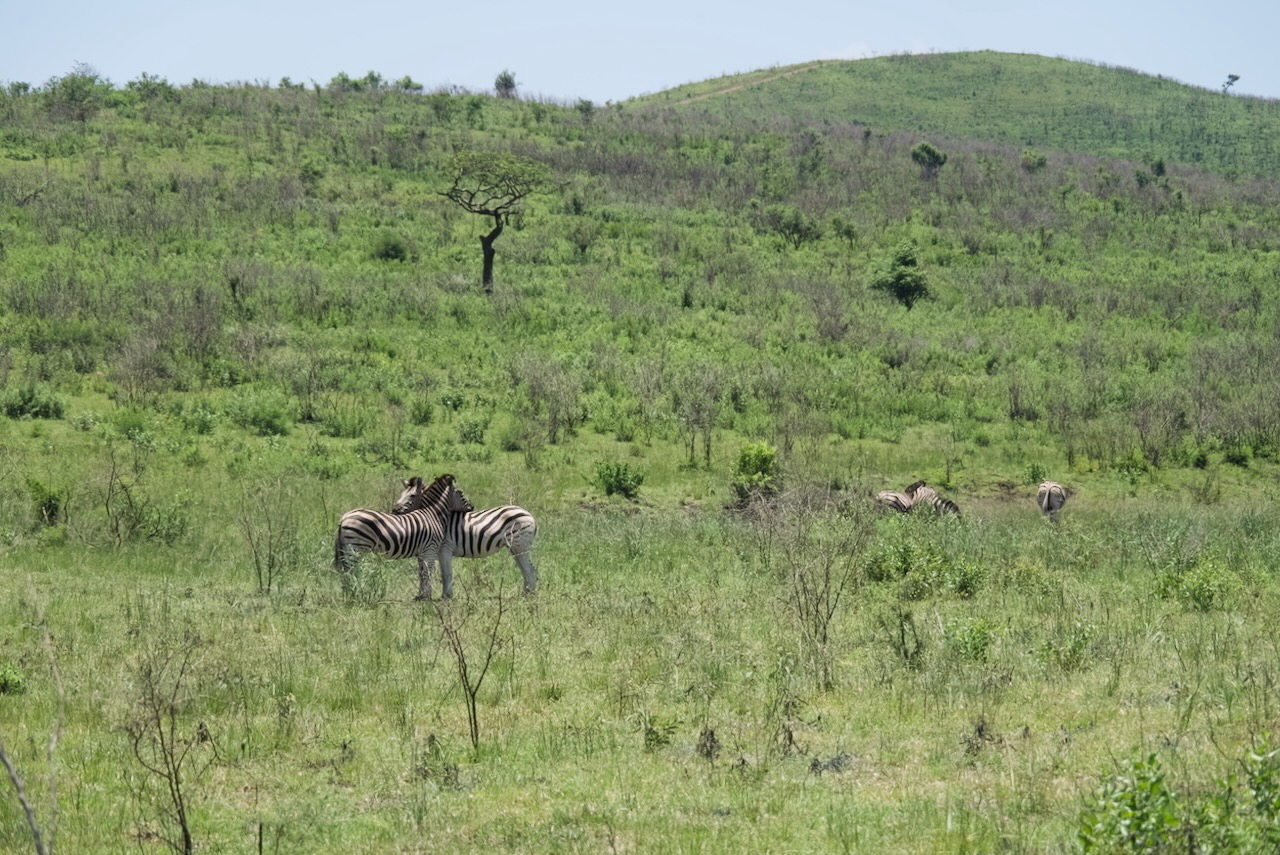
This tighter shot is 400mm, though I may have cropped further. So you can see that the lenses we brought really make a difference. By the way, these zebras are “hugging” as a way to keep an eye out for danger in both directions.
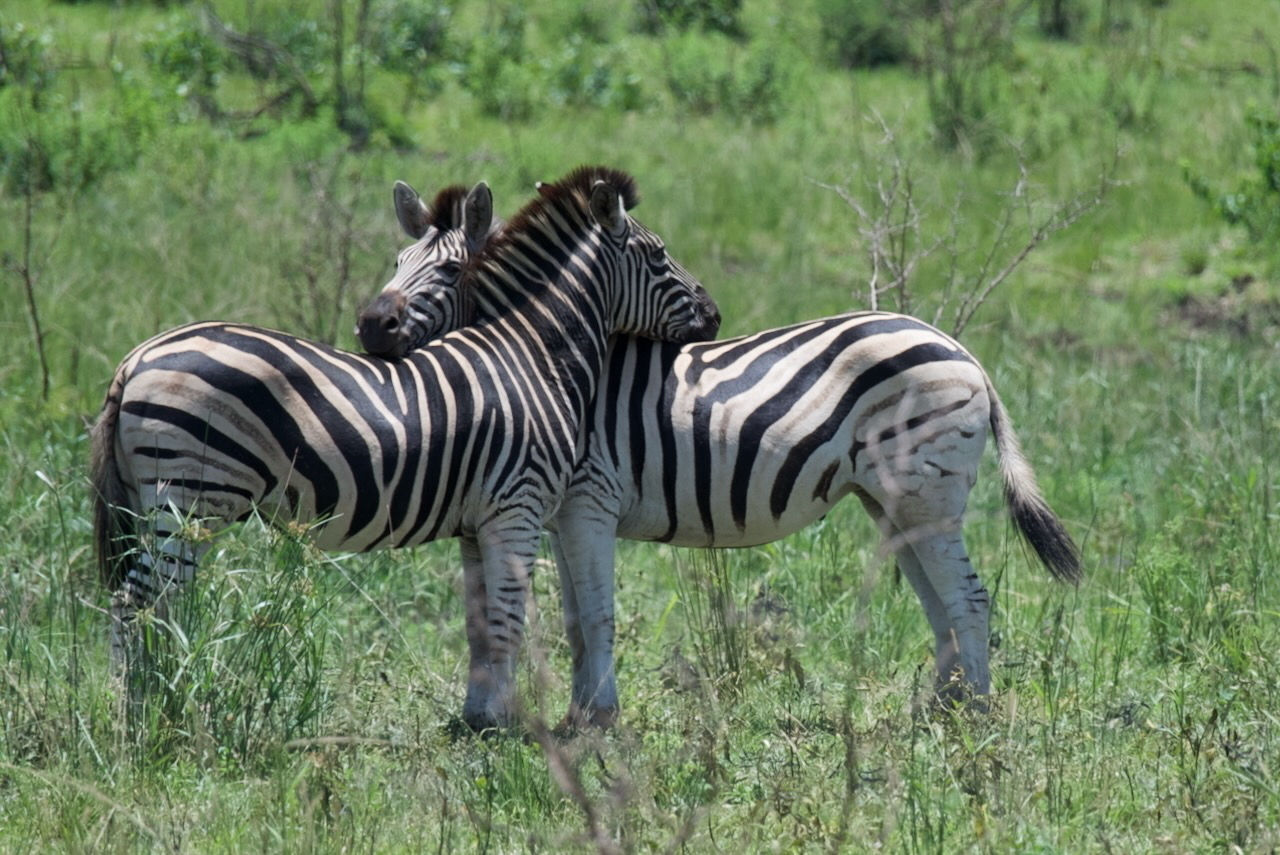
A water buck posing for us from the shade of a tree.
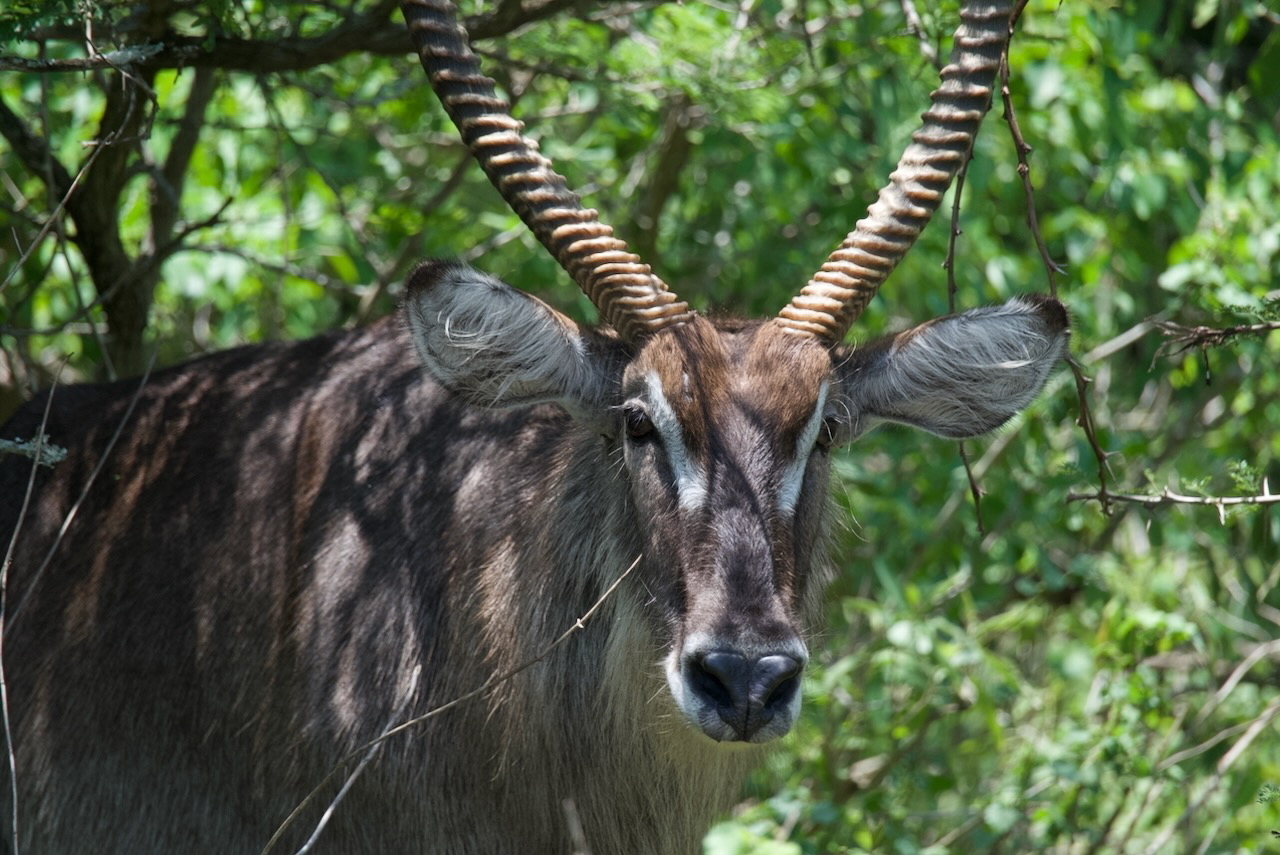
We had an excellent experience with this elephant, which spent quite a bit of time browsing from this acacia tree.

About halfway through his lunch, he casually crossed his back legs.
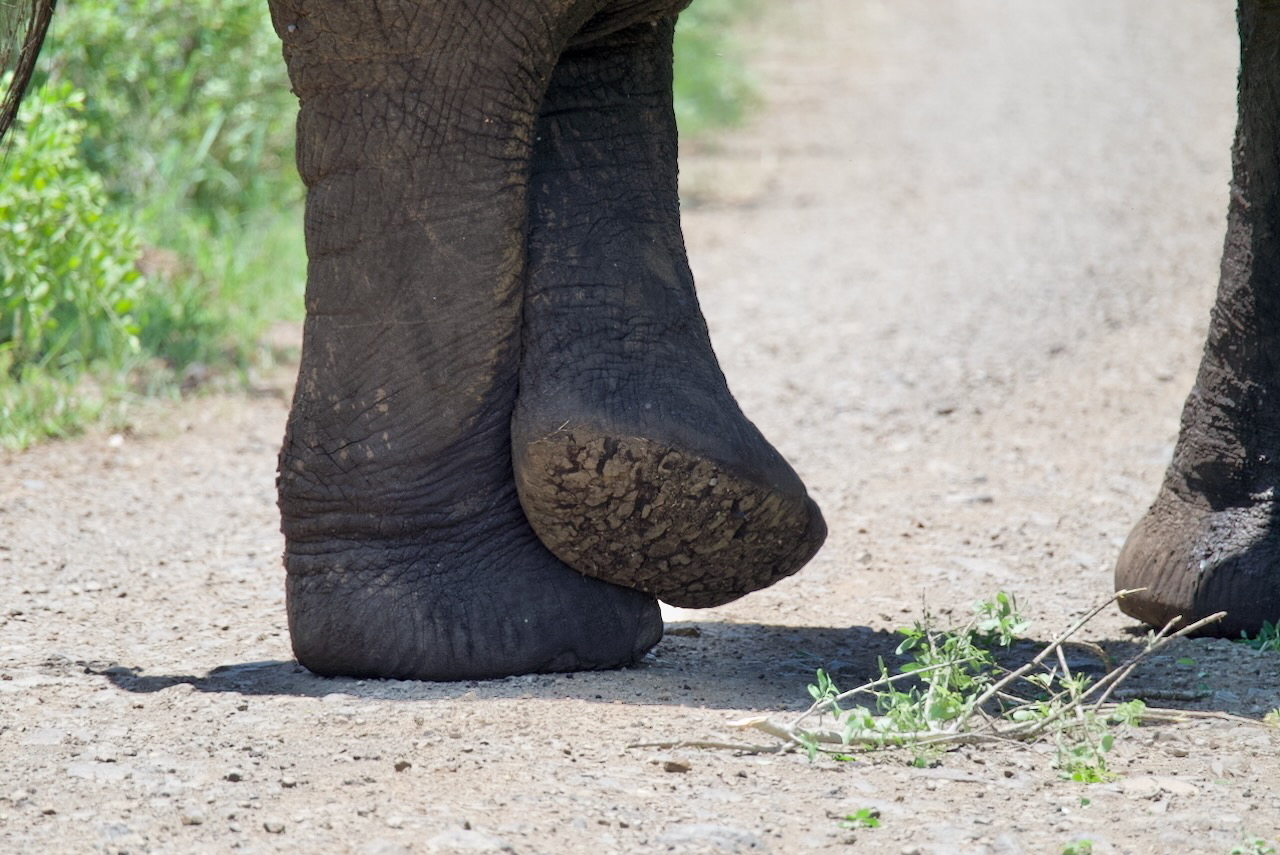
Here’s a short 94 second video clip from the encounter
Some young warthogs, wondering if we’re safe enough to allow them closer to the mudhole or not.
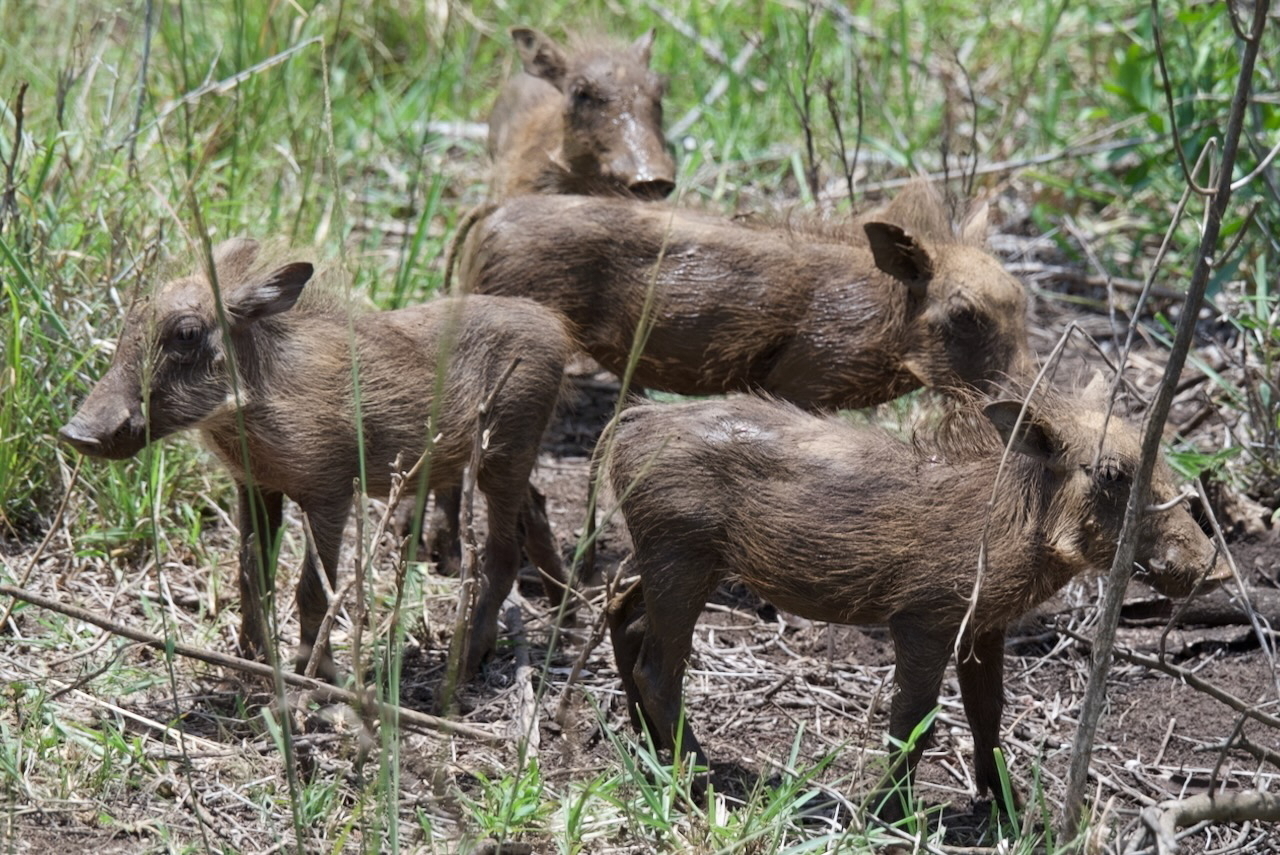
There’s a hippo in the middle of this river, though it’s a bit hard to tell.
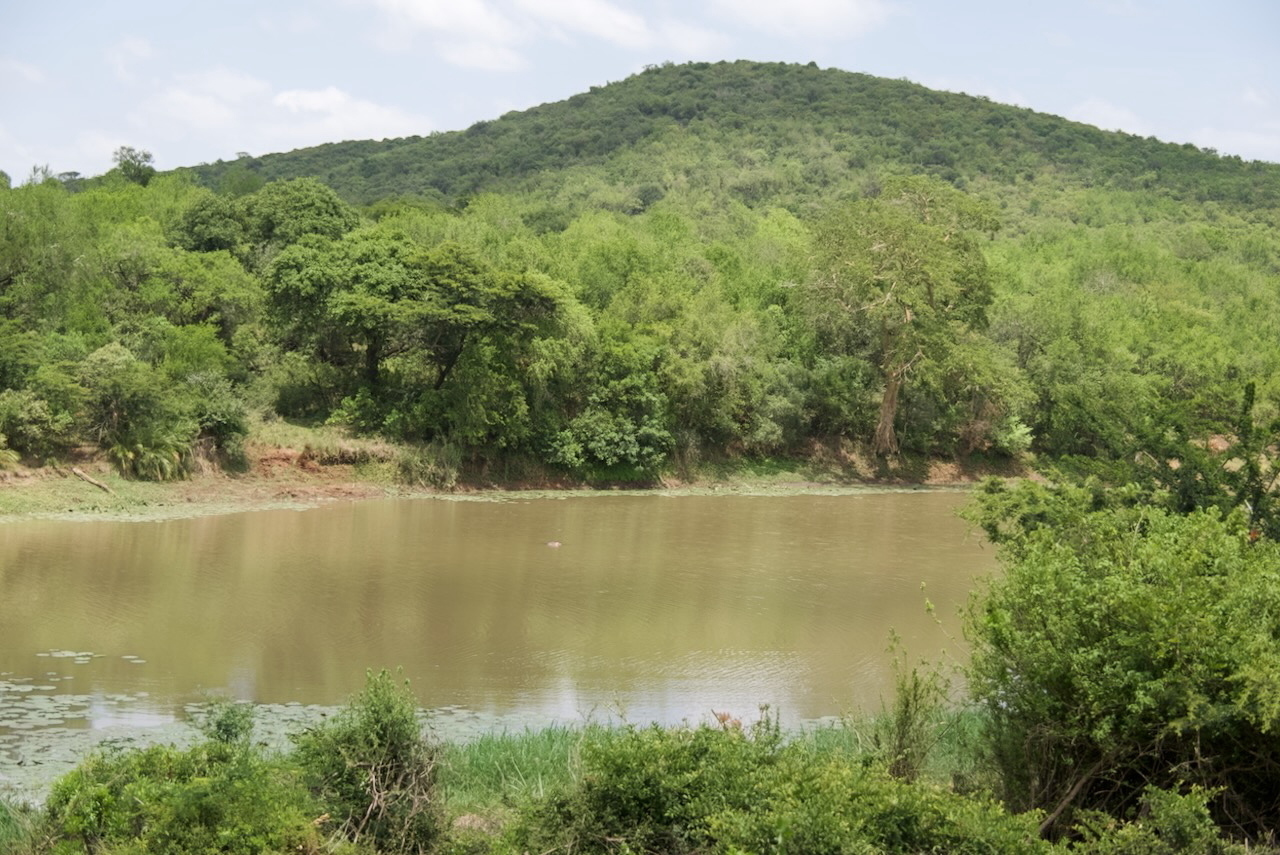
A vervet monkey running away once I was spotted.
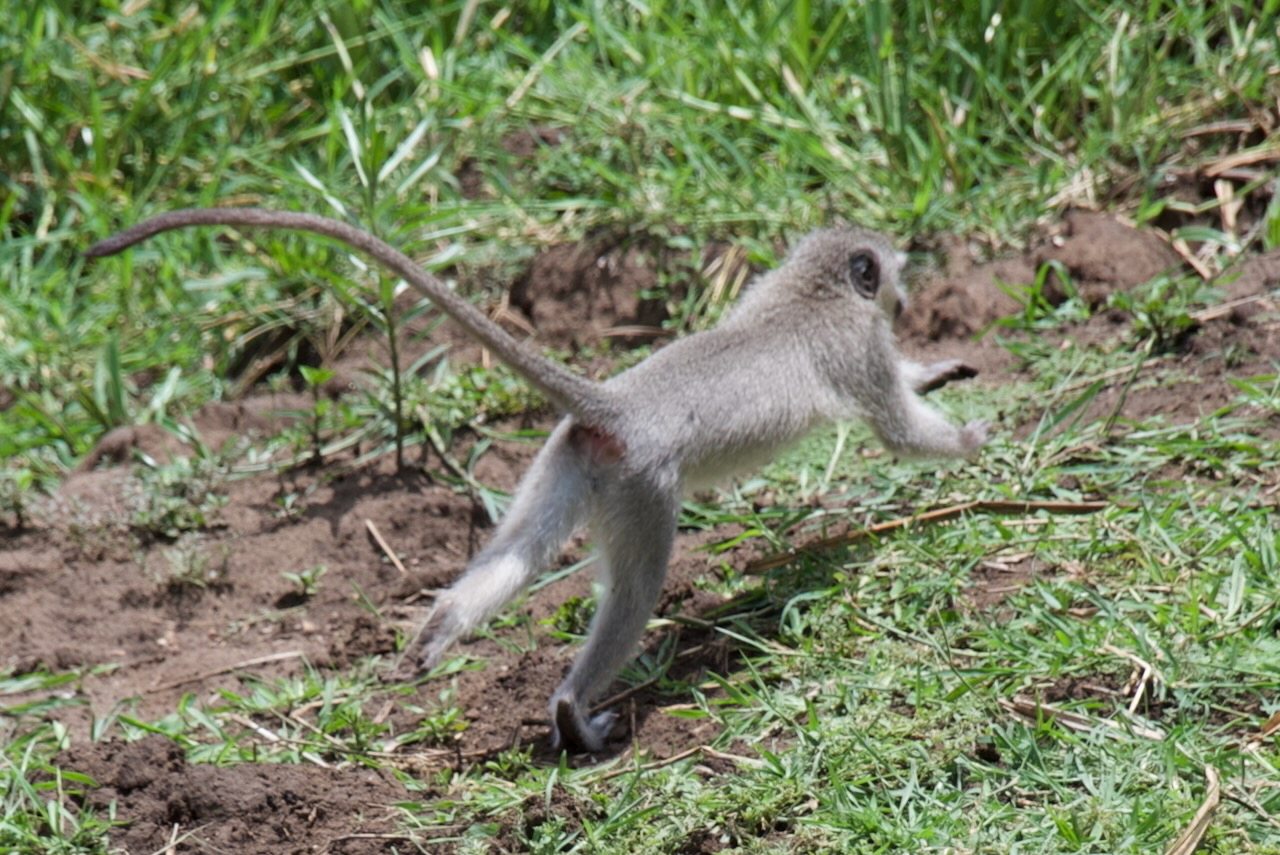
The “toilet seat” butt of a water buck
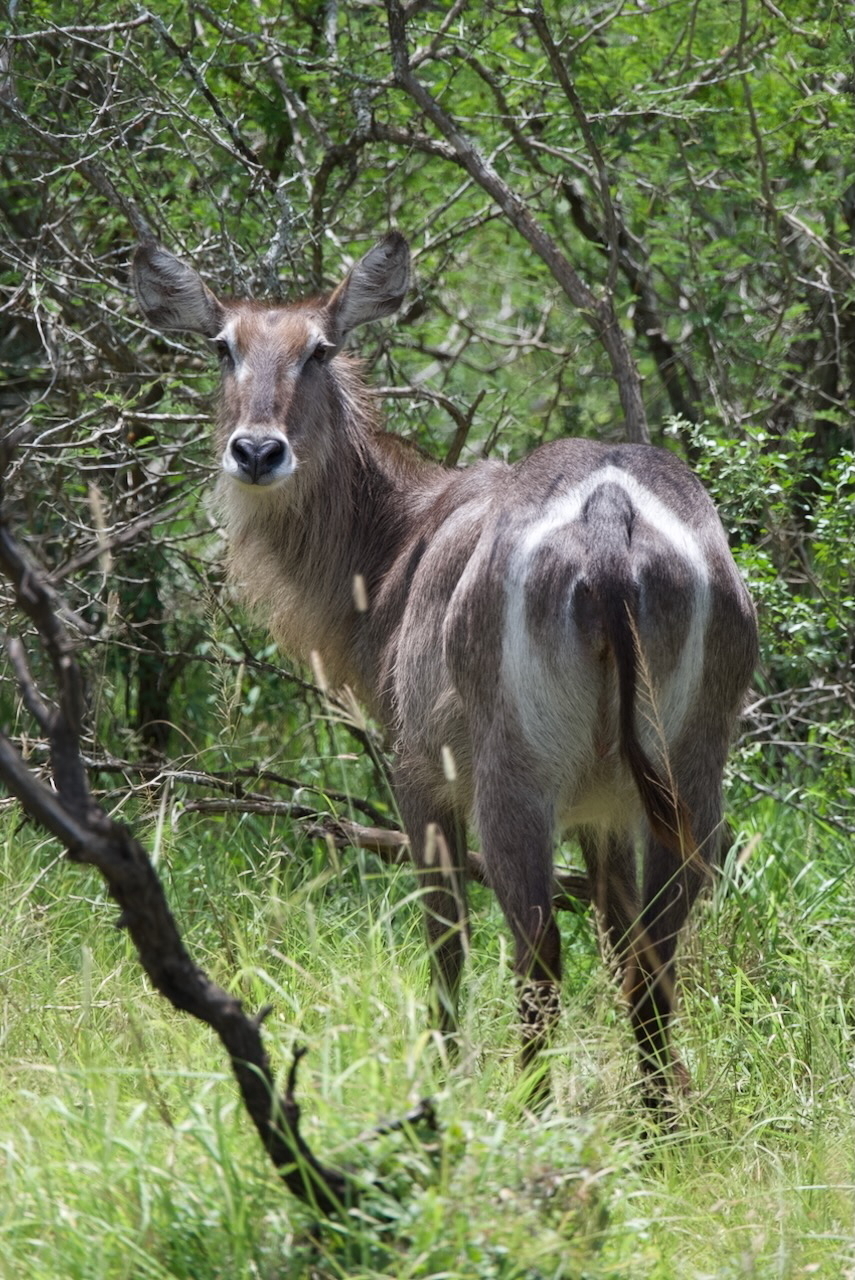
Loved this little pin-tailed whydah; it seemed to struggle to fly with its crazy tail feathers.
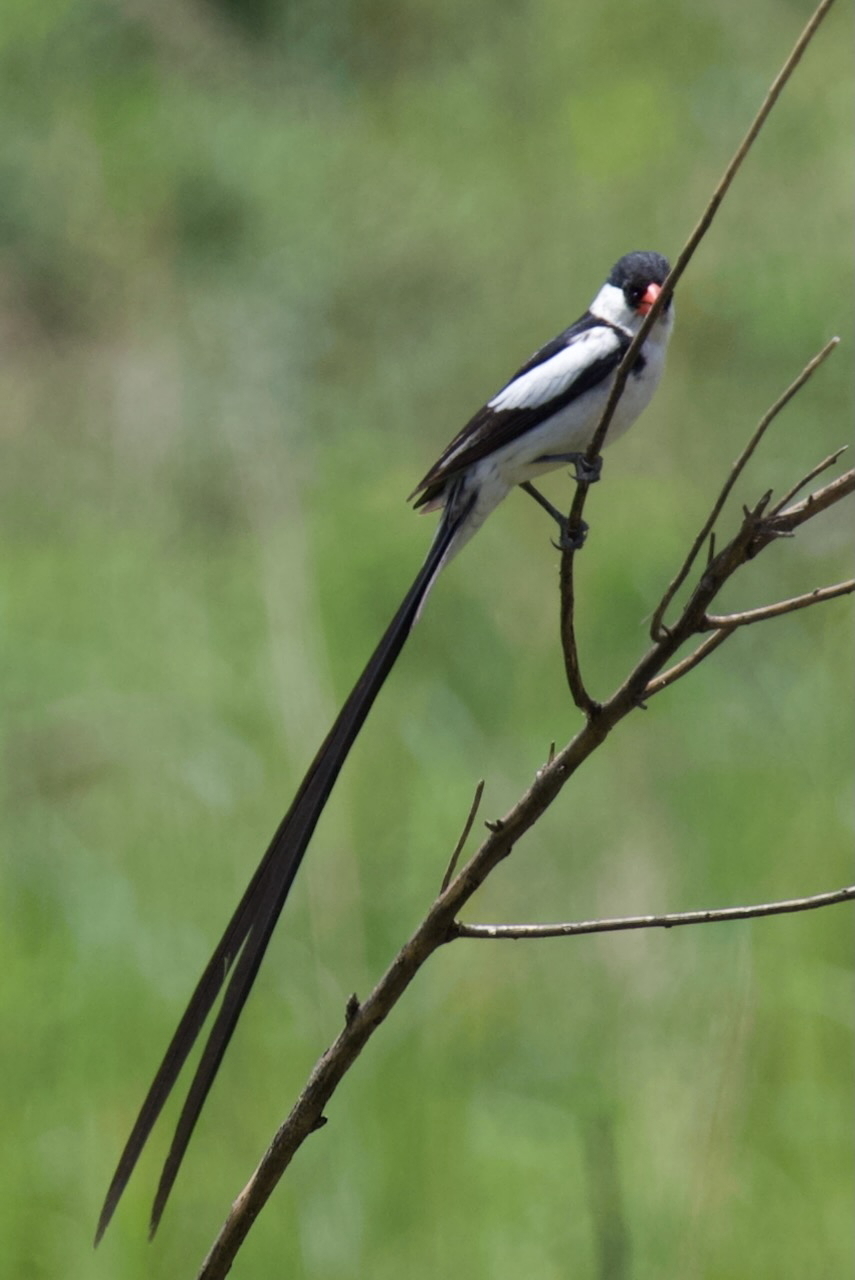
A warthog, looking guilty of something…
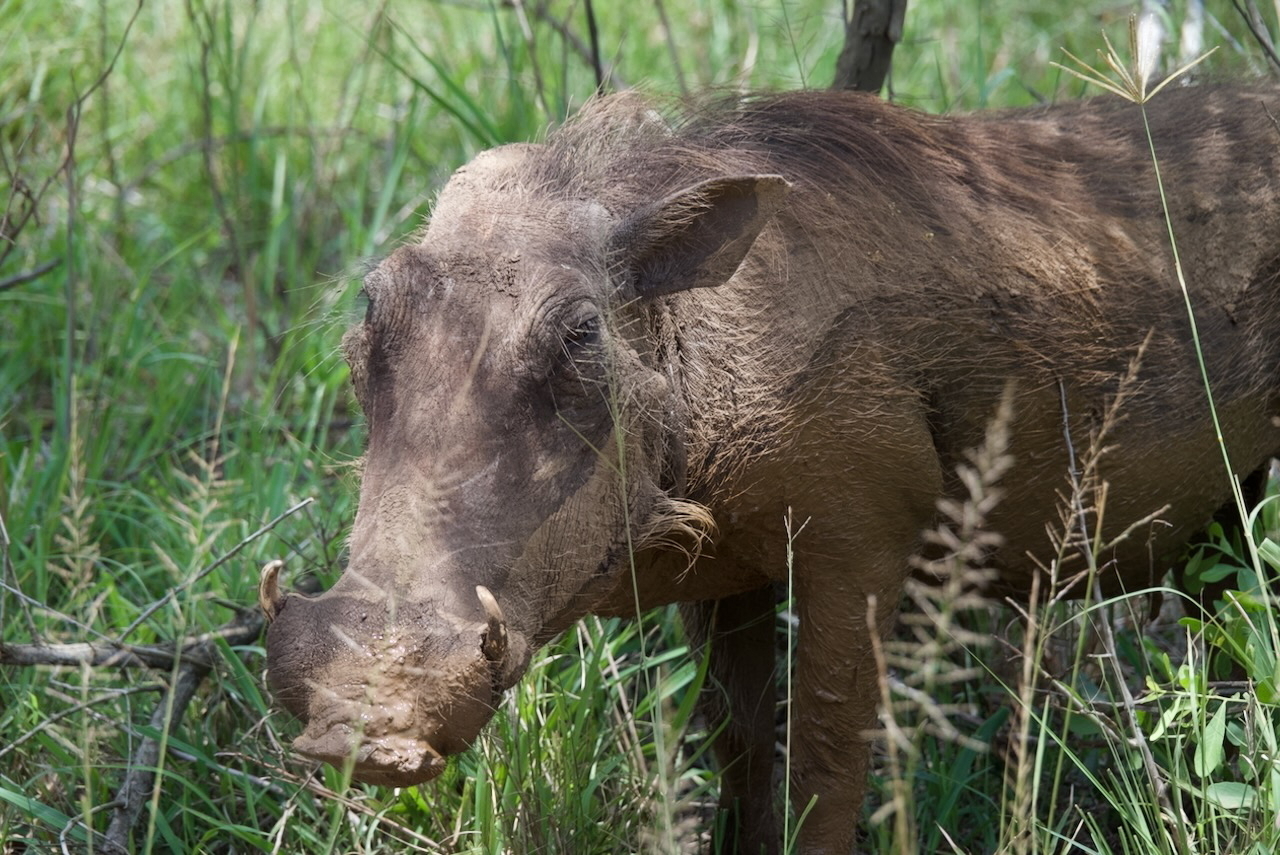
They have Pac-Man here! But they’re green instead of yellow, presumably for trademark purposes.

Some warthogs in situ
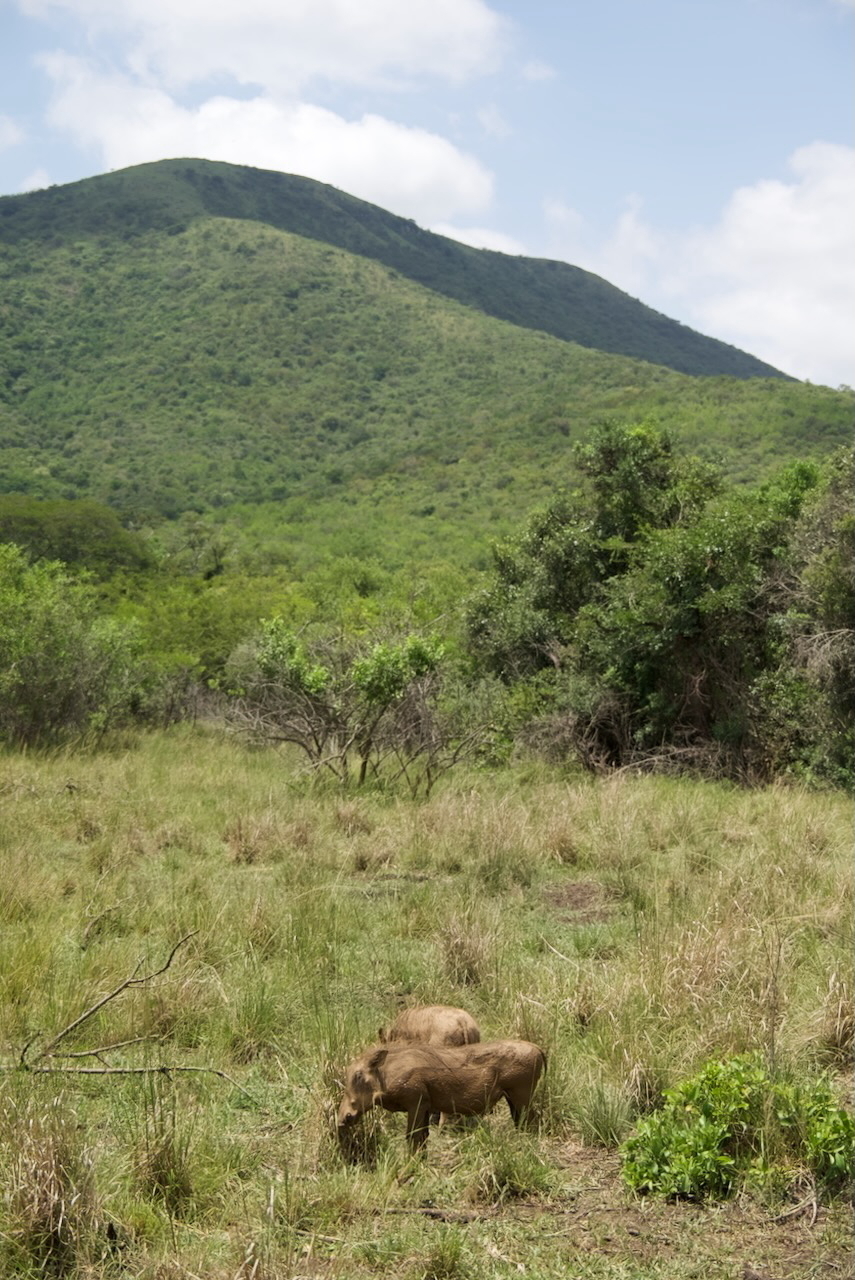
Baboons and a baby
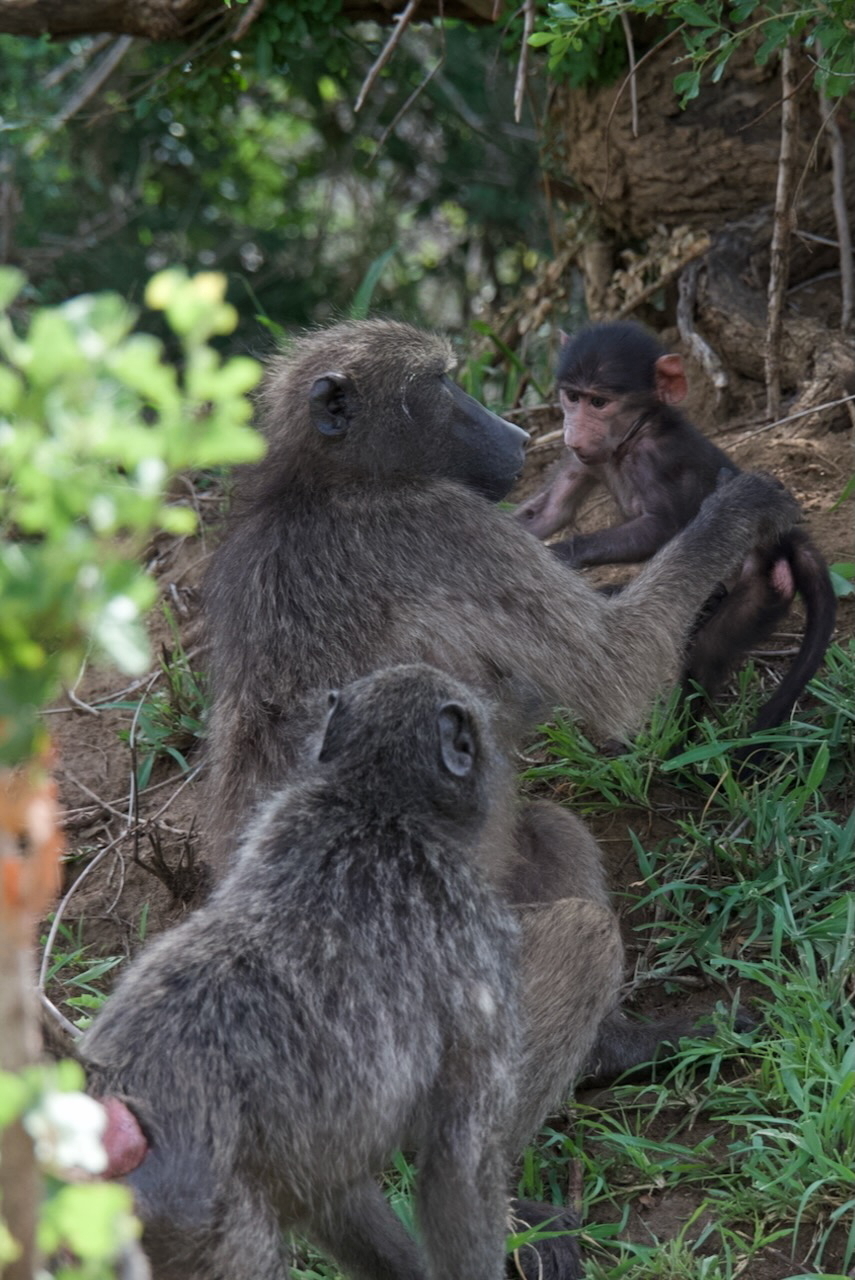
Baboon marooned in a tree
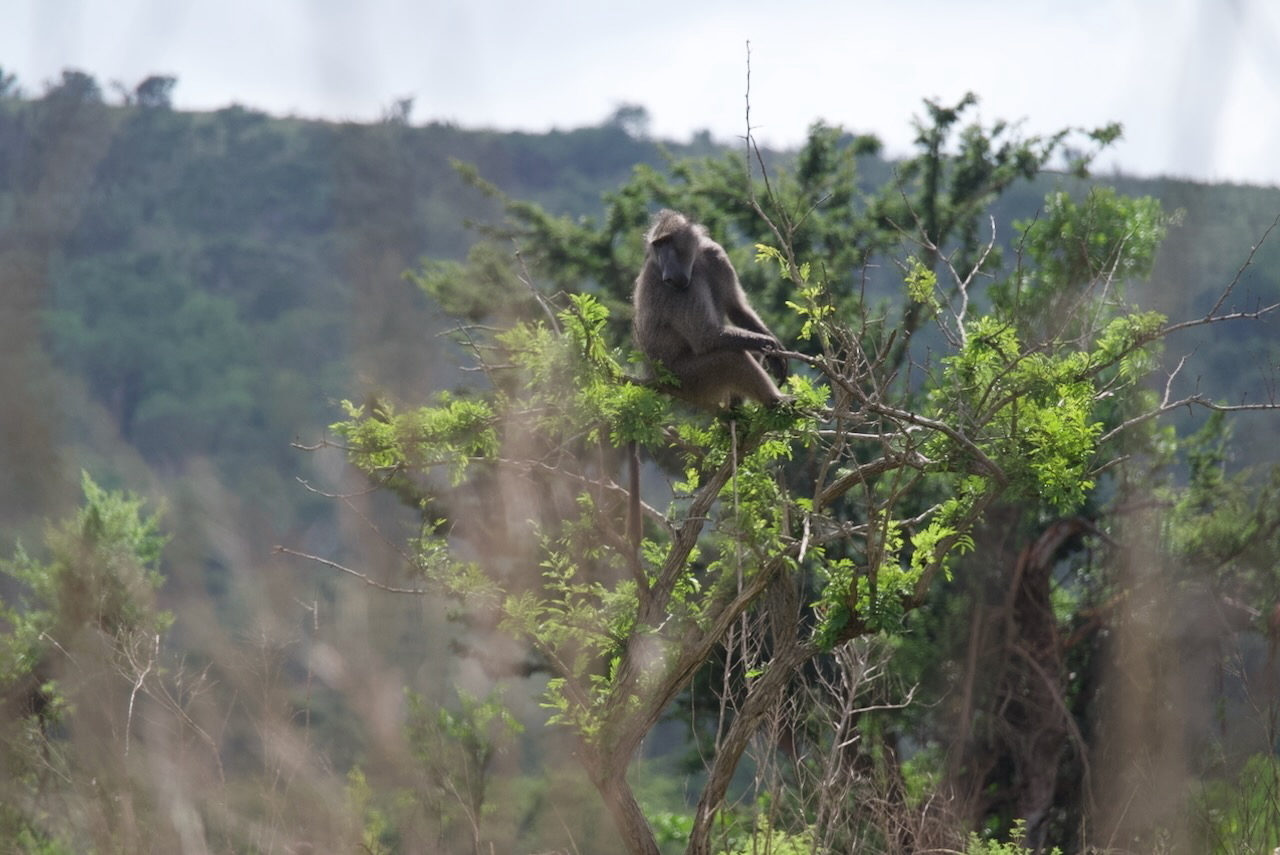
Yet another kudu
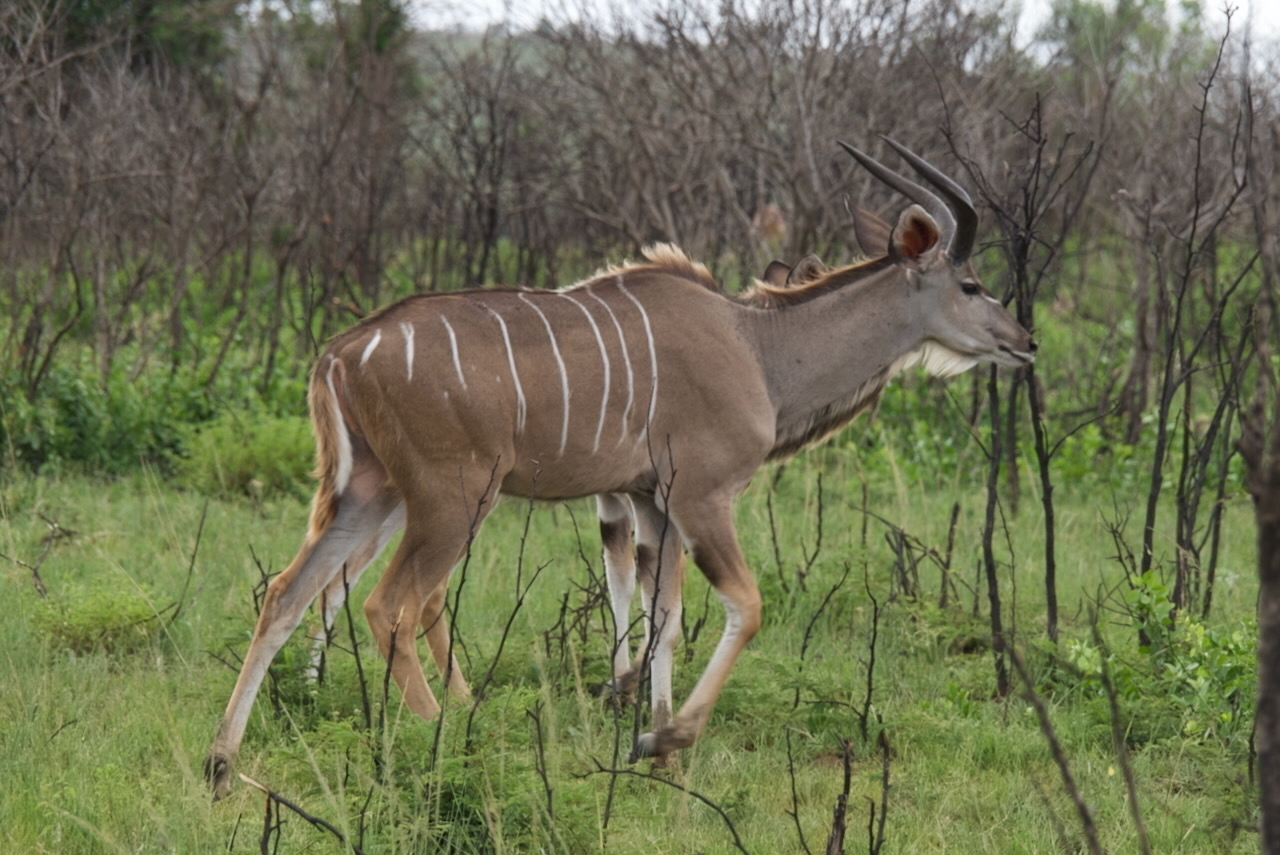
View of a river valley. The rivers have been quite low, which made it much harder to find some of the wildlife we were looking for
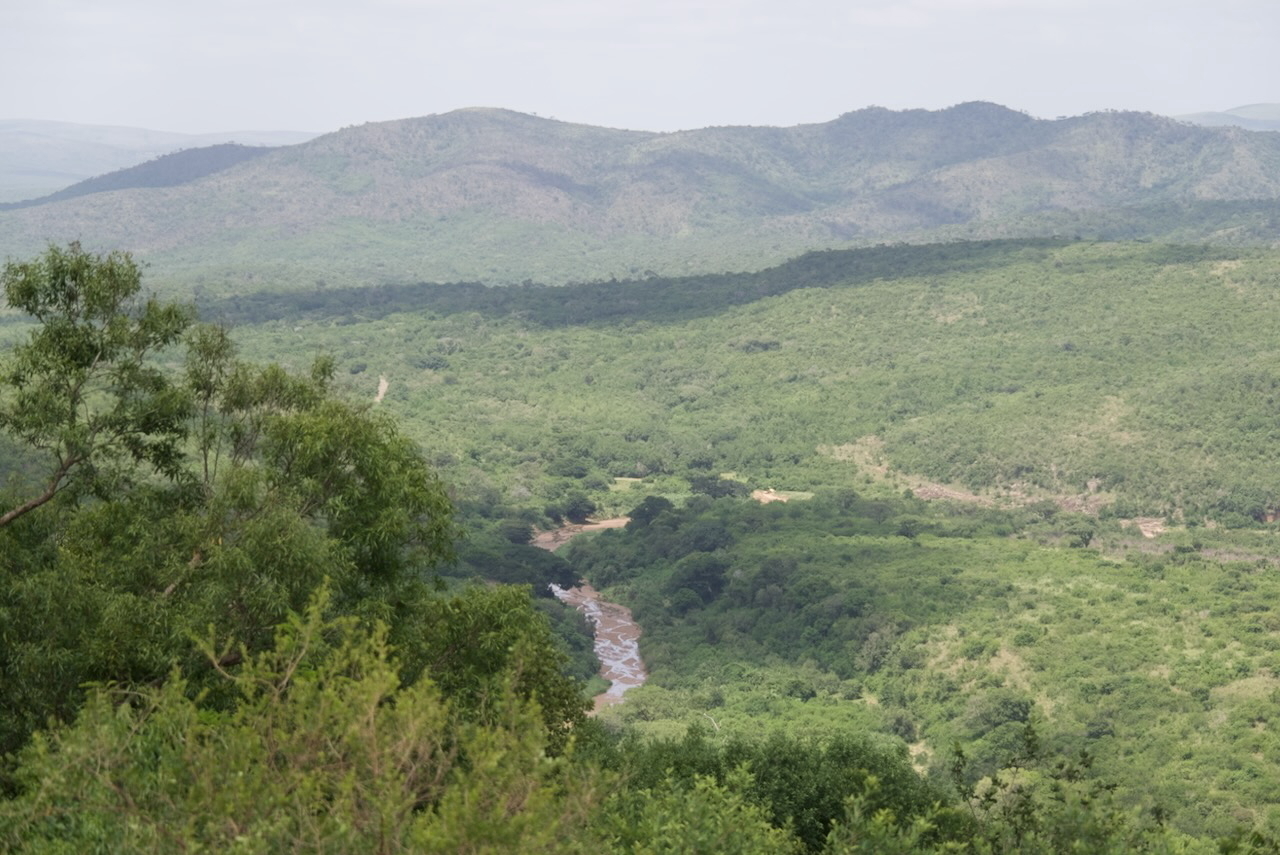
Awww shit! …it’s a photo about dung beetles.

Some cape buffalo
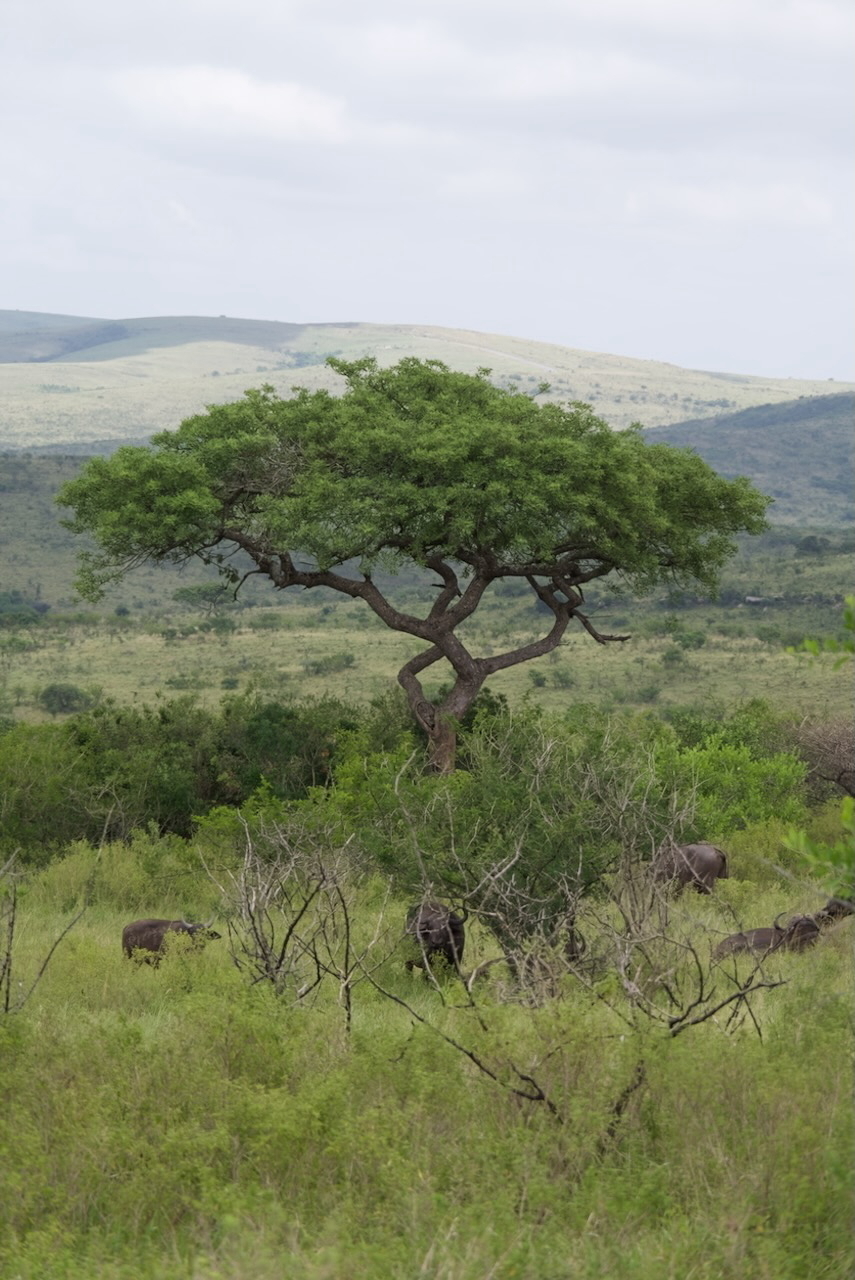
A baboon carries a baby

Yet another impala. Look, these damn things are everywhere.
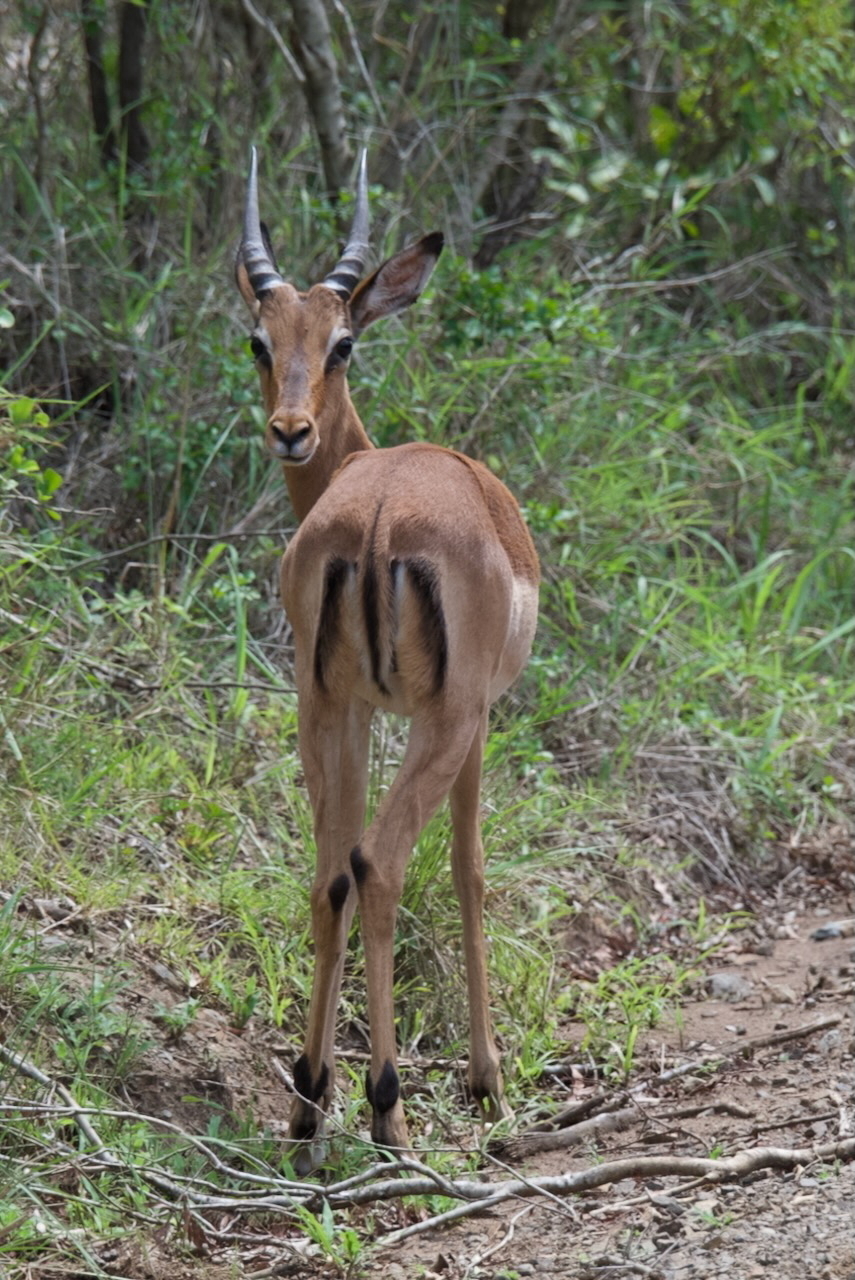
Our first nyala sighting
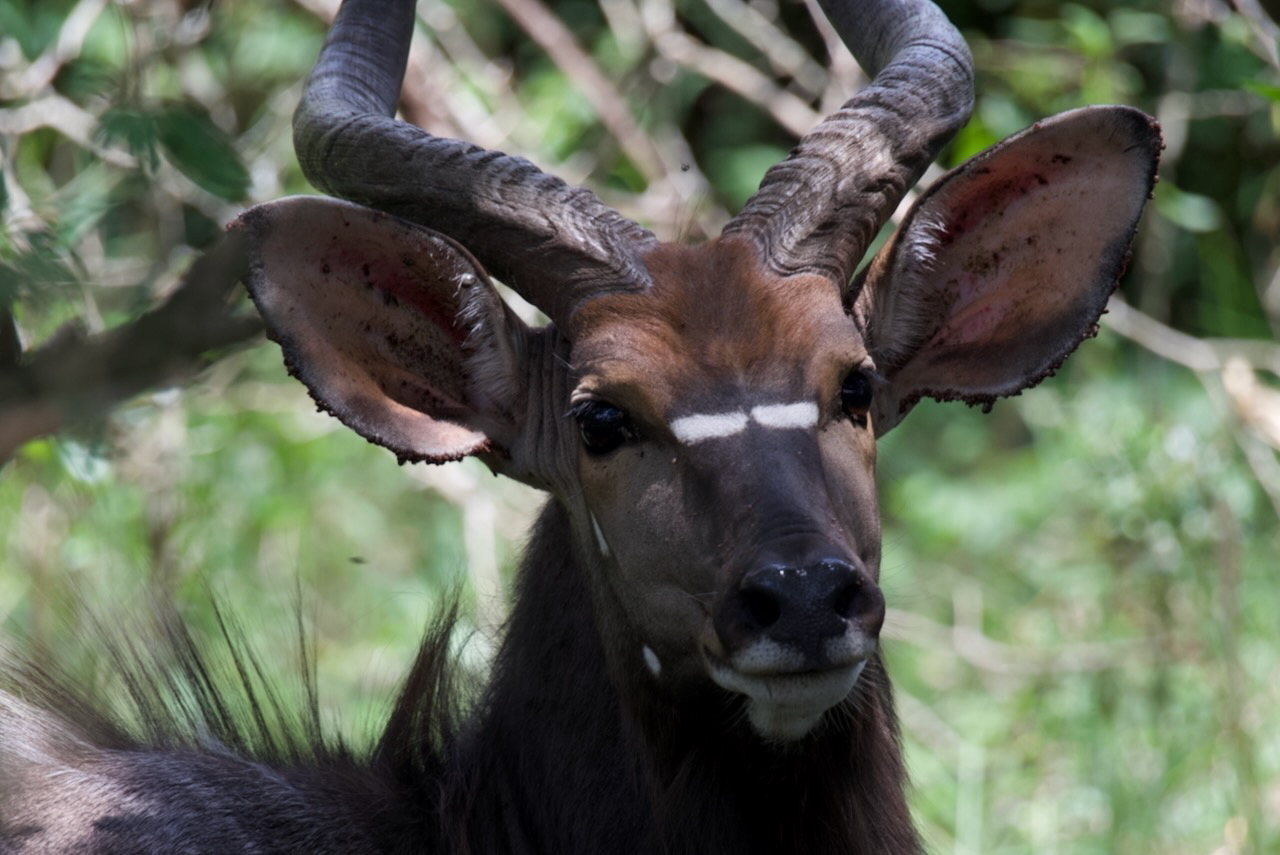
Young zebra nestling a parent
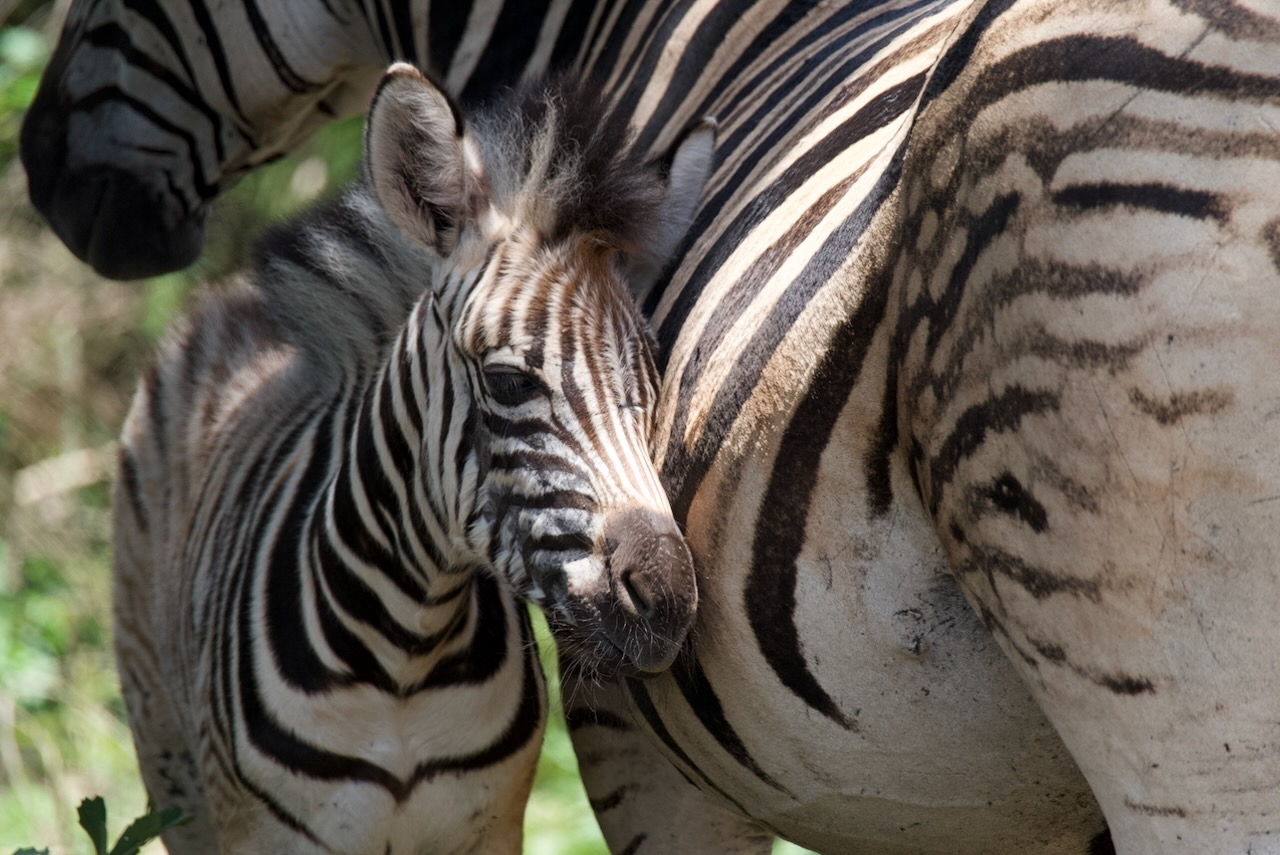
Just a shot of the landscape, for general context
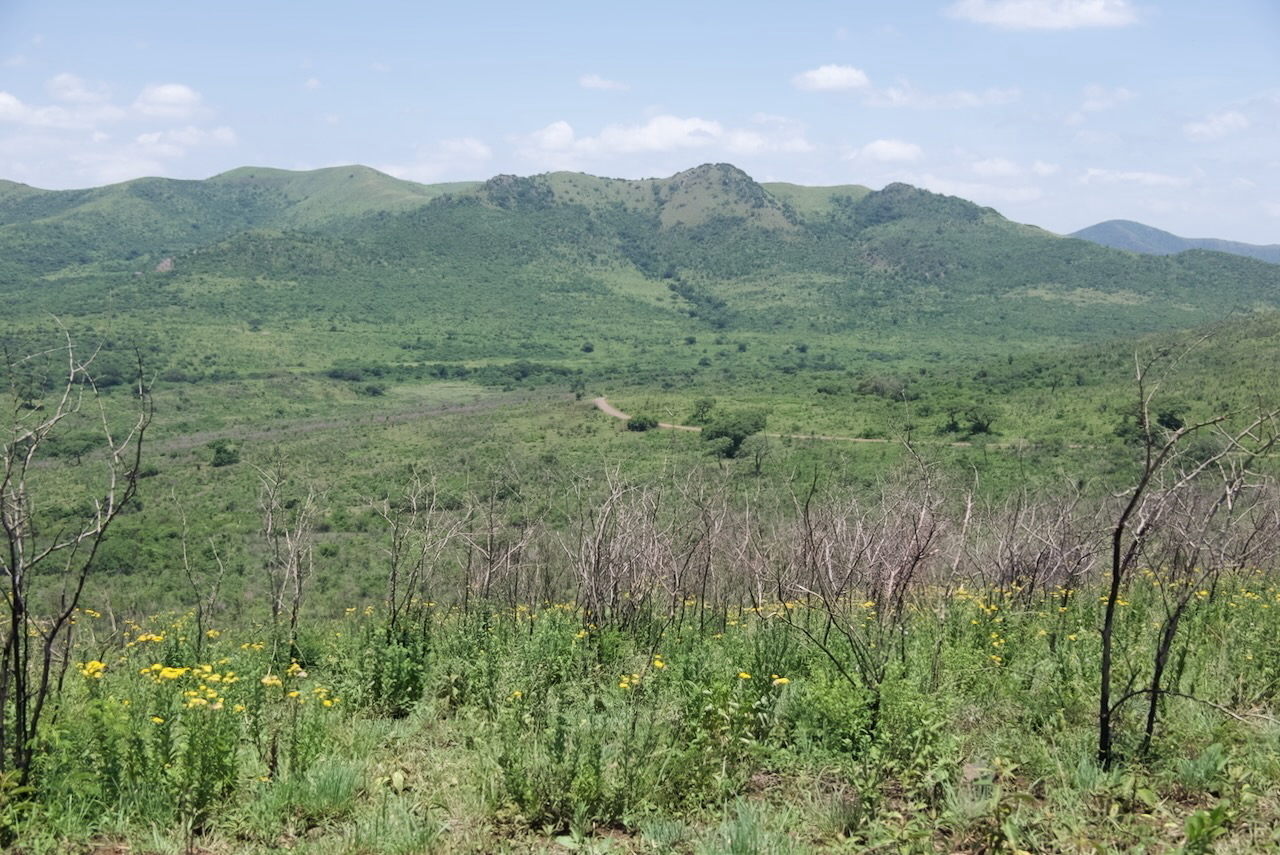
Two elephants blocking the road
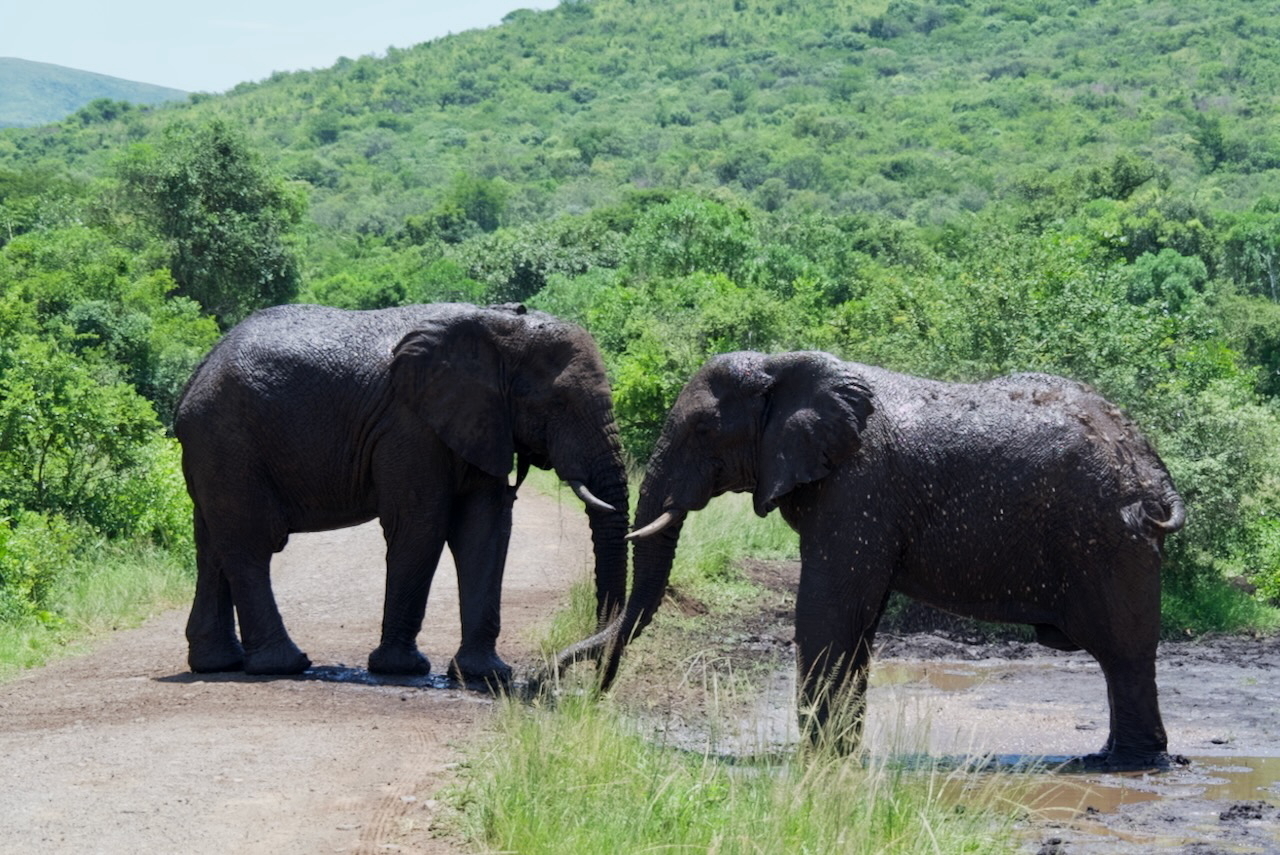
Elephant browsing on some grass
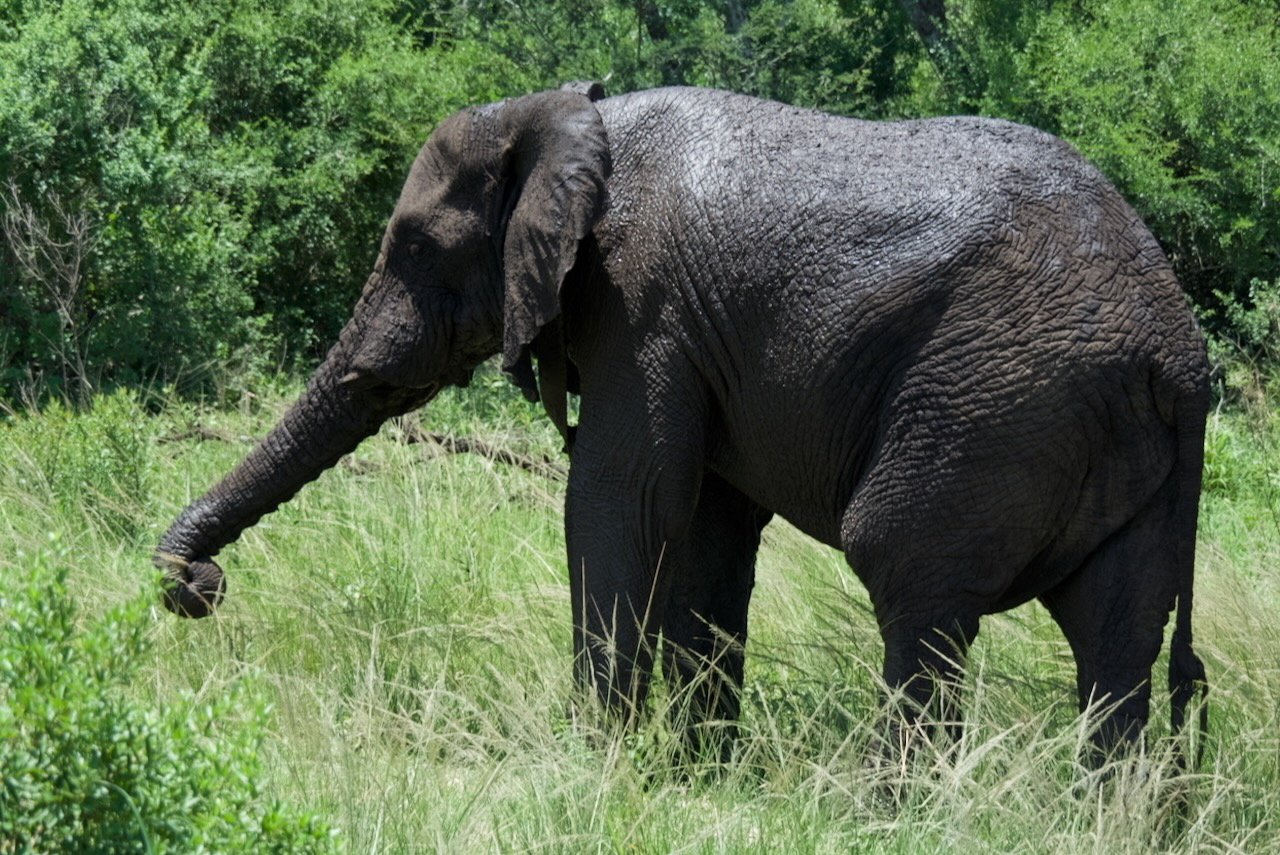
This baboon spread eagle as soon as he saw me.
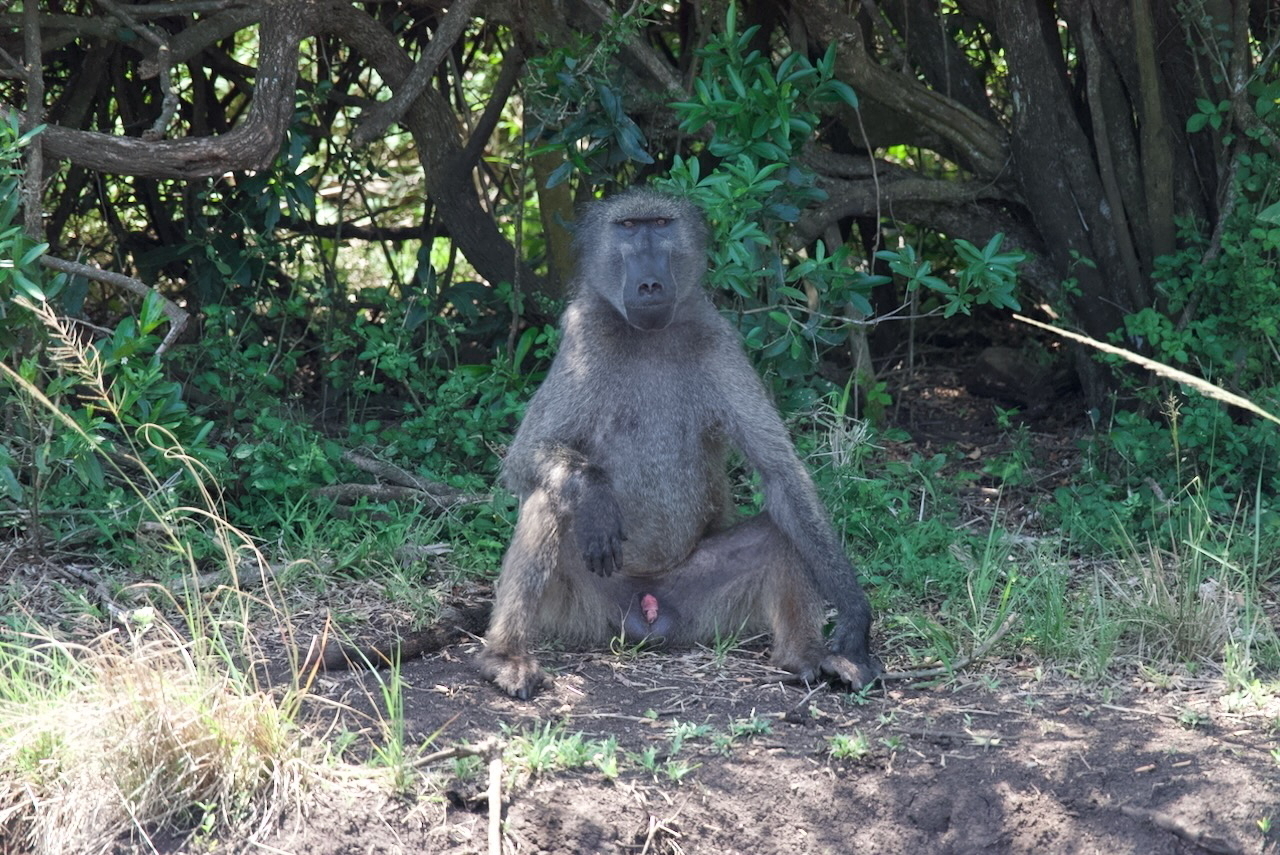
Direct eye contact the whole time, trying to make it as weird as possible…
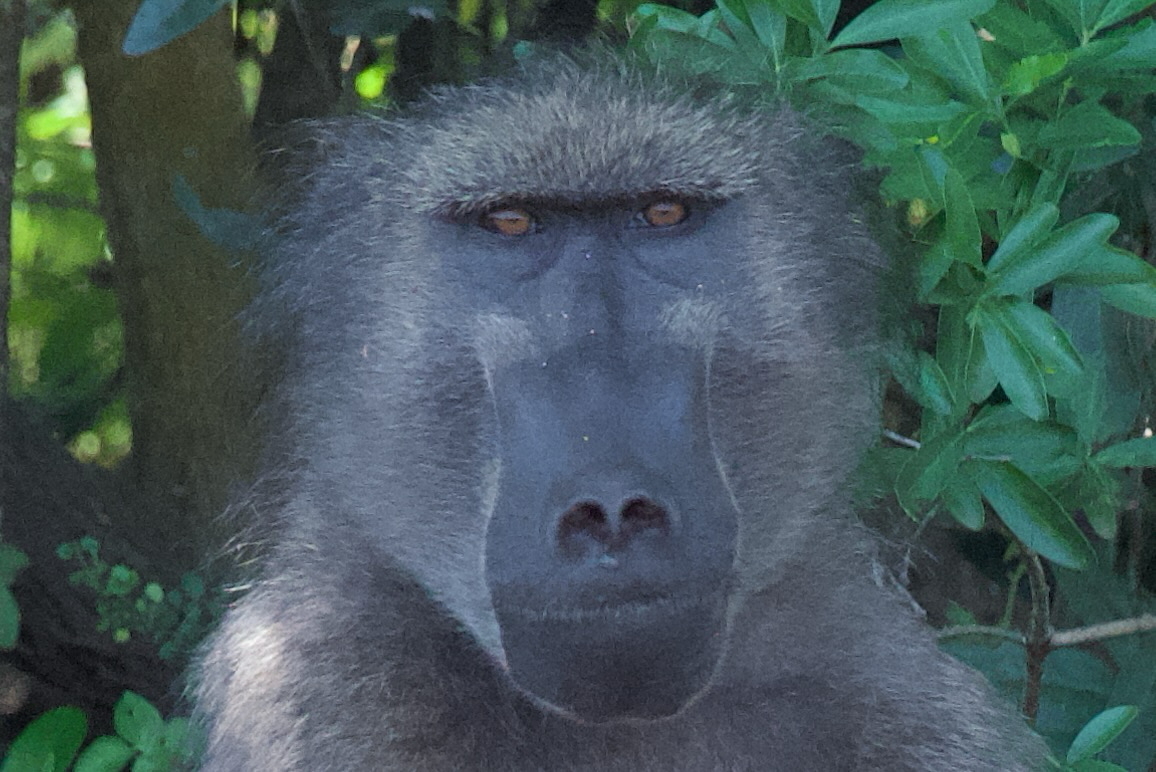
Another nyala
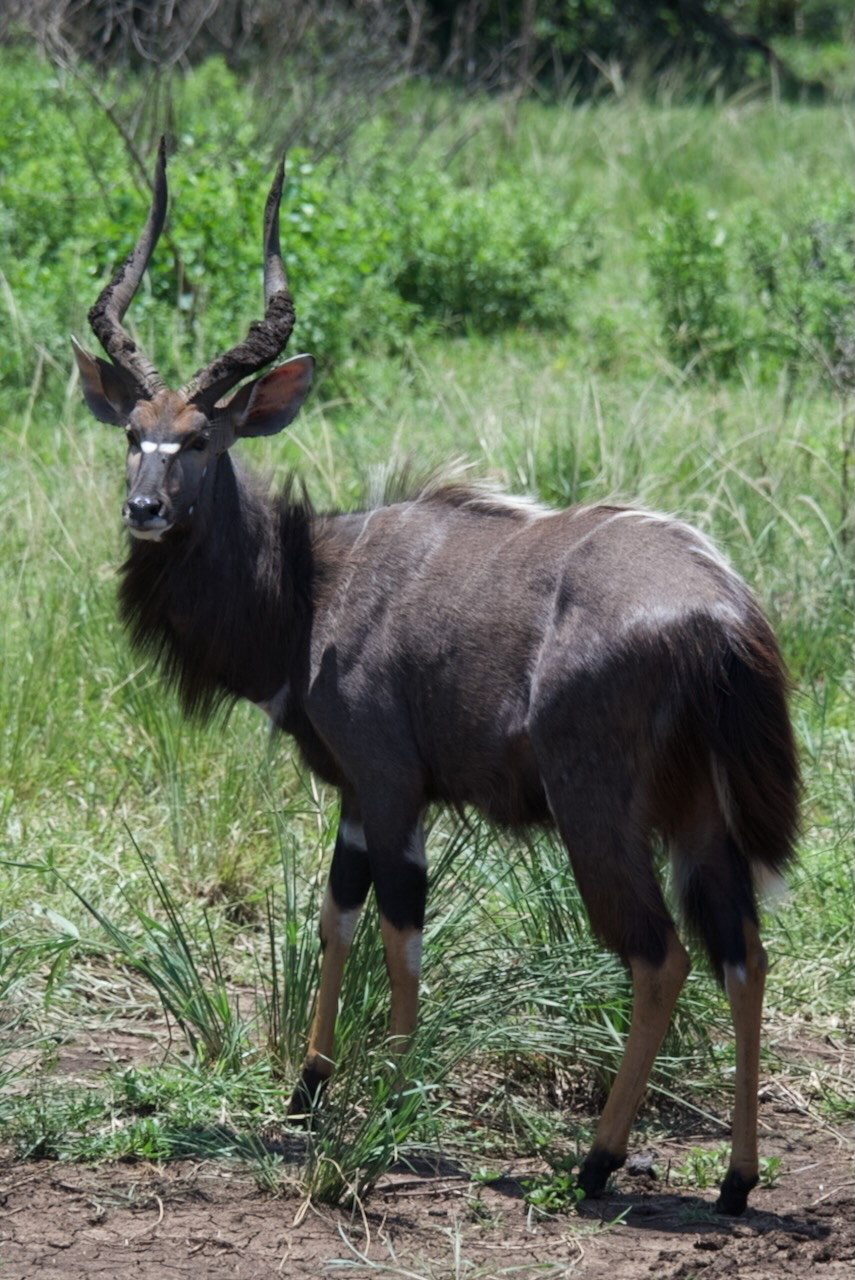
And another nyala, but this one was practicing his hurdles.
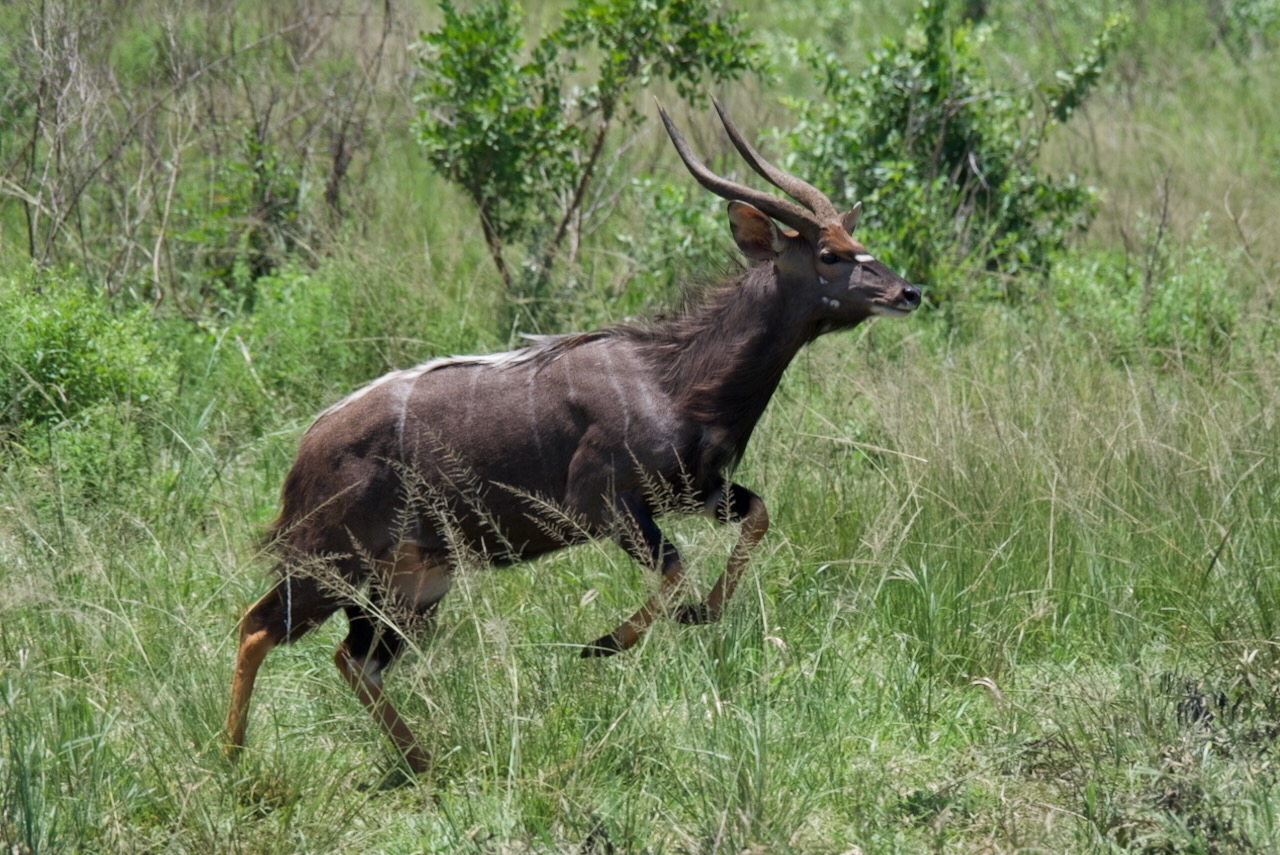
A whole mess of buffalo
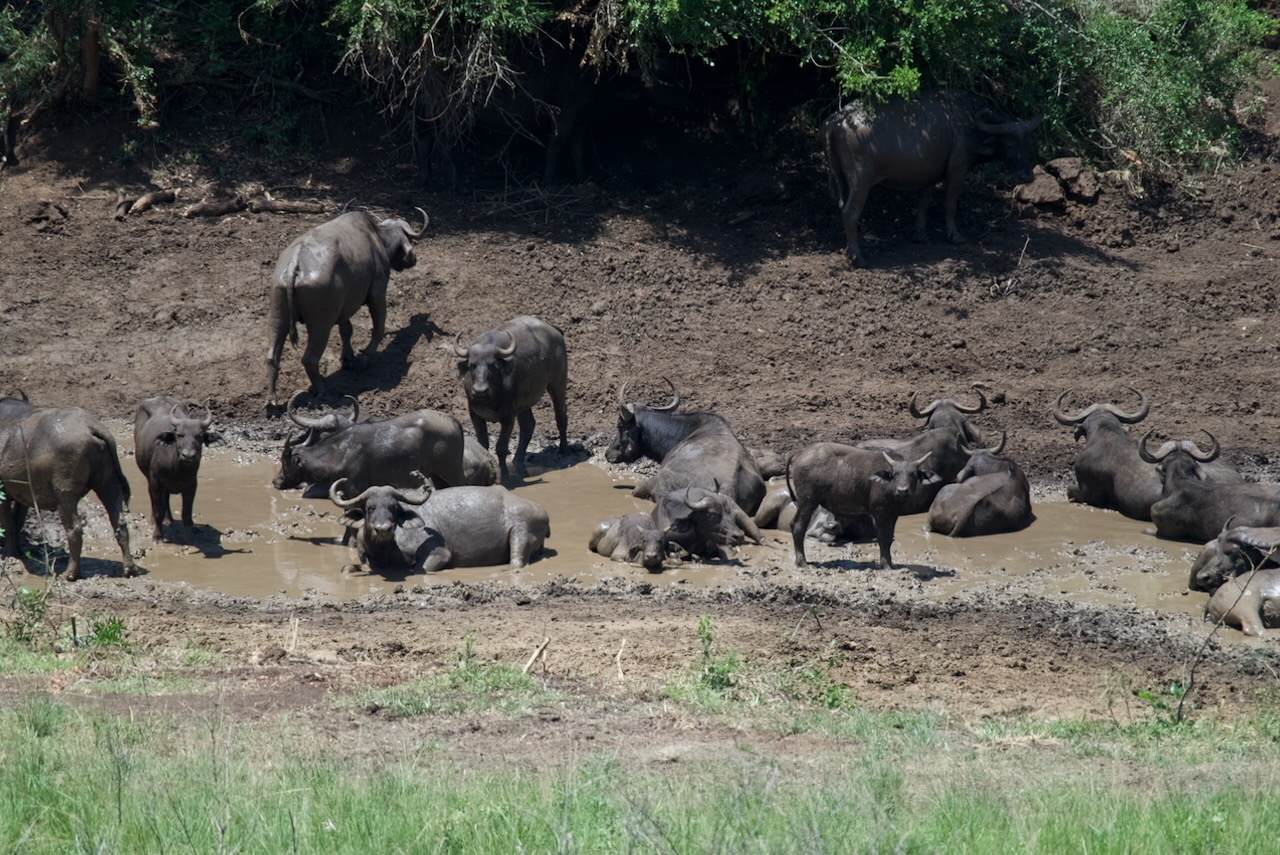
Loved the mud on his horns

What might be around the bend?
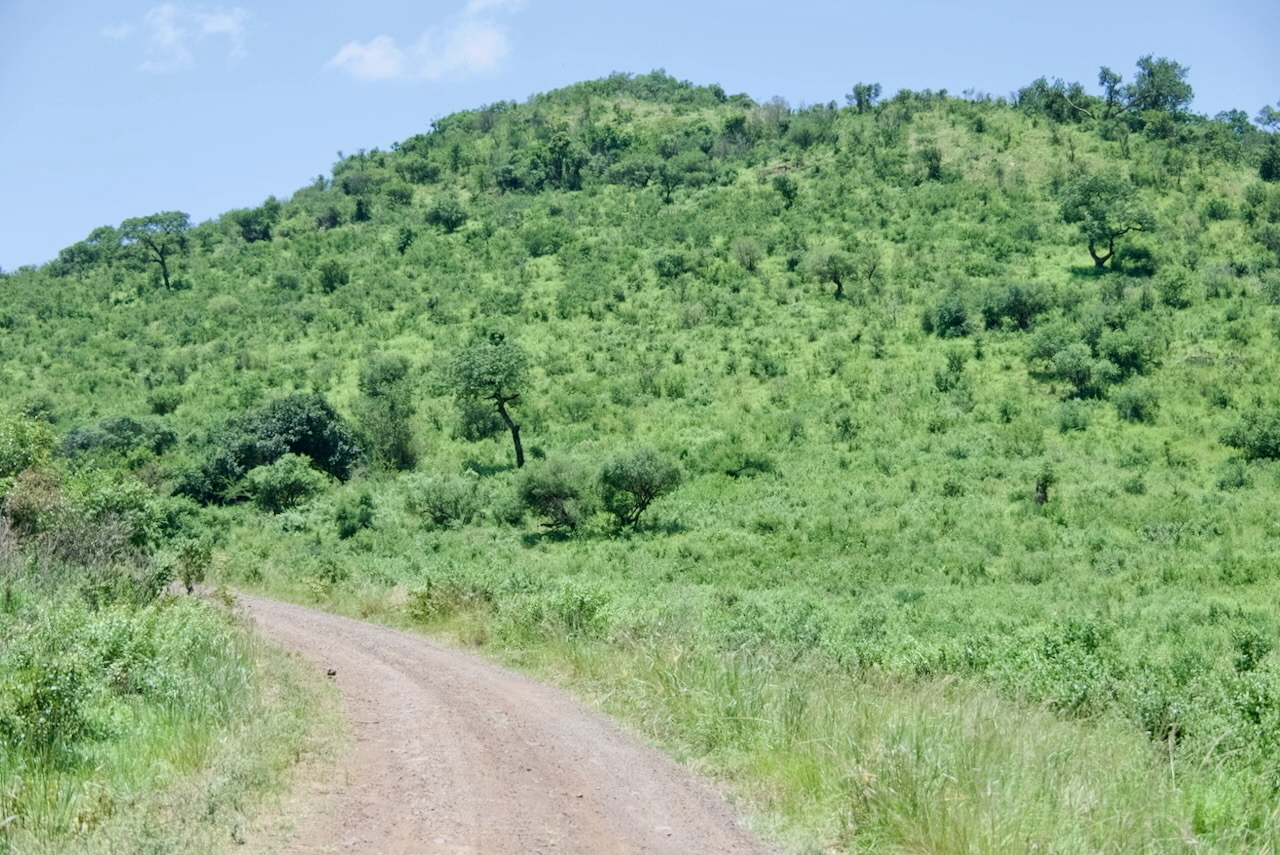
An intense Samango monkey looks towards the visitor center
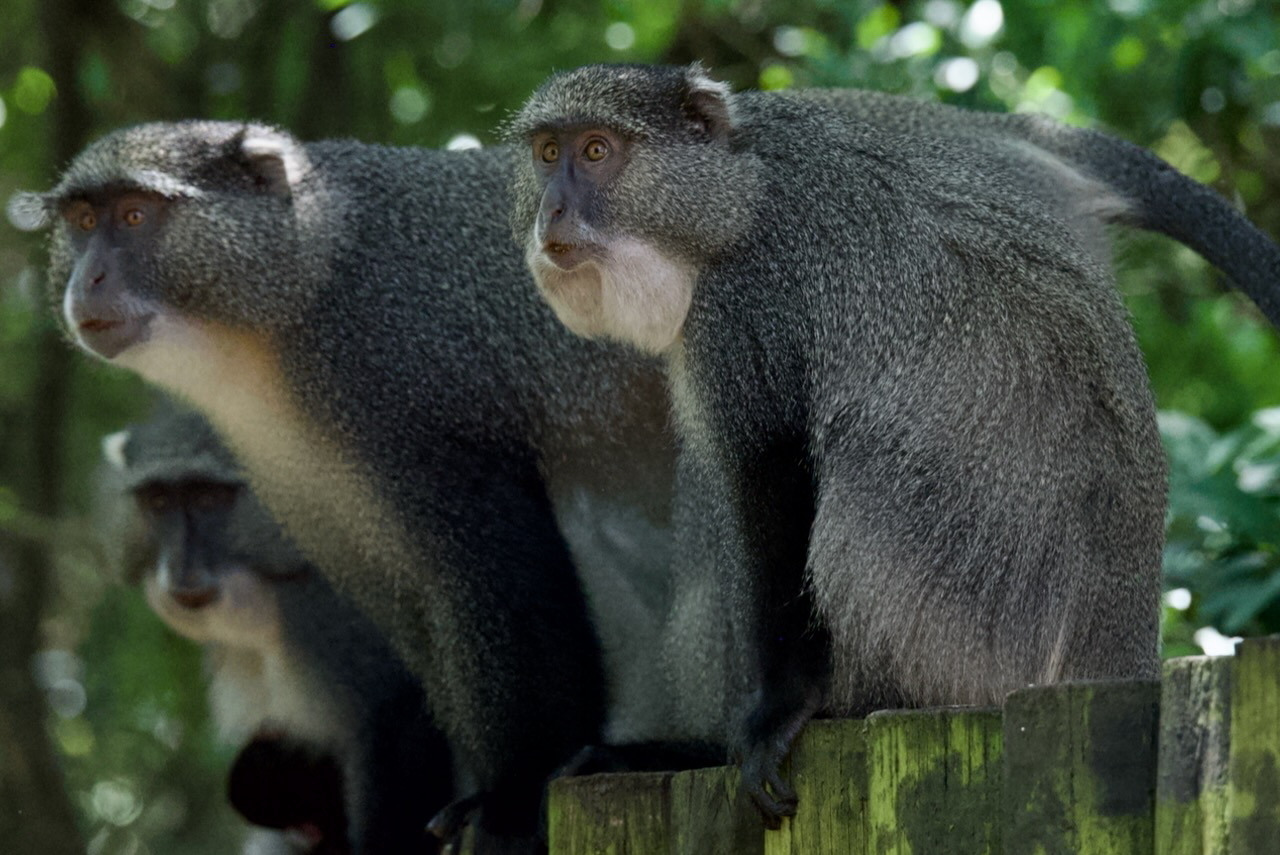
Additional photos on our public icloud album.
Tala Game Reserve, South Africa
Our first tour out of Durban was three-pronged. The first stop—and the reason we booked the tour—was a game drive in the Tala Preserve.
Up close with a journey of giraffe! This was our favorite moment of the day. Because we had a private tour, we were able to slowly exit the vehicle and walk a few feet out for a few photos. Pretty sure this is very much not allowed, but…well…
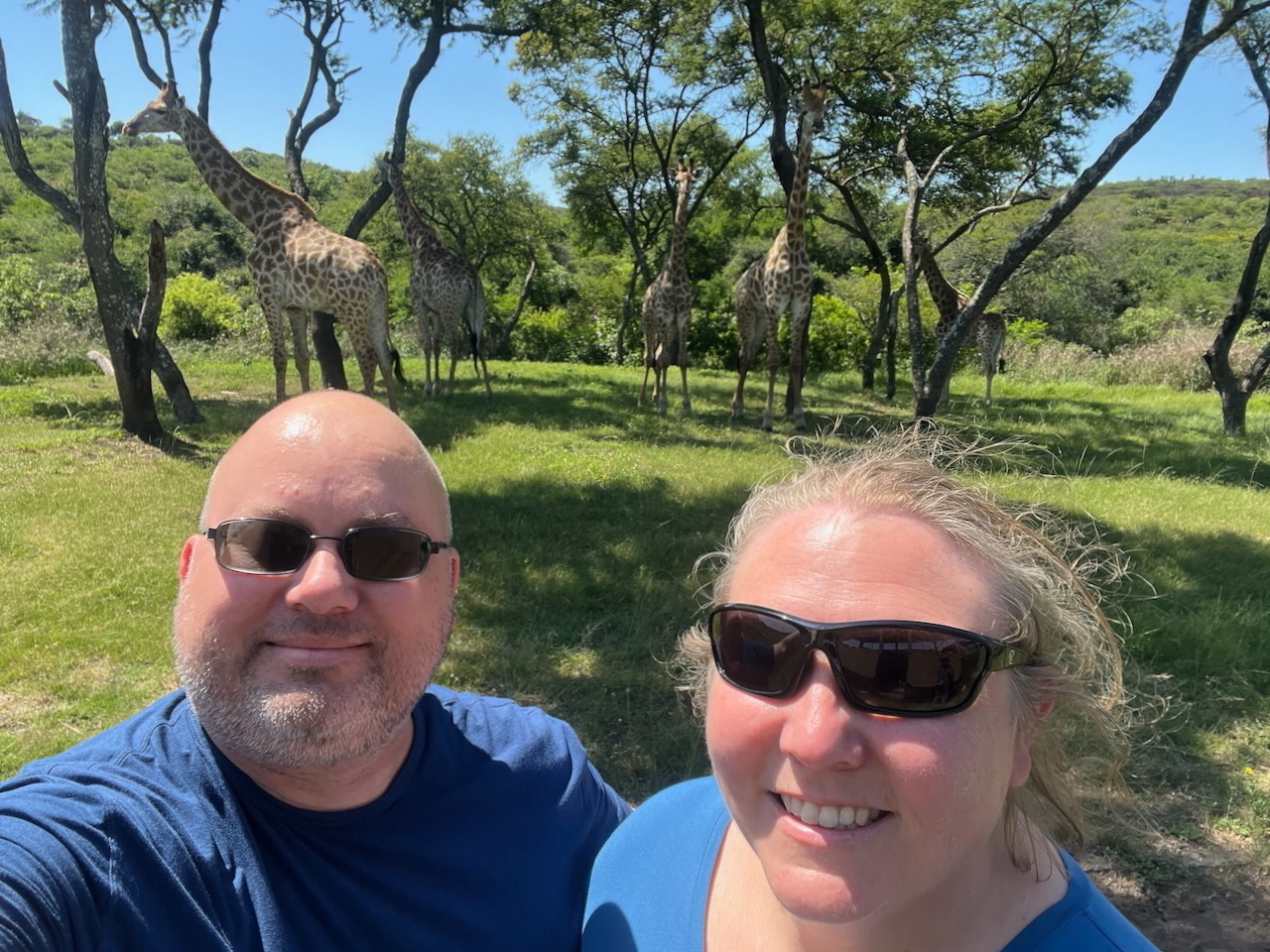
Reminds me of an African version of that famous The Beatles Abbey Road photo.
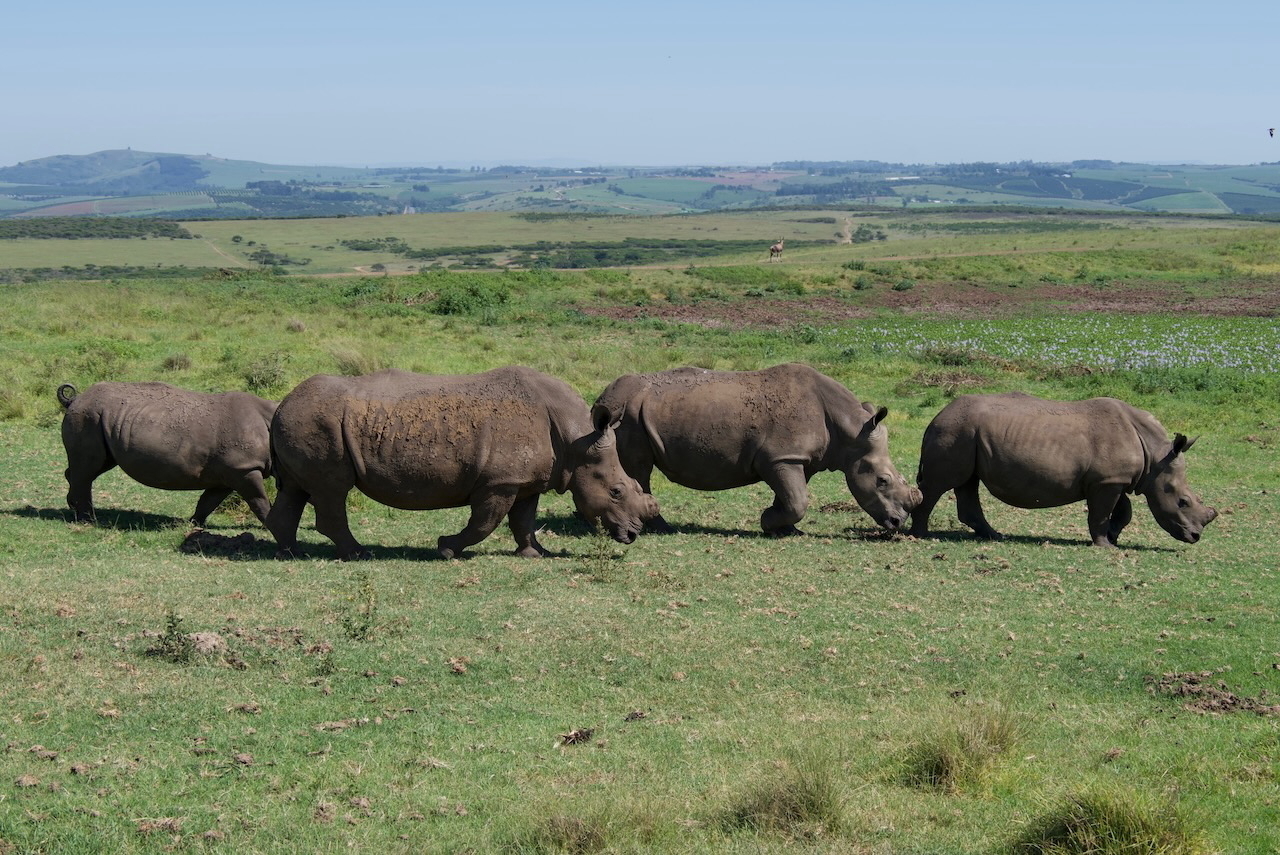
Up close with an elephant. More on this encounter below.
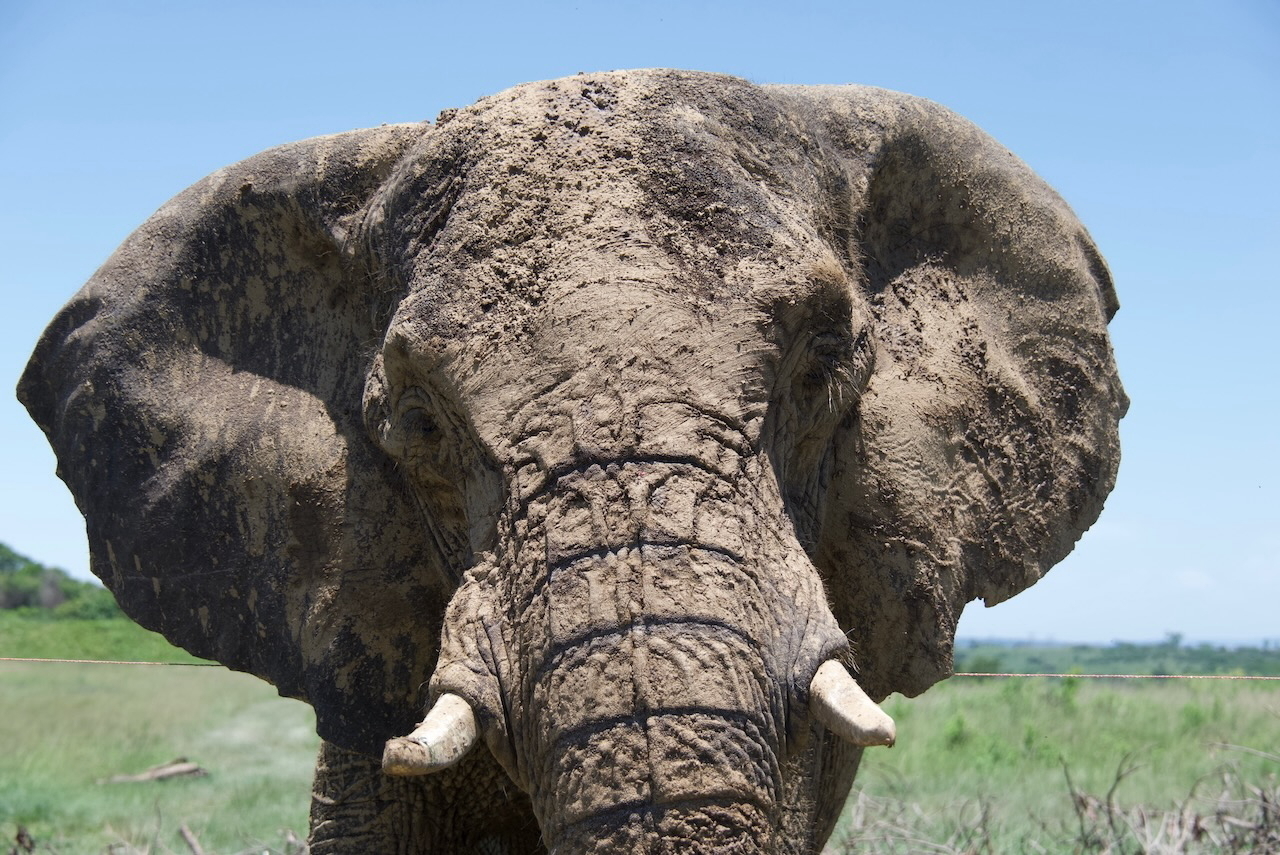
The giraffes as we first encountered them. This felt like such a quintessential setting for them!
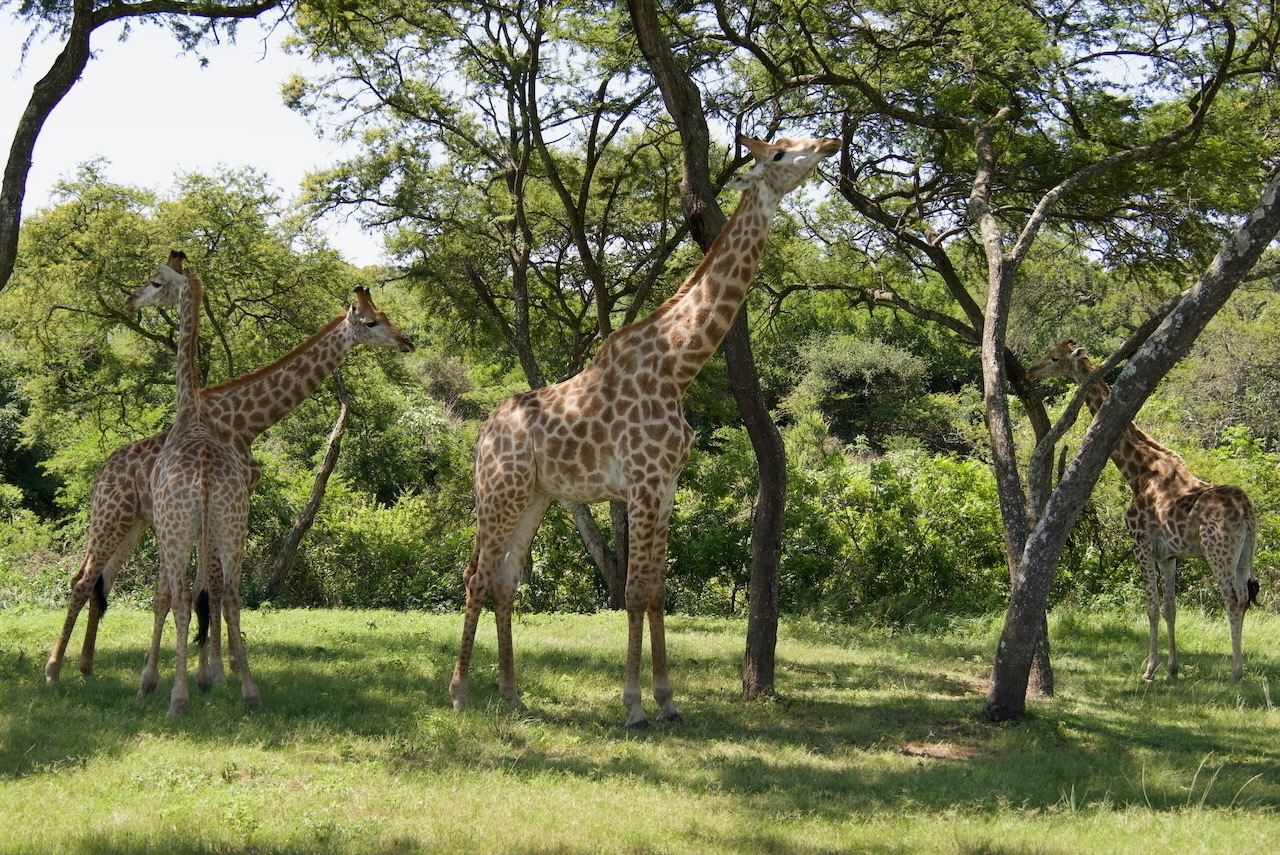
This zebra was giving his younger brother the business for several minutes.
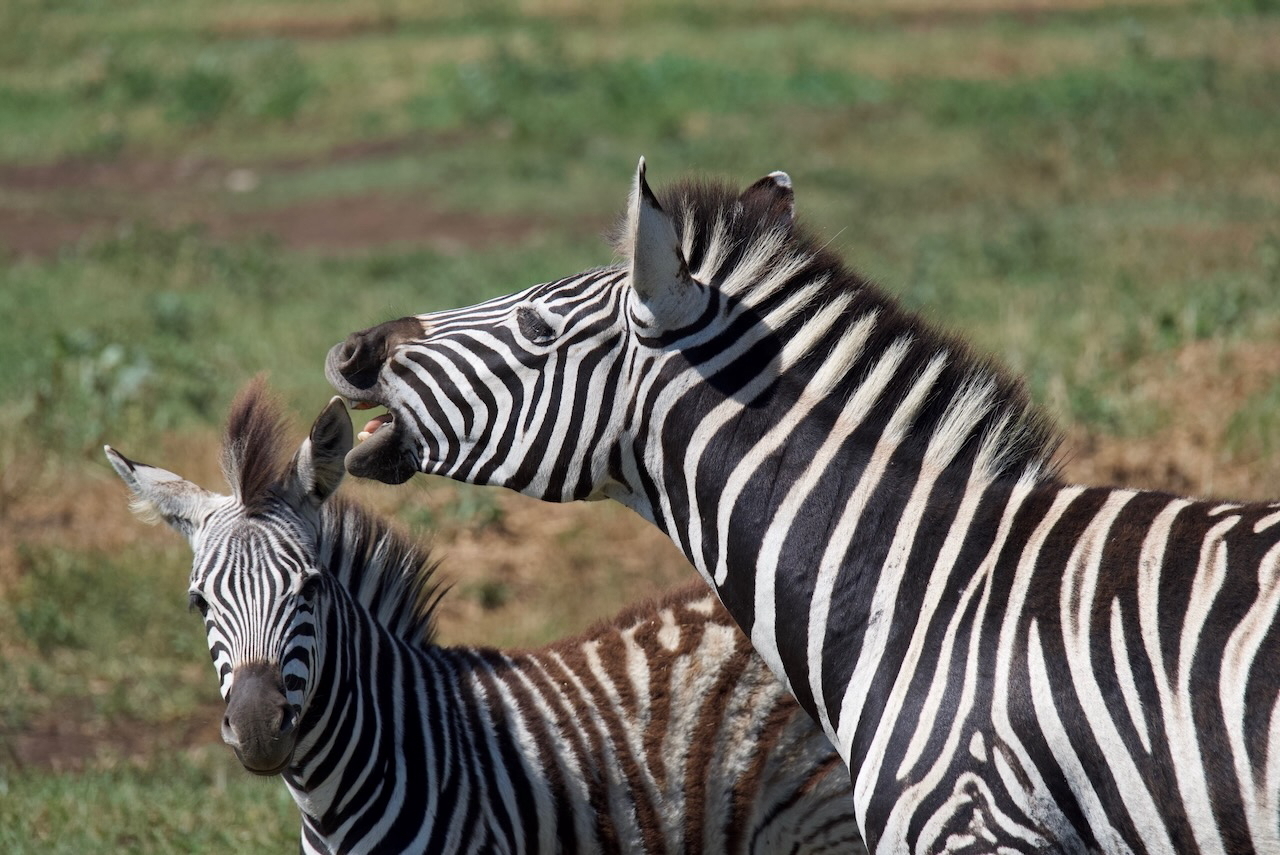
Our own private tour! Our guide proactively arranged this after we had arrived at the game reserve when he noticed that a number of kids were also going to be on our originally scheduled game drive. A pro move that really improved our experience—we were very grateful.
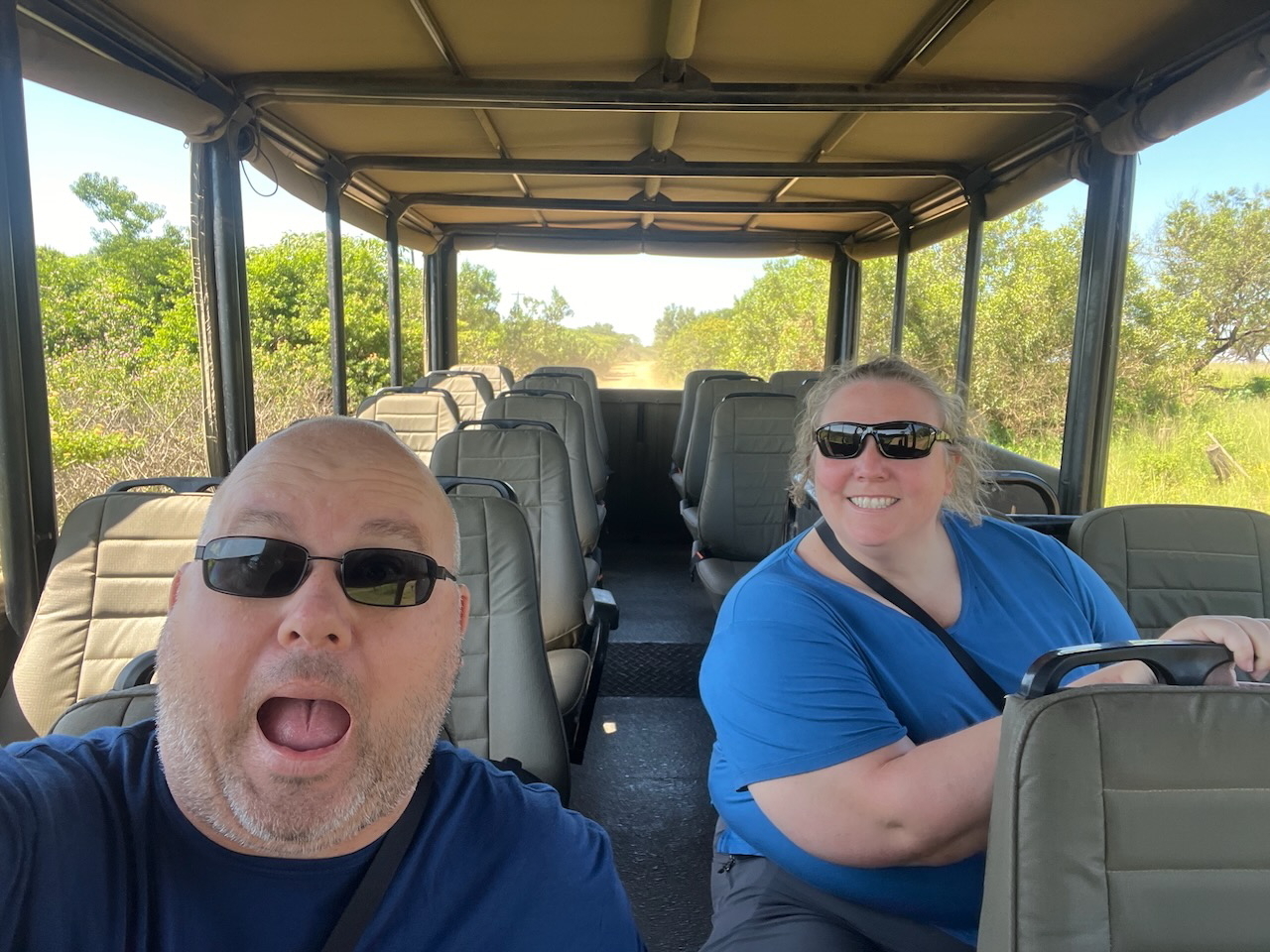
When we first discussed how to approach cameras for this trip, I told Jen that we needed long lenses so we could get a shot of a giraffe licking its own nostril, and well, mission accomplished!
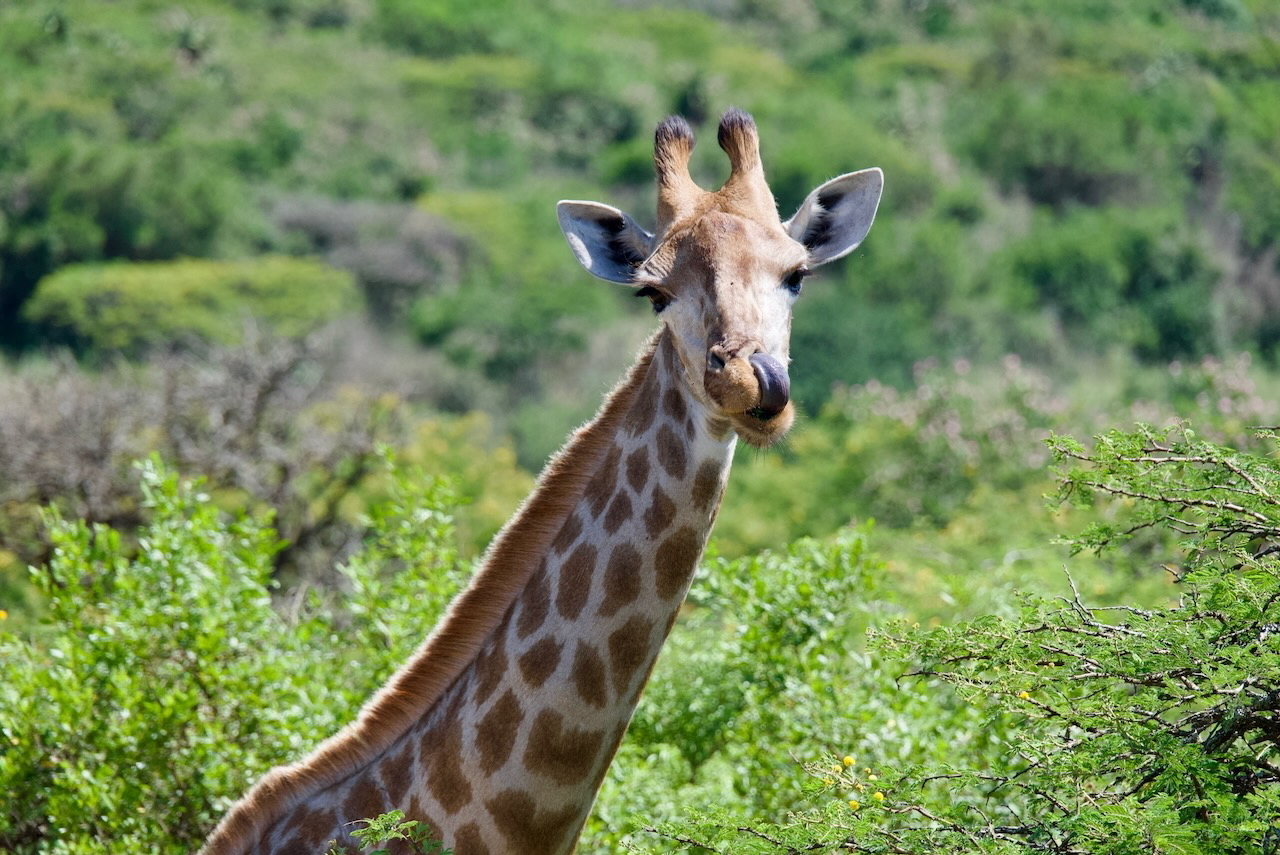
Love the dried mud flaking off this white rhino.

Impala making a wild run for it.
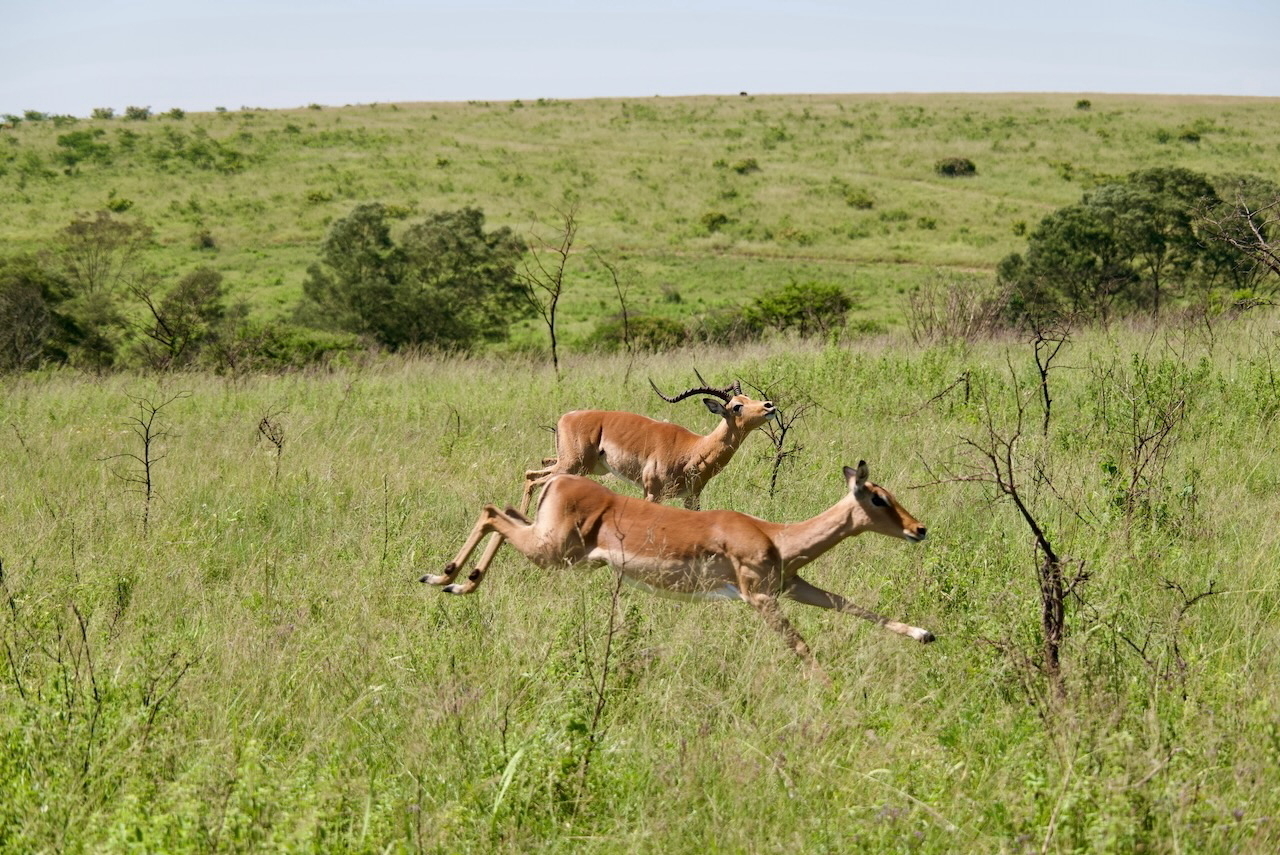
Enjoyed seeing these two hippos, especially the youngin.
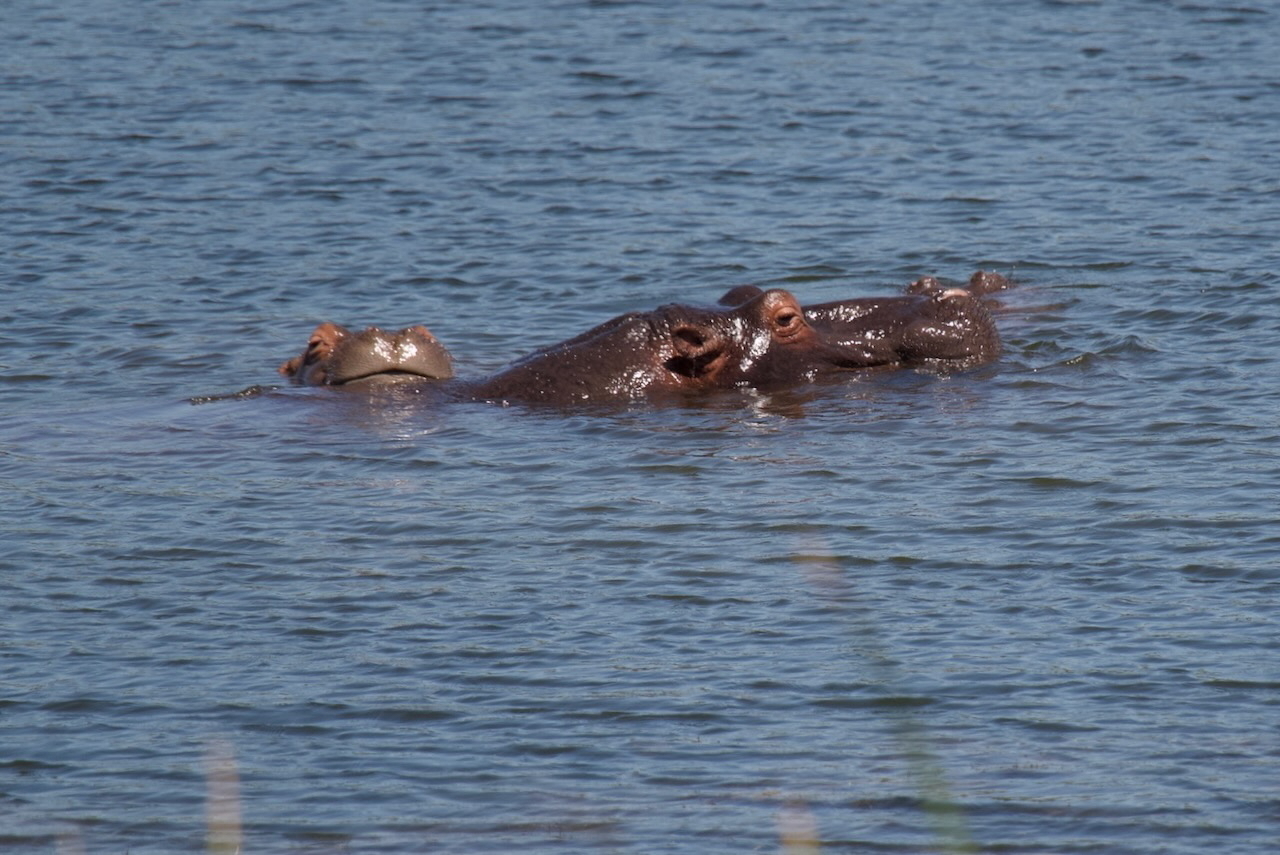
You spend a lot of time looking at animal butts during safaris, so here’s one of a zebra.
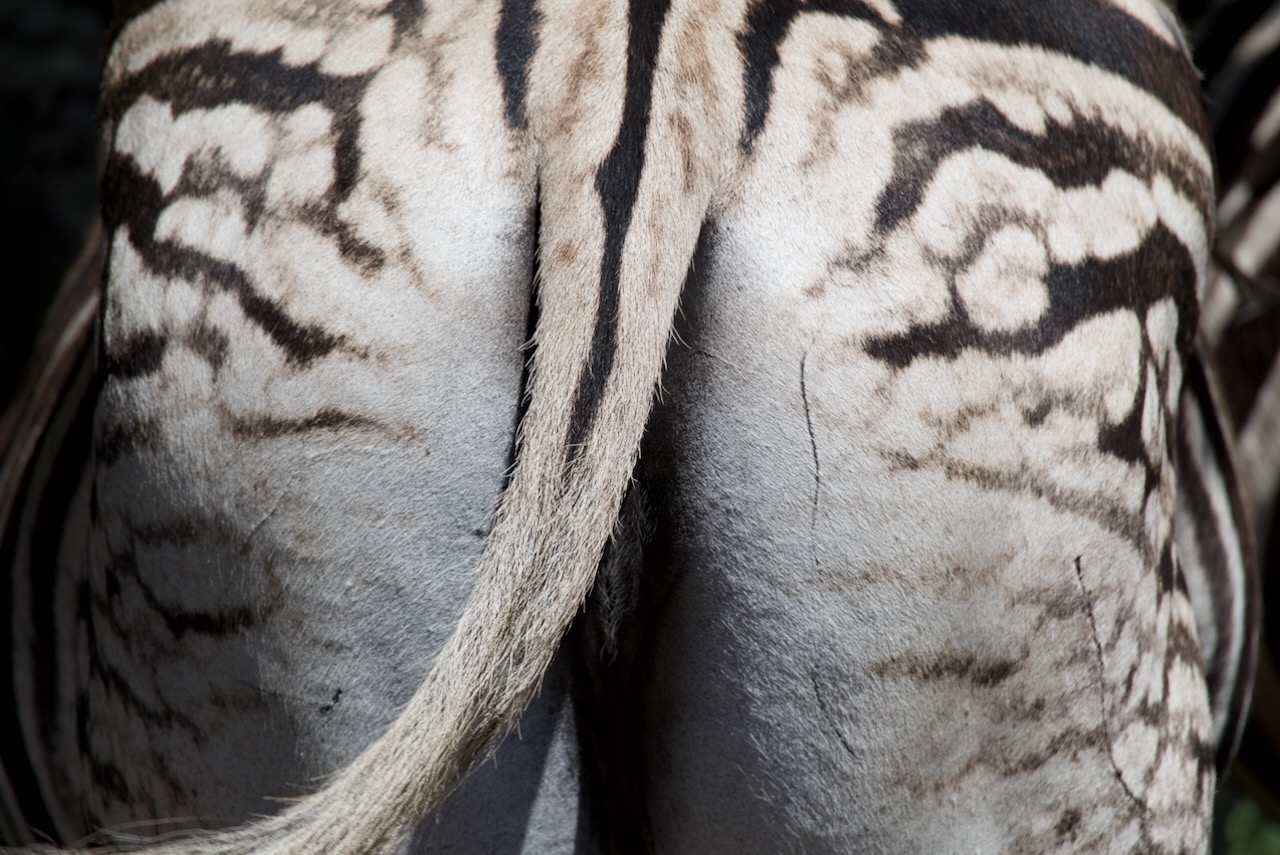
A silhouette of an impala
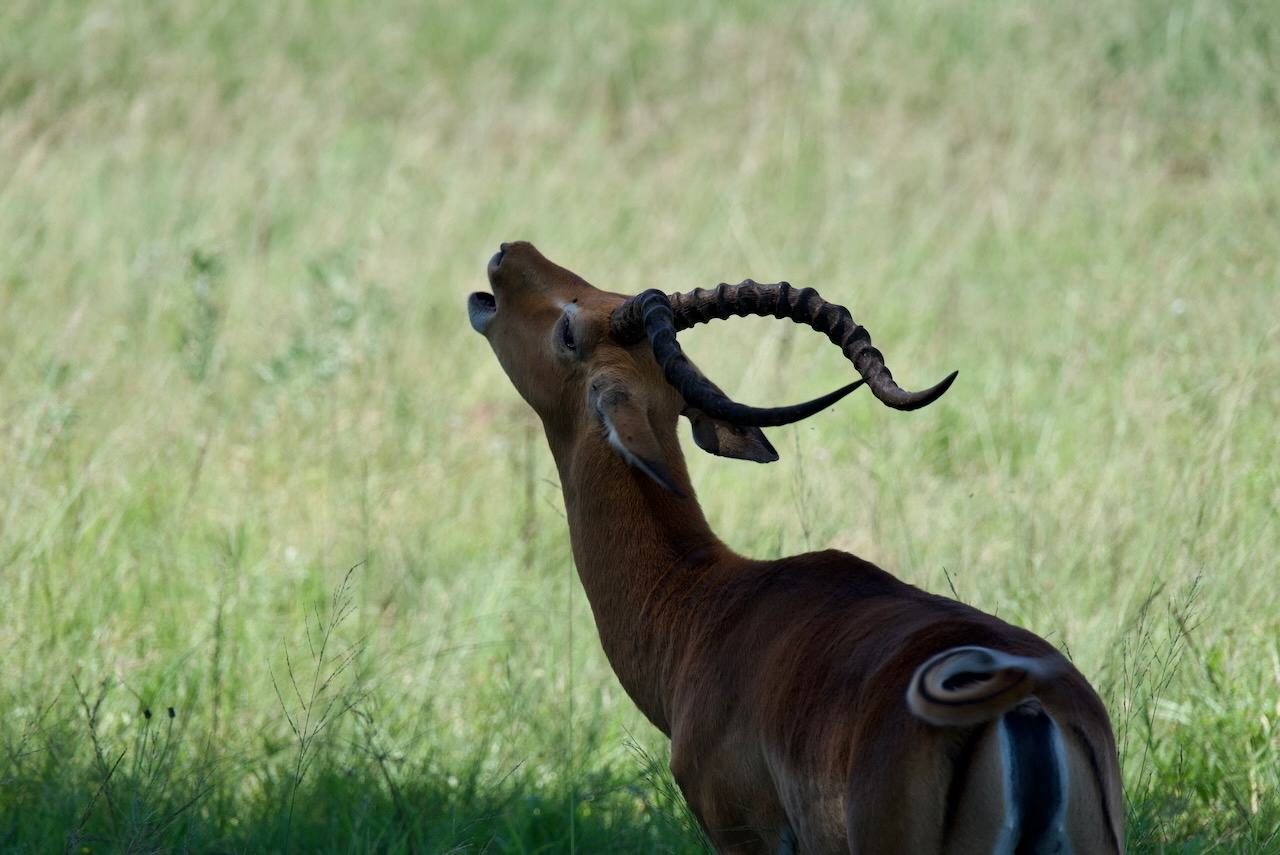
A flock of ostrich
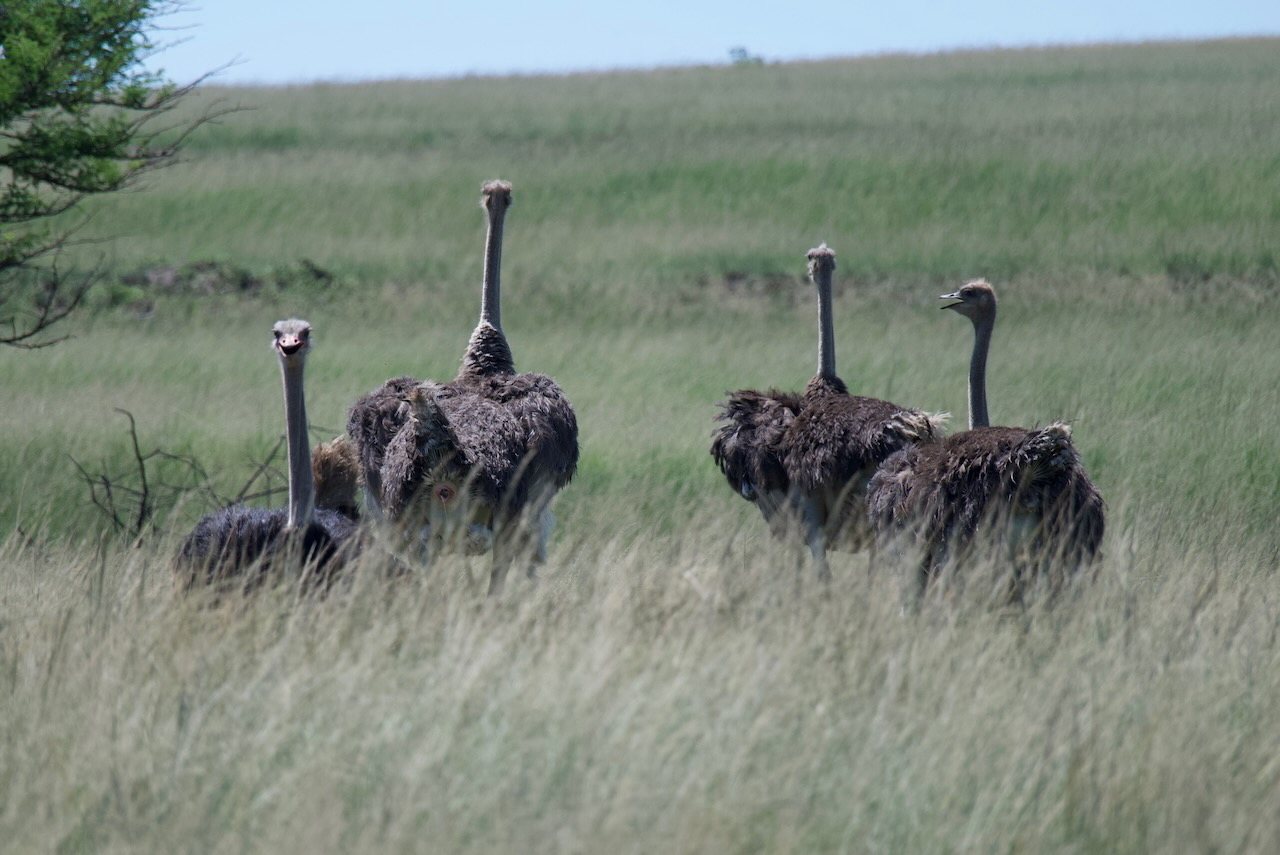
We really enjoyed watching this browsing giraffe. Just chomped away for many minutes while we quietly snapped countless photos.
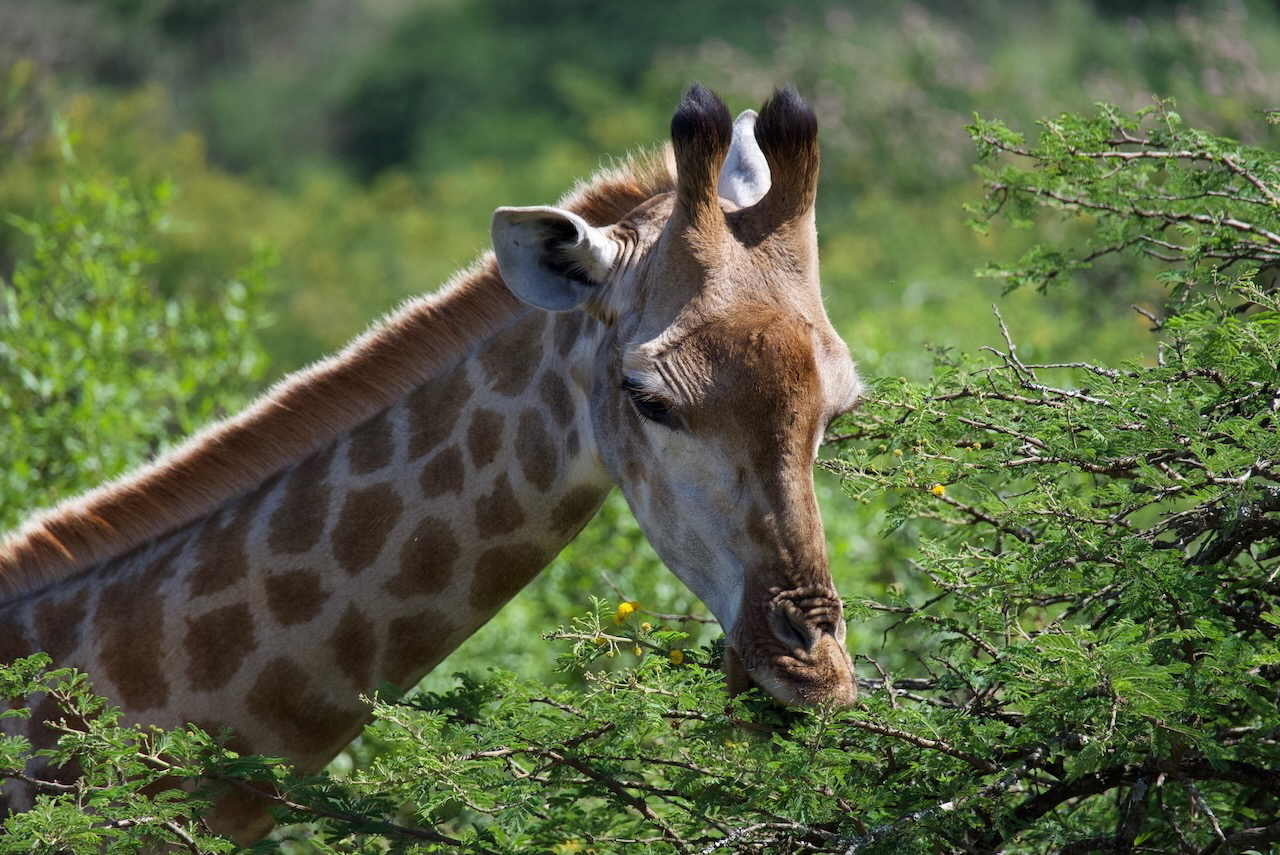
We very quickly got the attention of this group of water bucks.
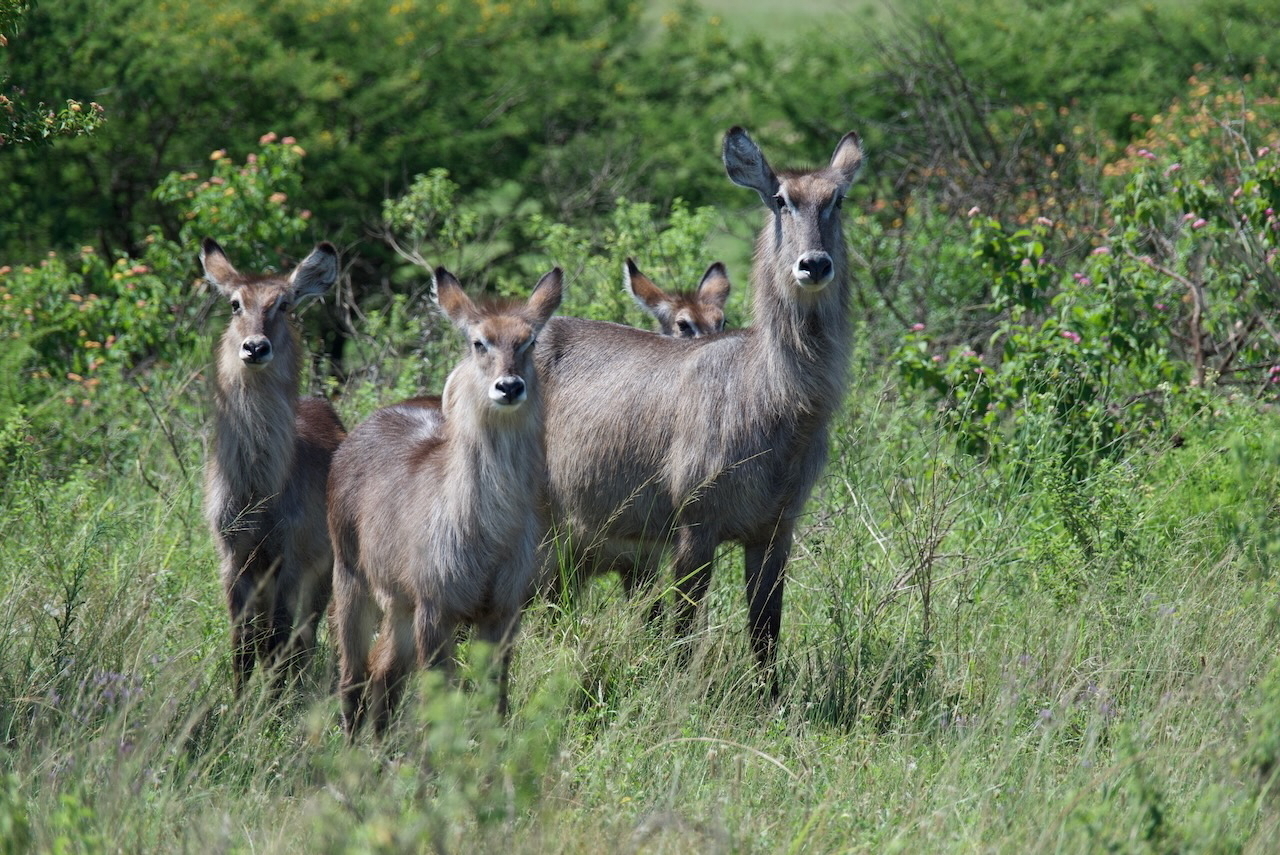
It was brutally hot out, so most of our encounters were finding wildlife in the shade. This gorgeous tree spilled the shade out over the road, so that’s where this herd of impala spent their day.
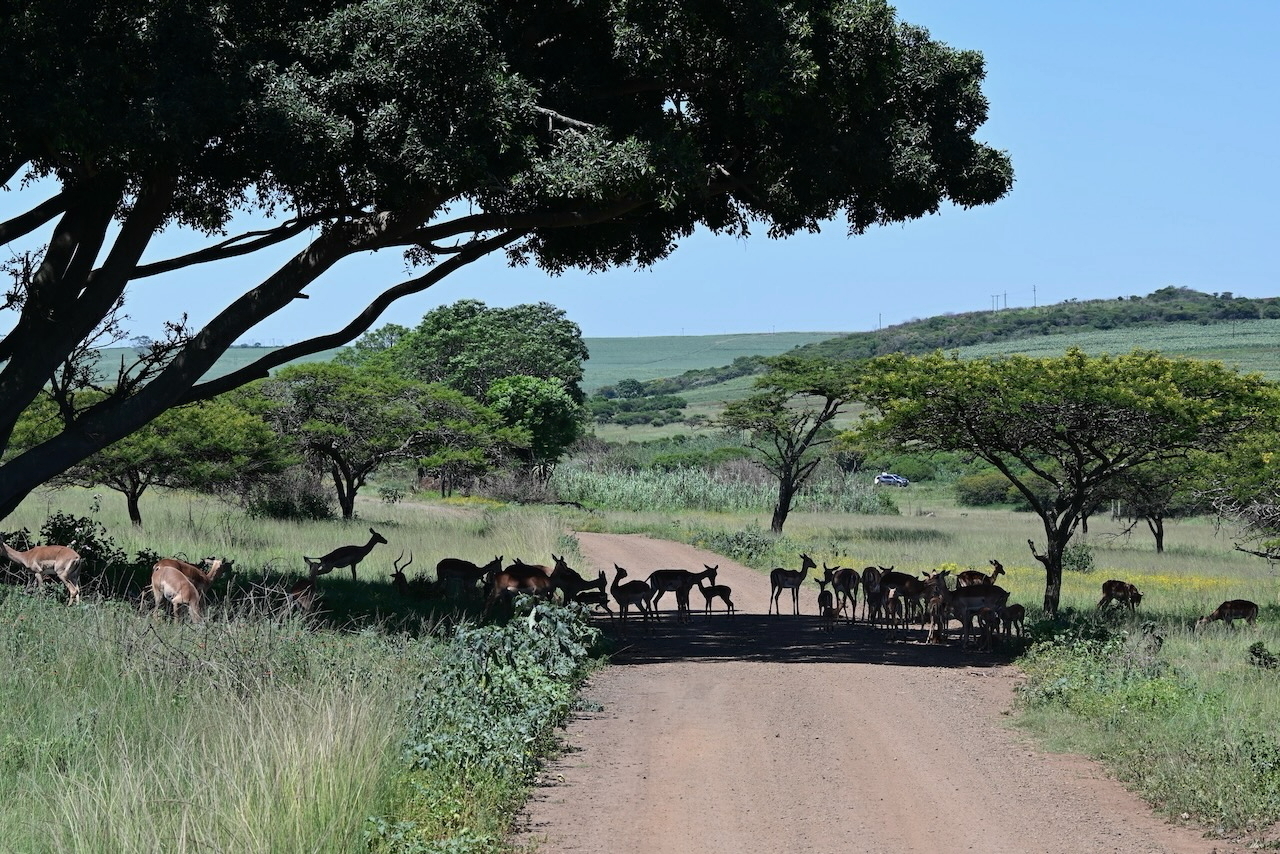
A full body shot of a giraffe browsing an acacia tree.
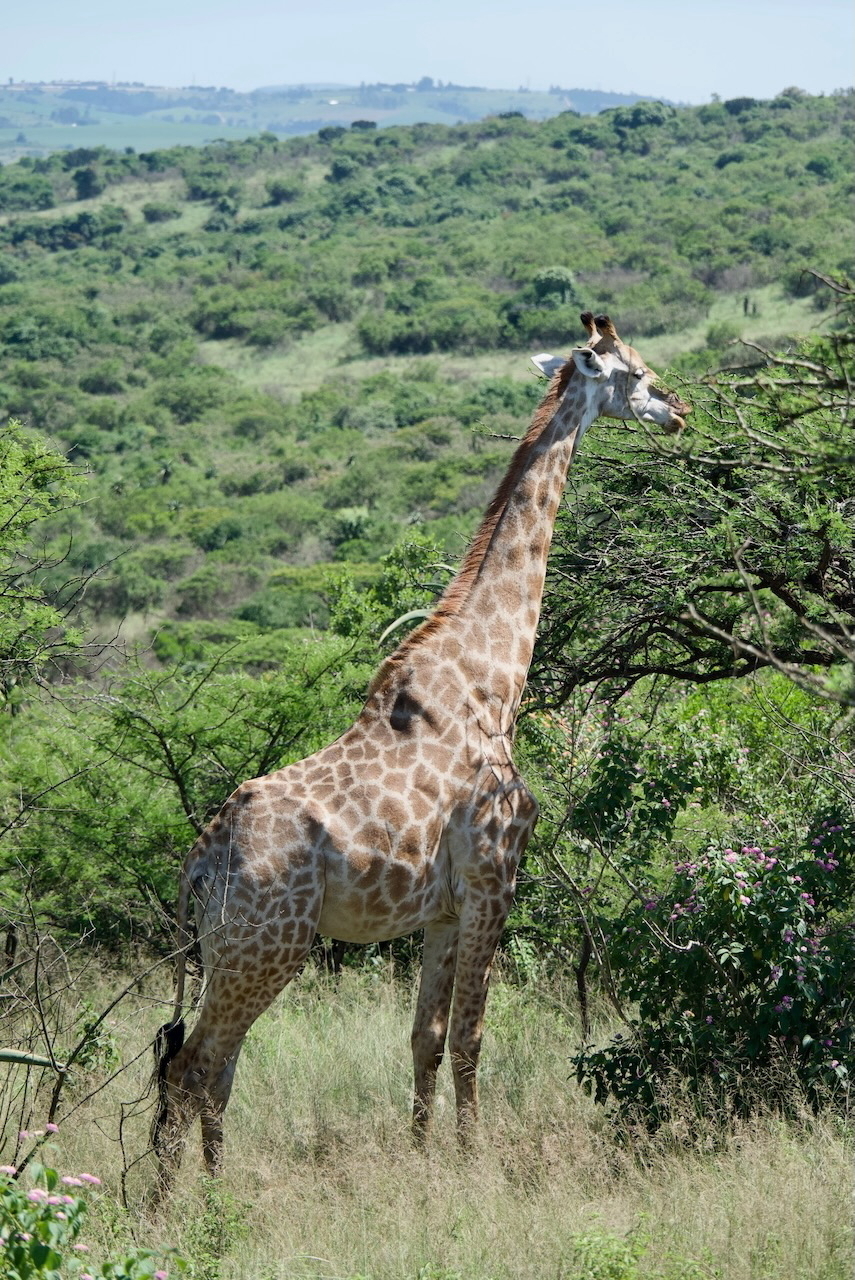
A blesbok (heard of these before!) sporting some cool horns.
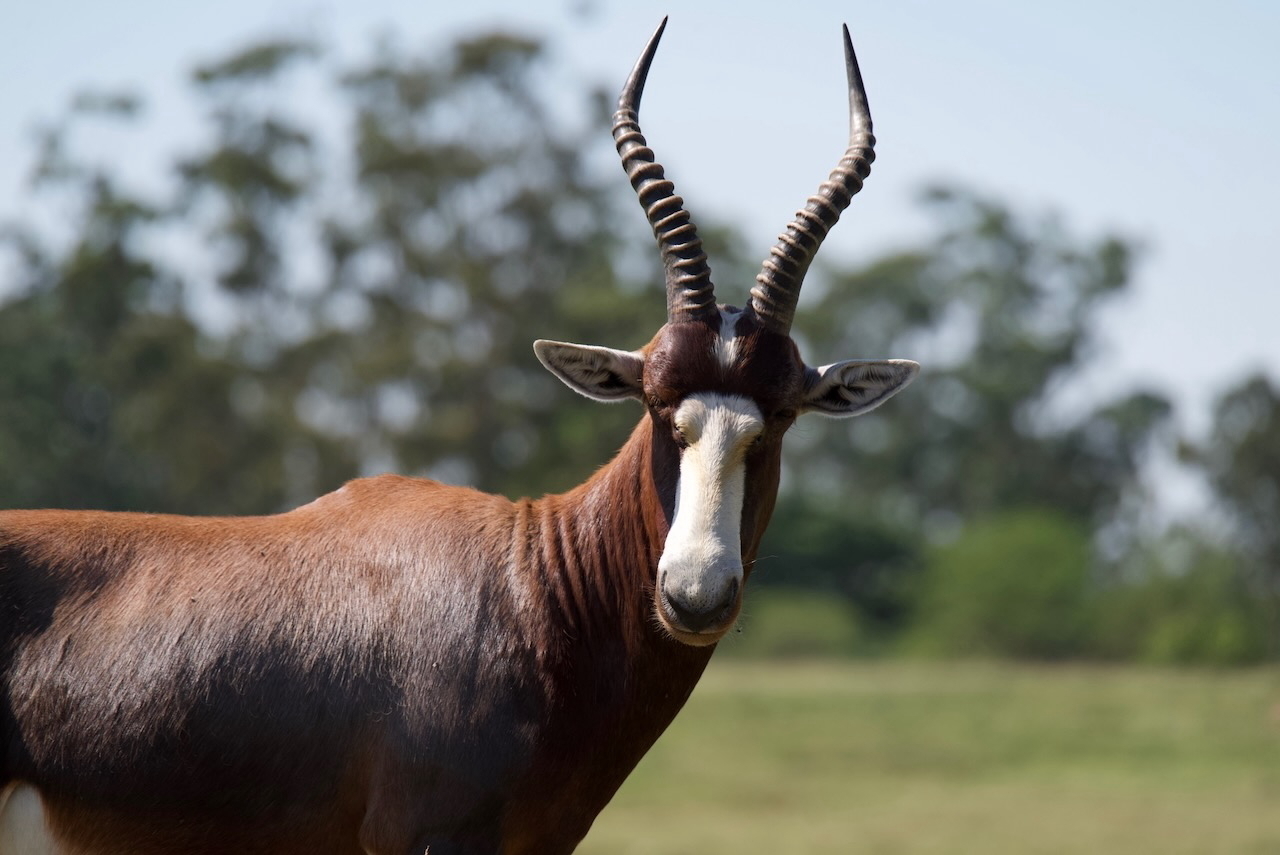
Natal Lion Park
The last two photos here, as well as the elephant one above, are from a tourist-trap called the Natal Lion Park. This was included in our tour, but…we wish it hadn’t been. Basically, it’s a zoo of sorts to ensure that tourists get their lion and elephant photos. The lions were in a very large (200+ acre) enclosure and you can drive your own vehicle around the roads looking for them. These were under the shade of a tree less than 50 meters from the entrance. They’re fed by park staff, and apparently get shifted between this park and various zoos.
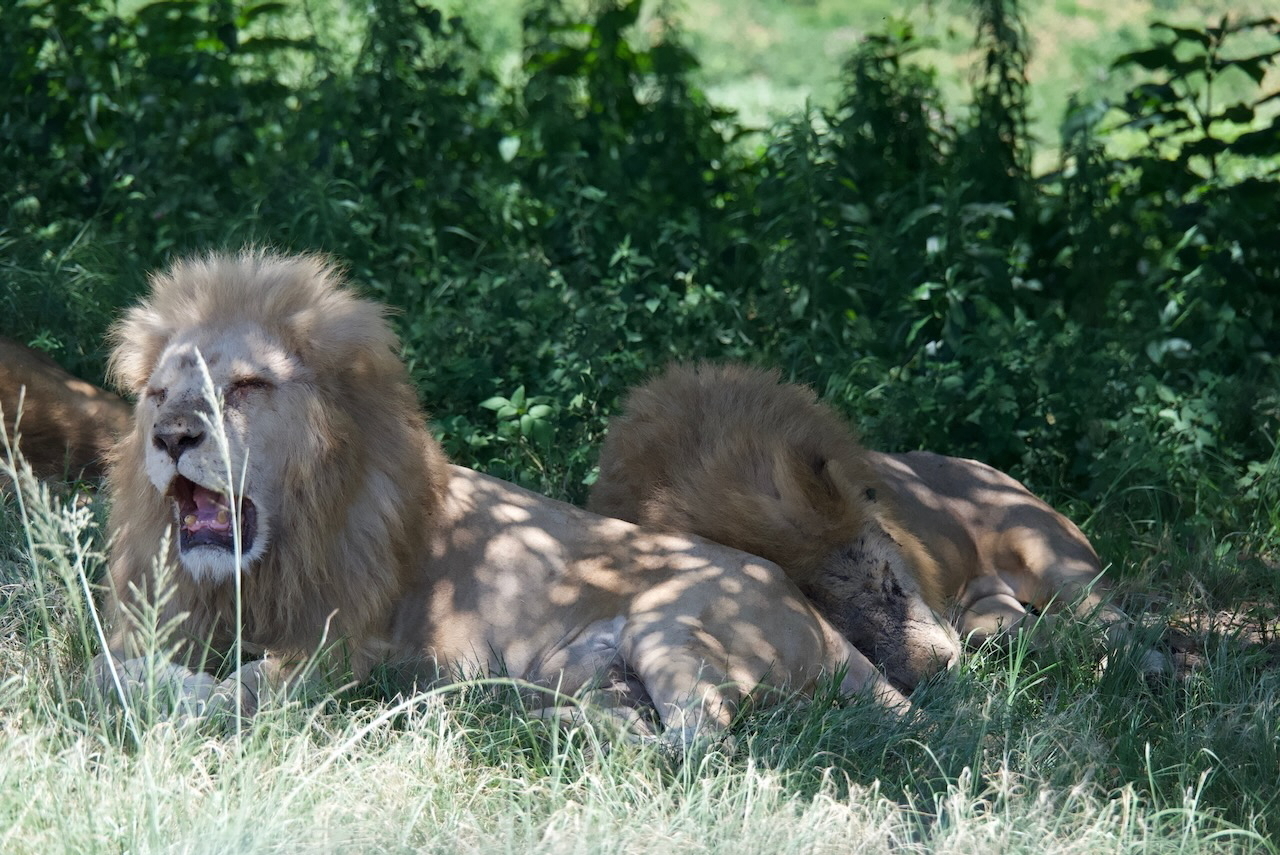
The experience with this elephant felt especially tragic. You arrive on a hilltop elsewhere in the park, then a guy goes off over a hill and returns 15-20 minutes later leading an elephant over to you. Behind a wire fence, you hand a few carrots to the elephant and take some photos. Oy, no bueno. I can see why this place exists—tourists with just the day to explore off the cruise ship want to see a lion and elephant—but boy does it feel exploitative.
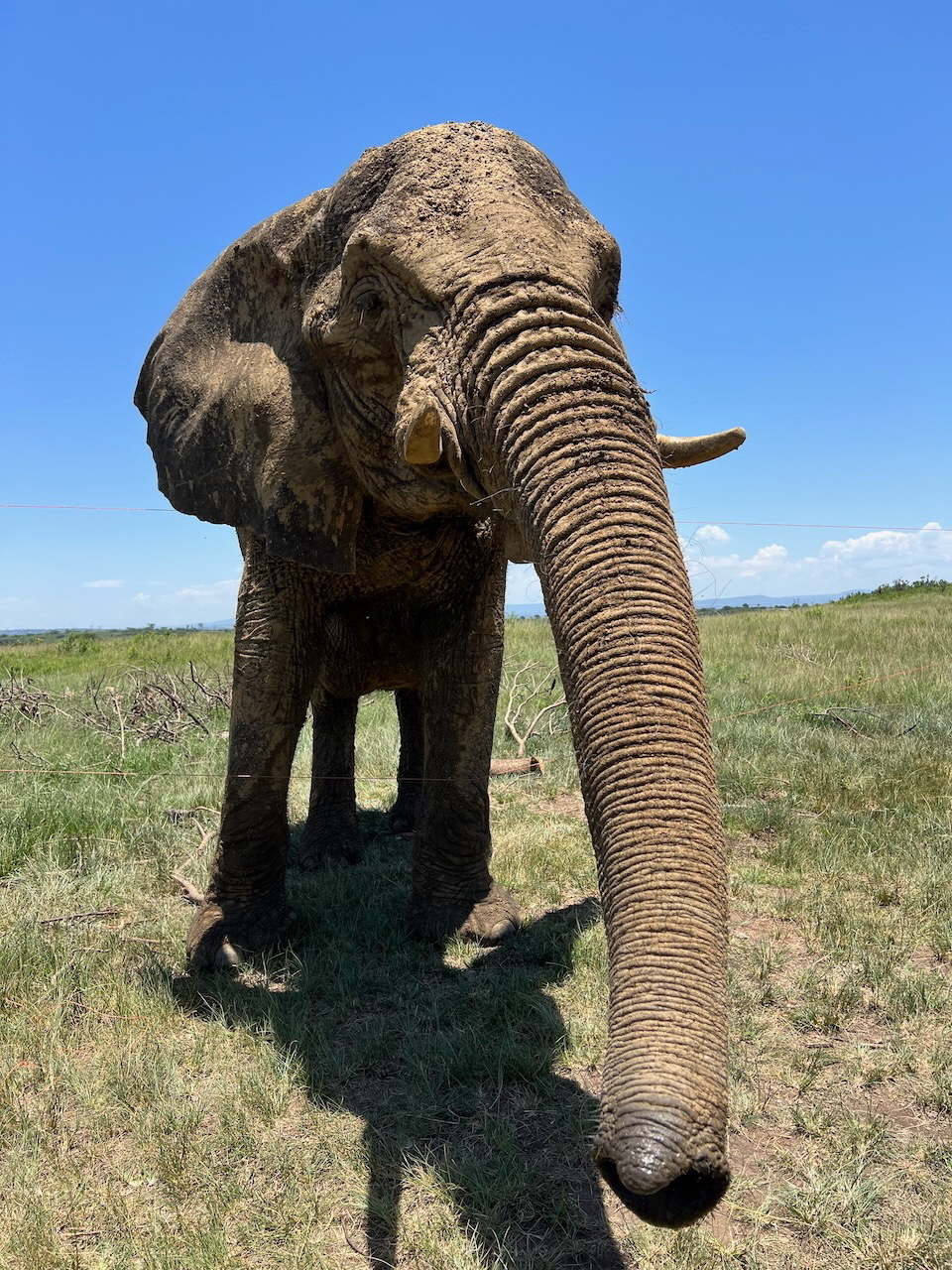
PheZulu Safari Park
The last stop on the tour was a visit to PheZulu for a “cultural experience” to watch some Zulu dancing. We weren’t especially interested in this—again, geared towards tourists—but sat through it anyway.
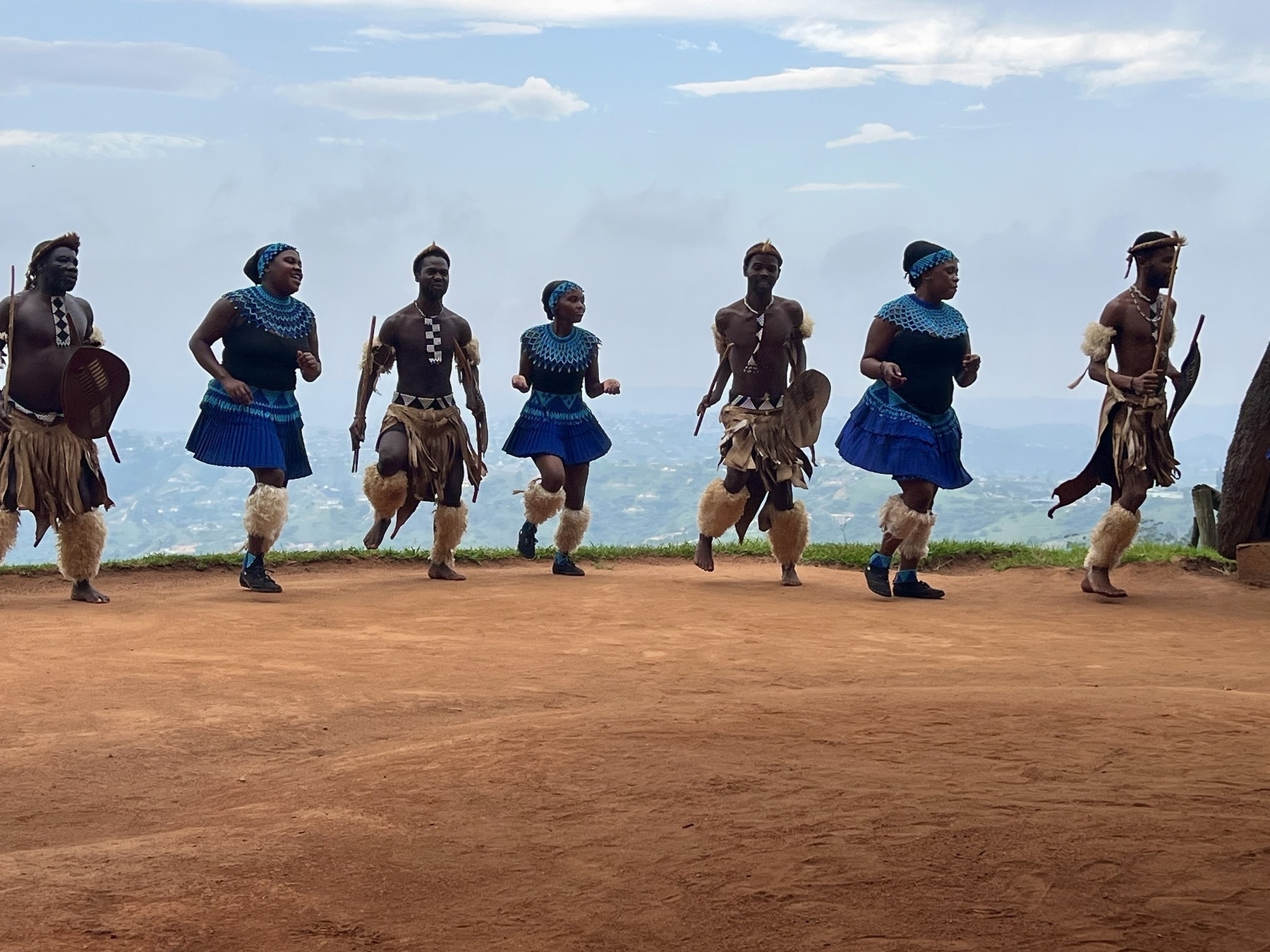
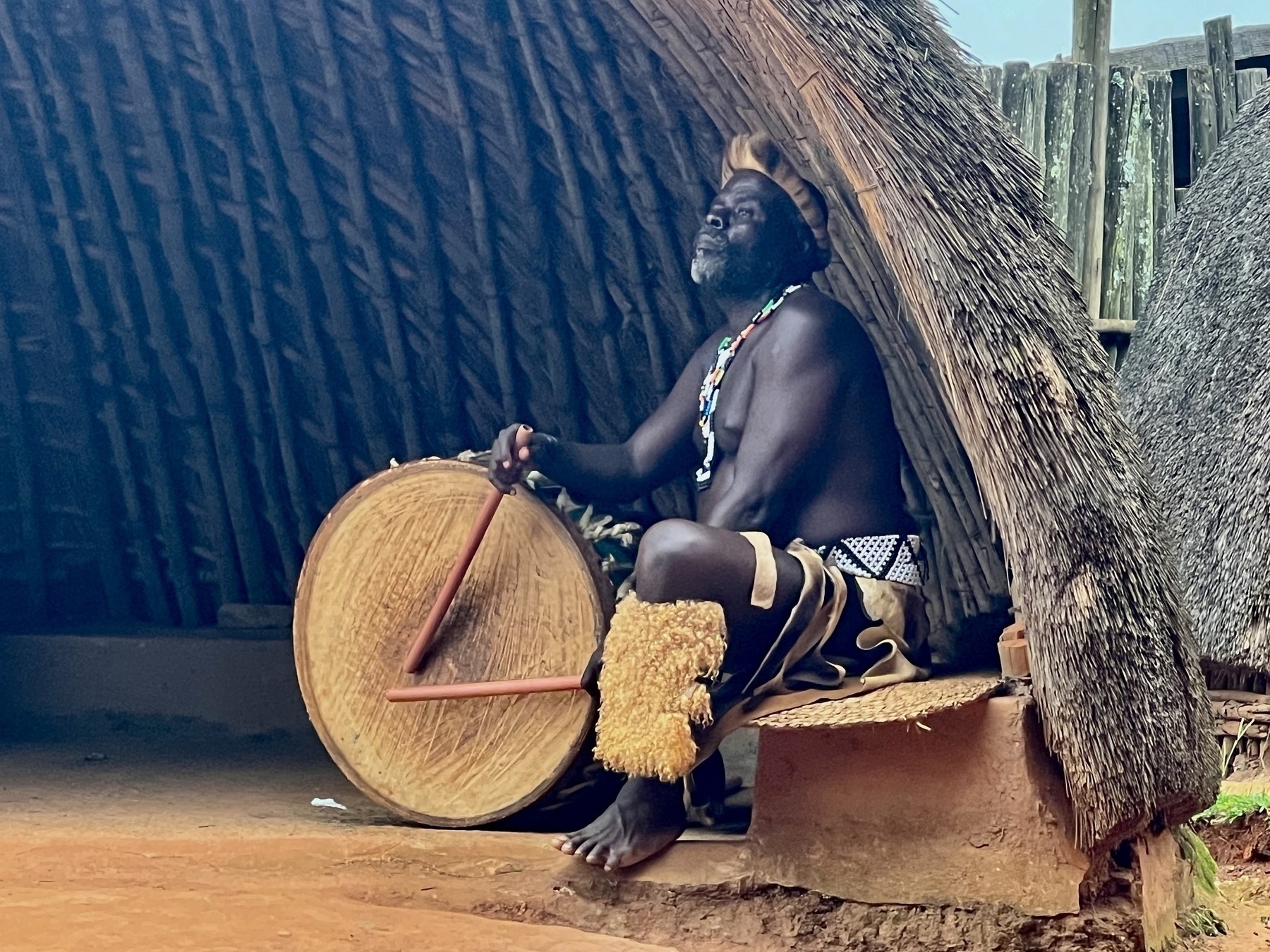
One of the first experiences we had in Pilanesberg National Park was these two subadult rhinos fighting one another. -J 🇿🇦
Pilanesberg National Park, South Africa
Our first safari game drive in Africa was in Pilanesberg National Park, 2.5 hours outside of Johannesburg. The park was formerly farmland located inside a large volcanic crater, but was rewilded as (mostly) natural habitat. -S 🇿🇦
An elephant drinking water, which is dripping off its trunk.

Our first giraffe sighting of the trip
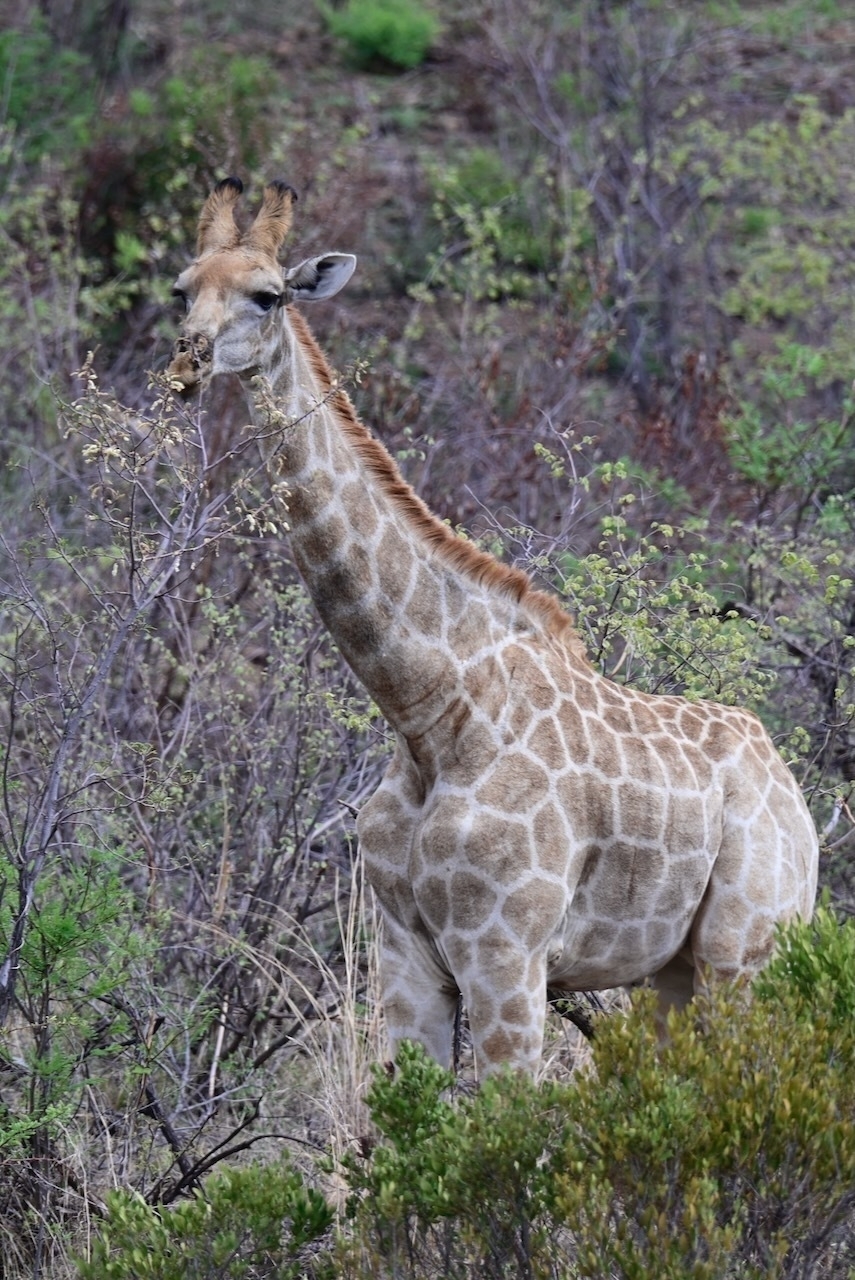
We watched this guy spray himself with water for a bit, though it was hard to capture given our angle.
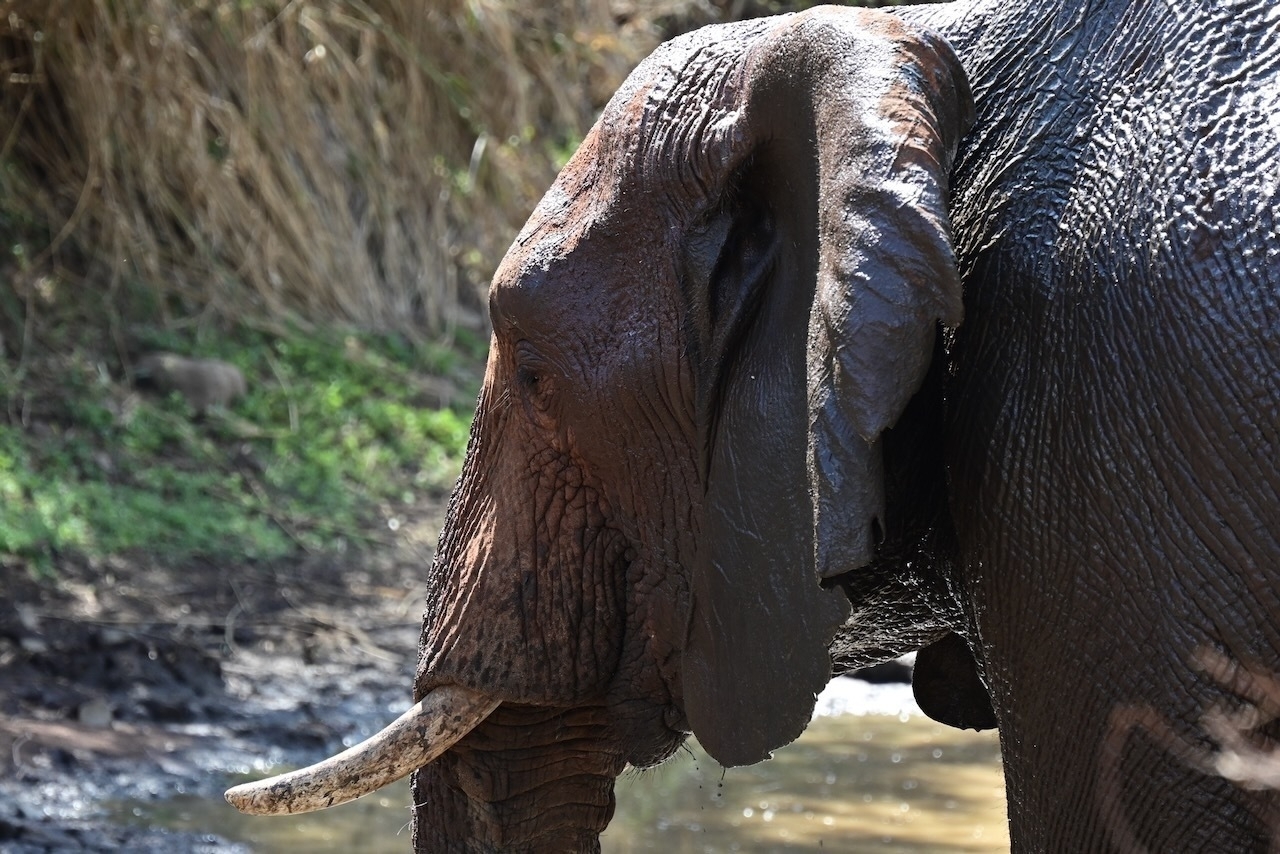
Two rhinos emerging from a shallow mud pit.
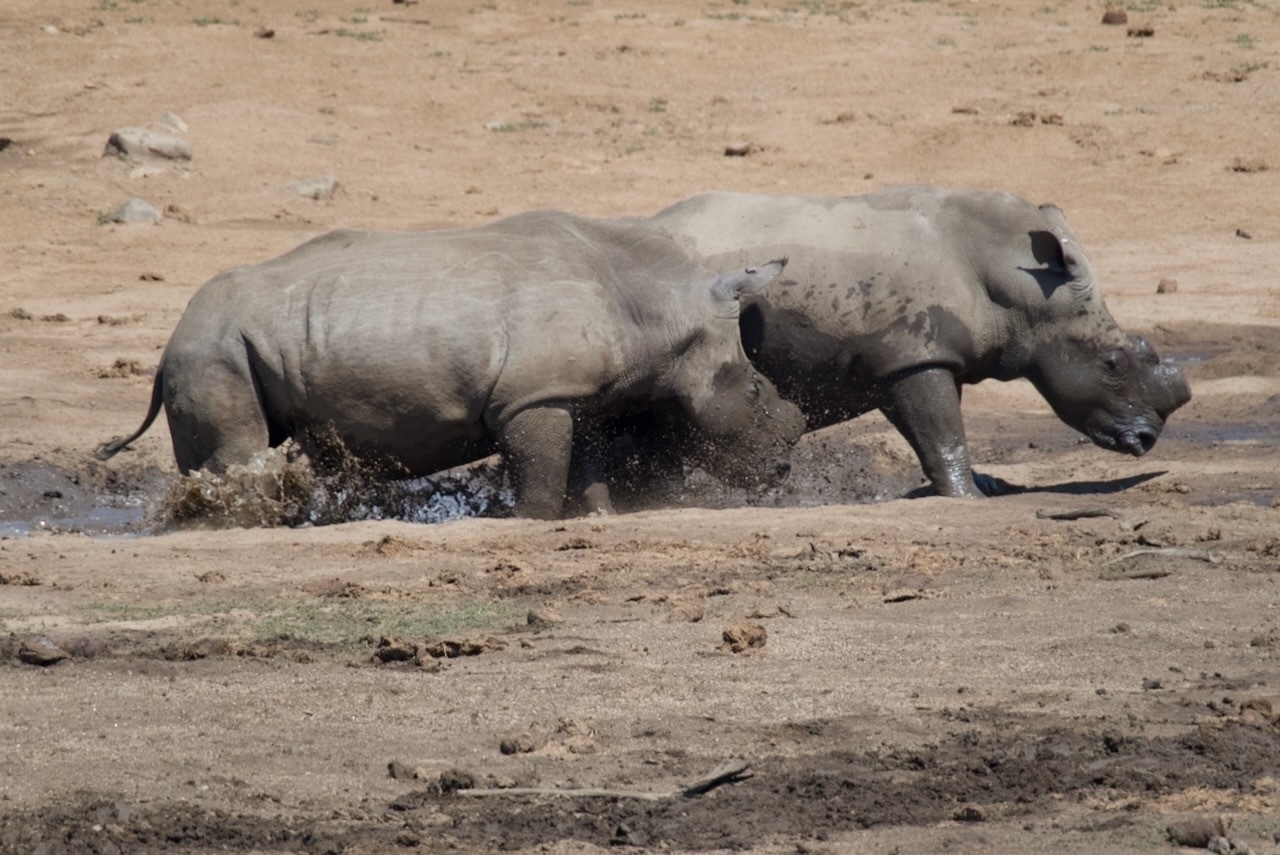
Zebra casually grazing
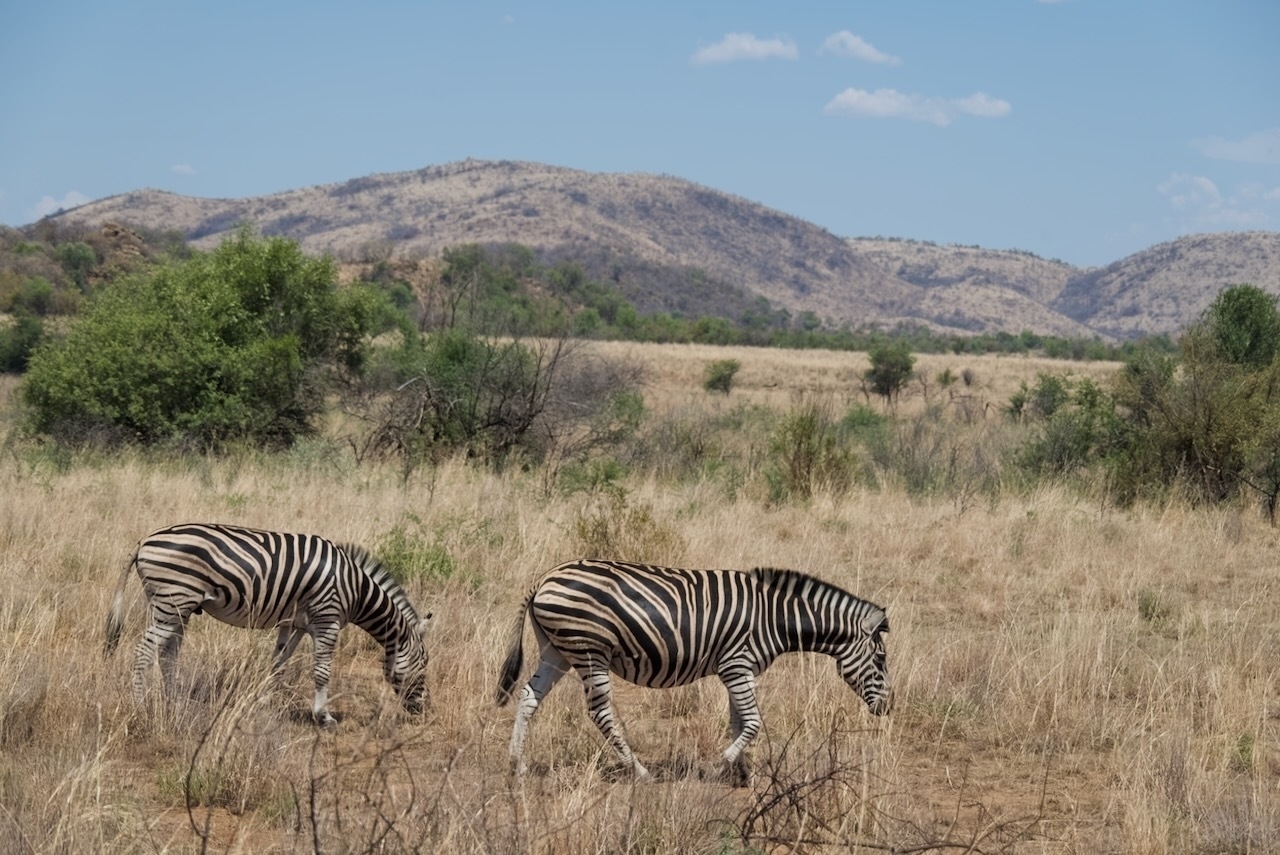
This doesn’t look like much, but it’s a dead impala in a tree—a recent leopard kill—though we could not locate the leopard, which was likely in the surrounding area, but bedded down and not visible from our various vantage points.
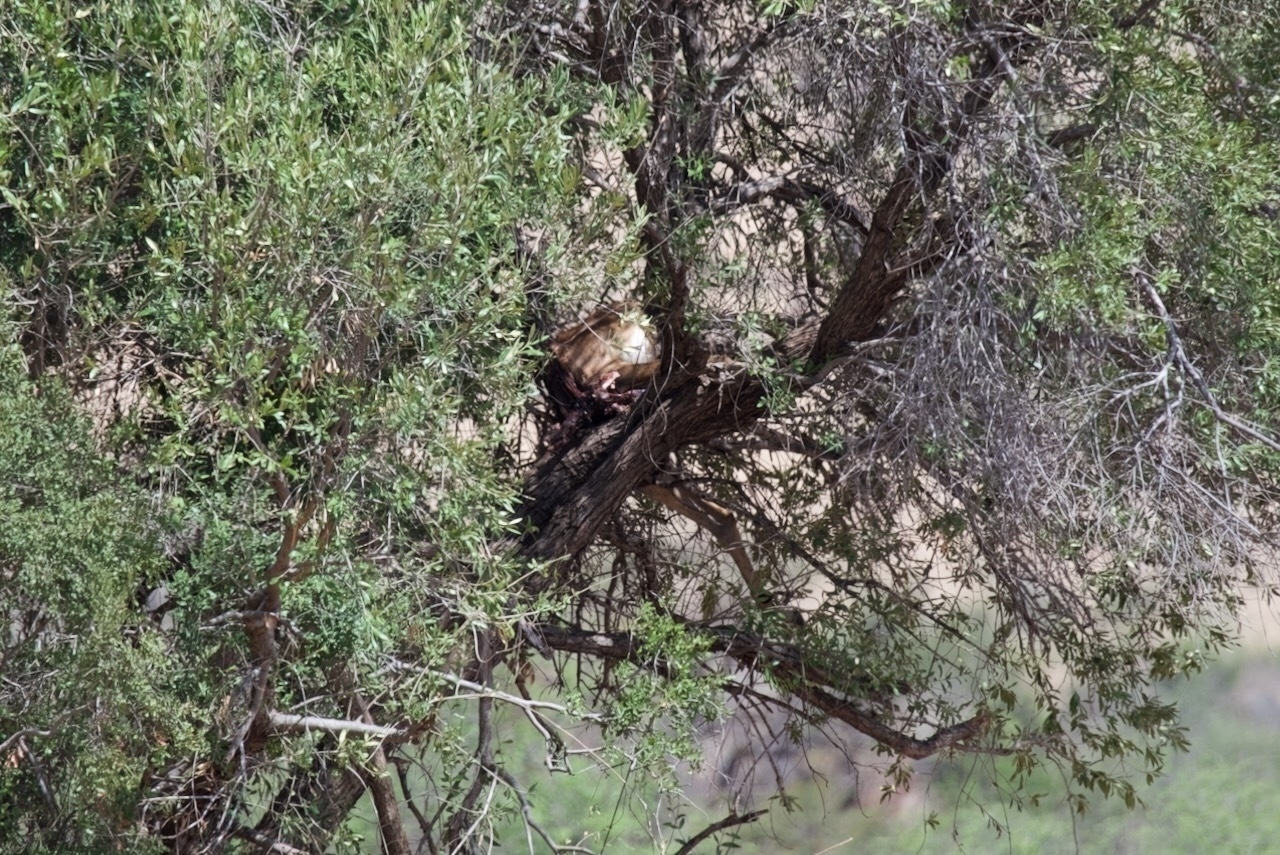
Wildebeest browsing
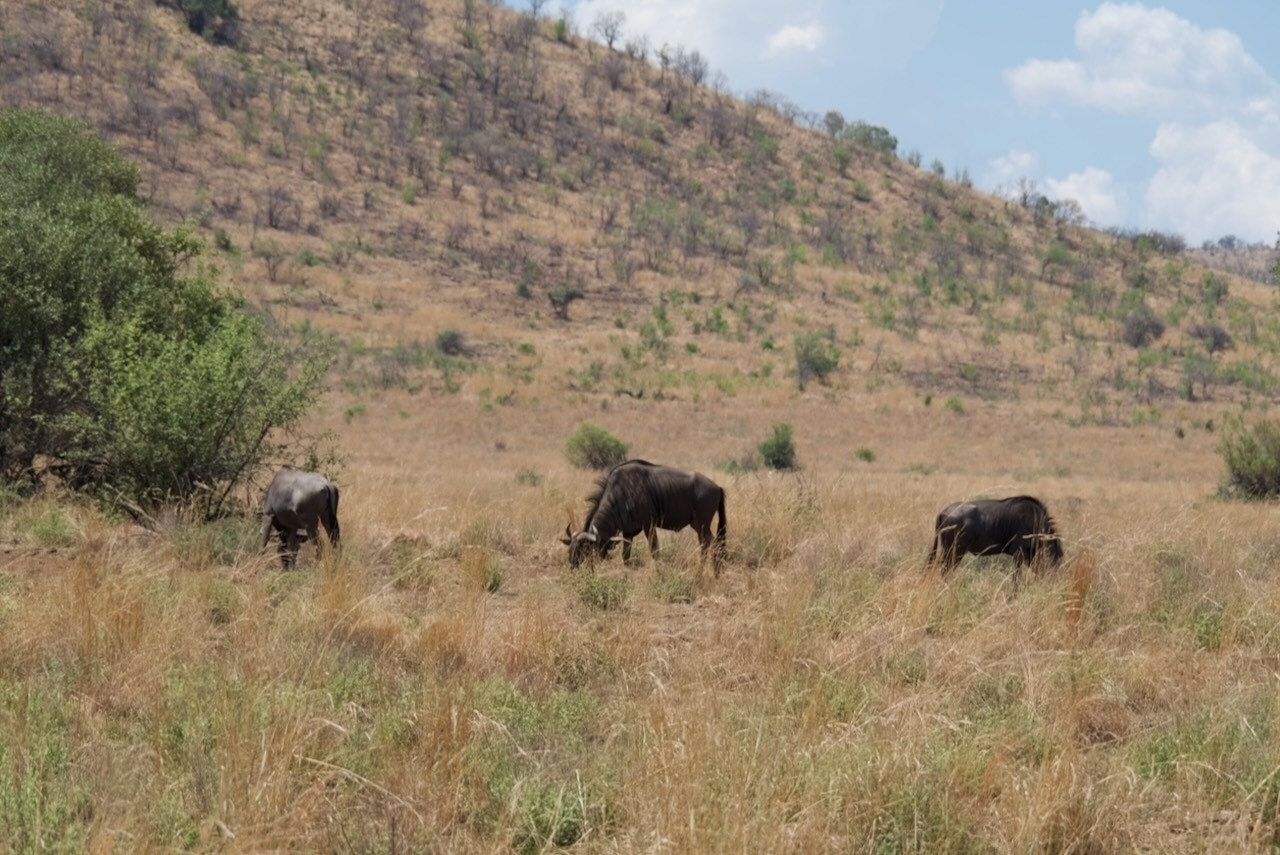
The two of these rhinos butted up against each other were challenging each other for seemingly the entire day.

Love the coloration on this elephant’s ears
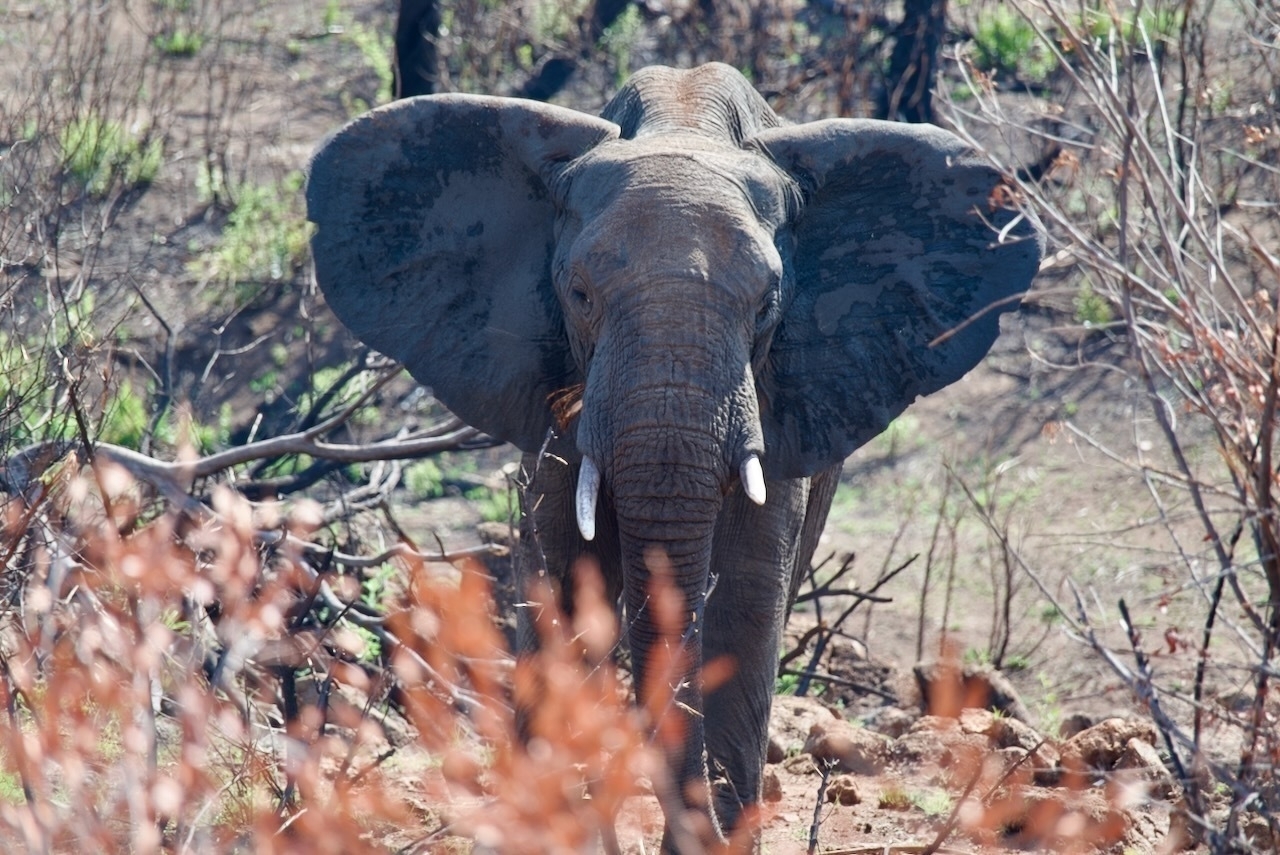
We saw what seemed to be countless impala

The only warthog of the day
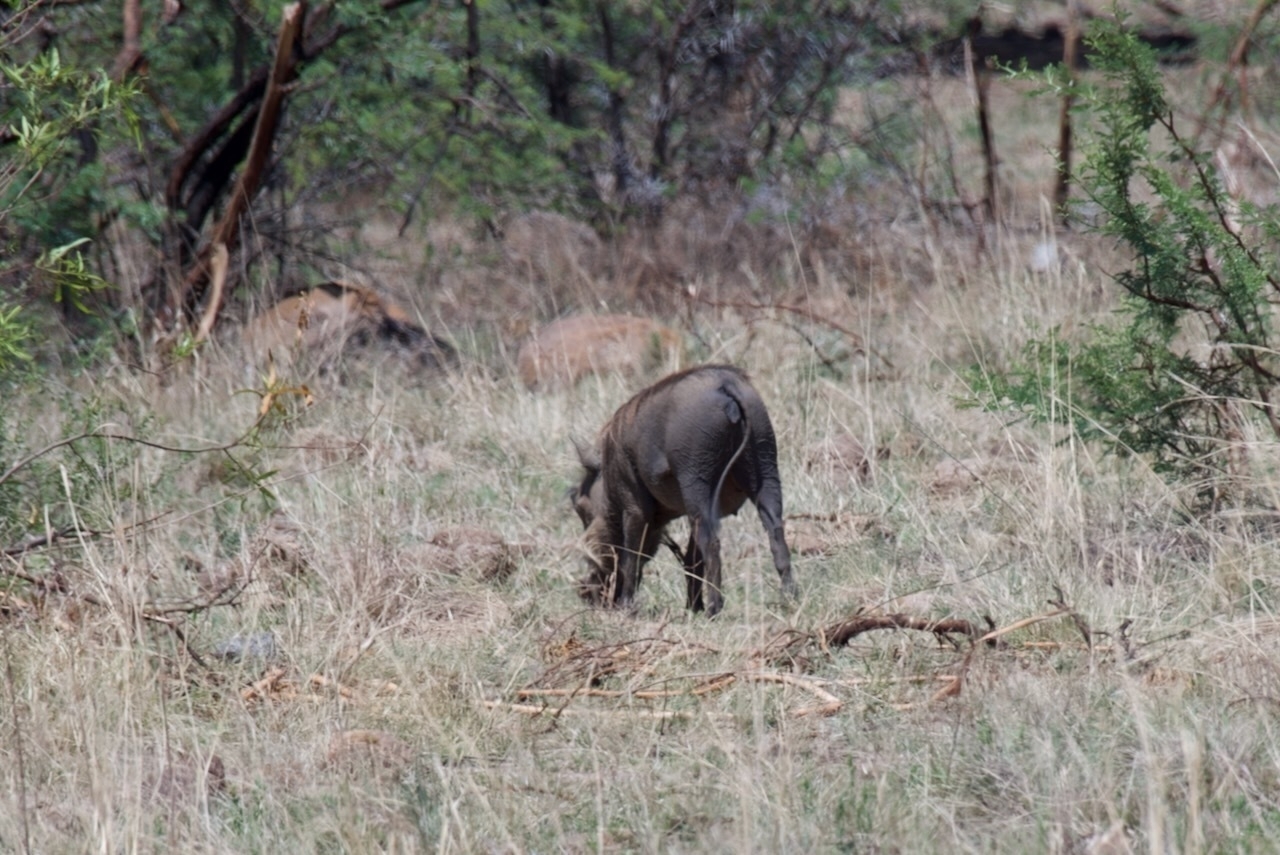
A hippo submerged in the water, with some impala nearby

A kudu surveys the landscape
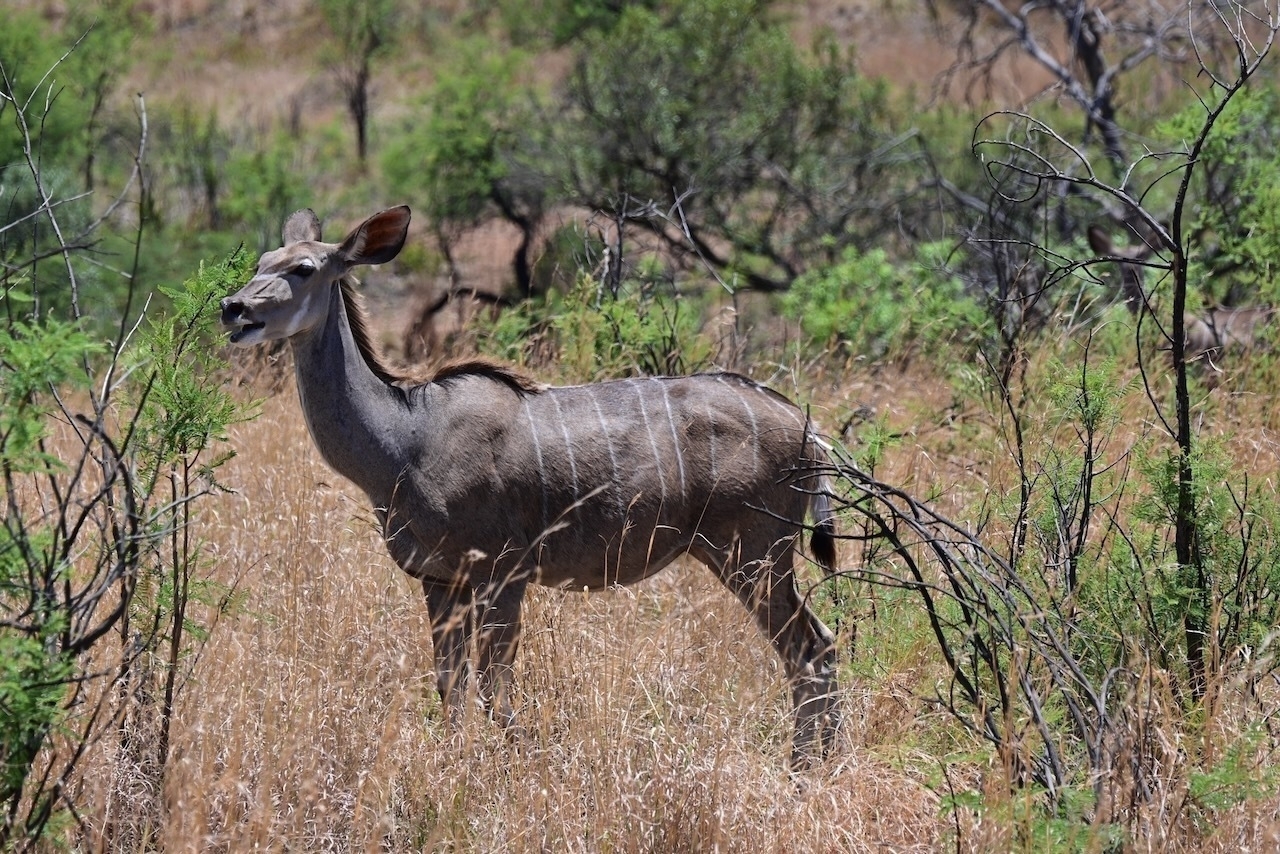
An elephant in the bush
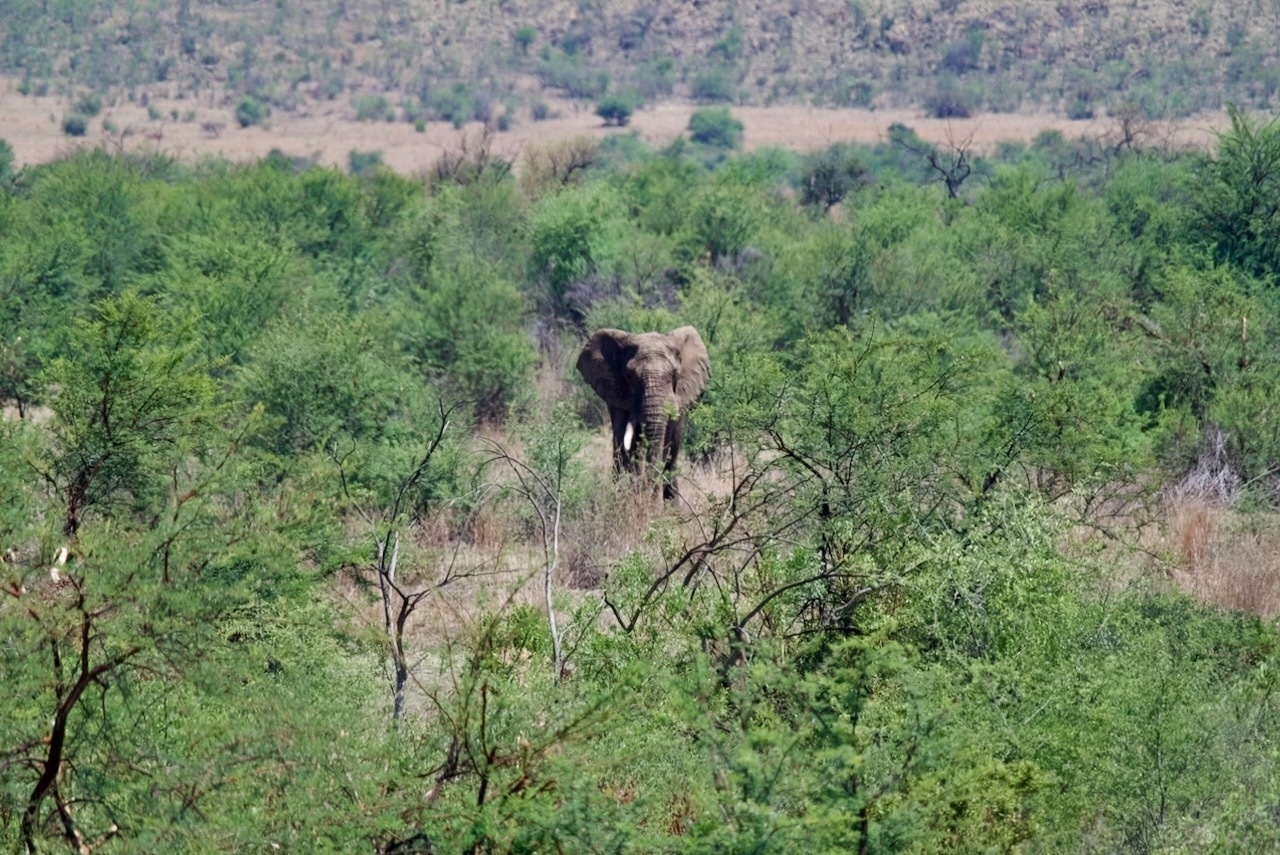
Hippos generally stay in the water during the day to keep their body temperature low, but this one in the distance seemed to enjoy just standing around for a bit.
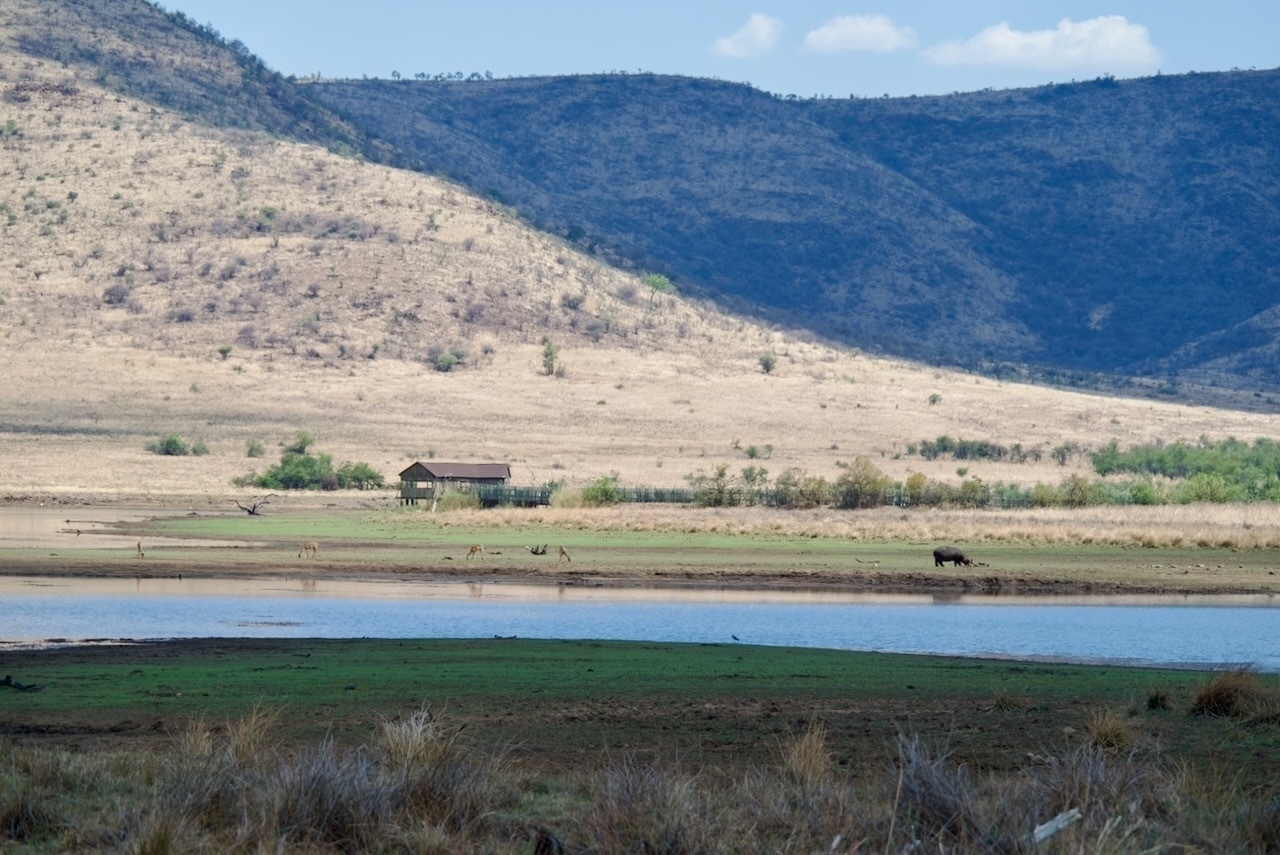
Elephants browsing
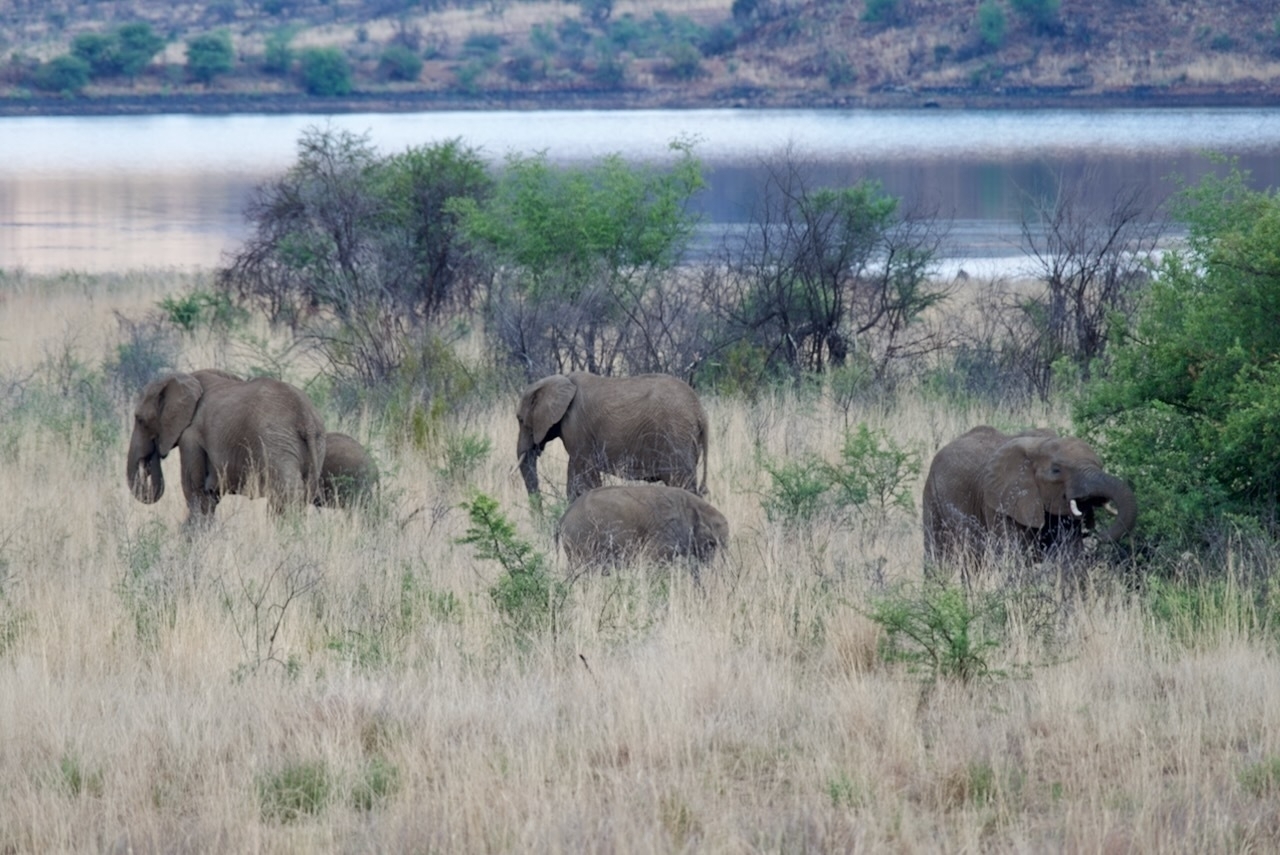
A herd of wildebeast in the distance
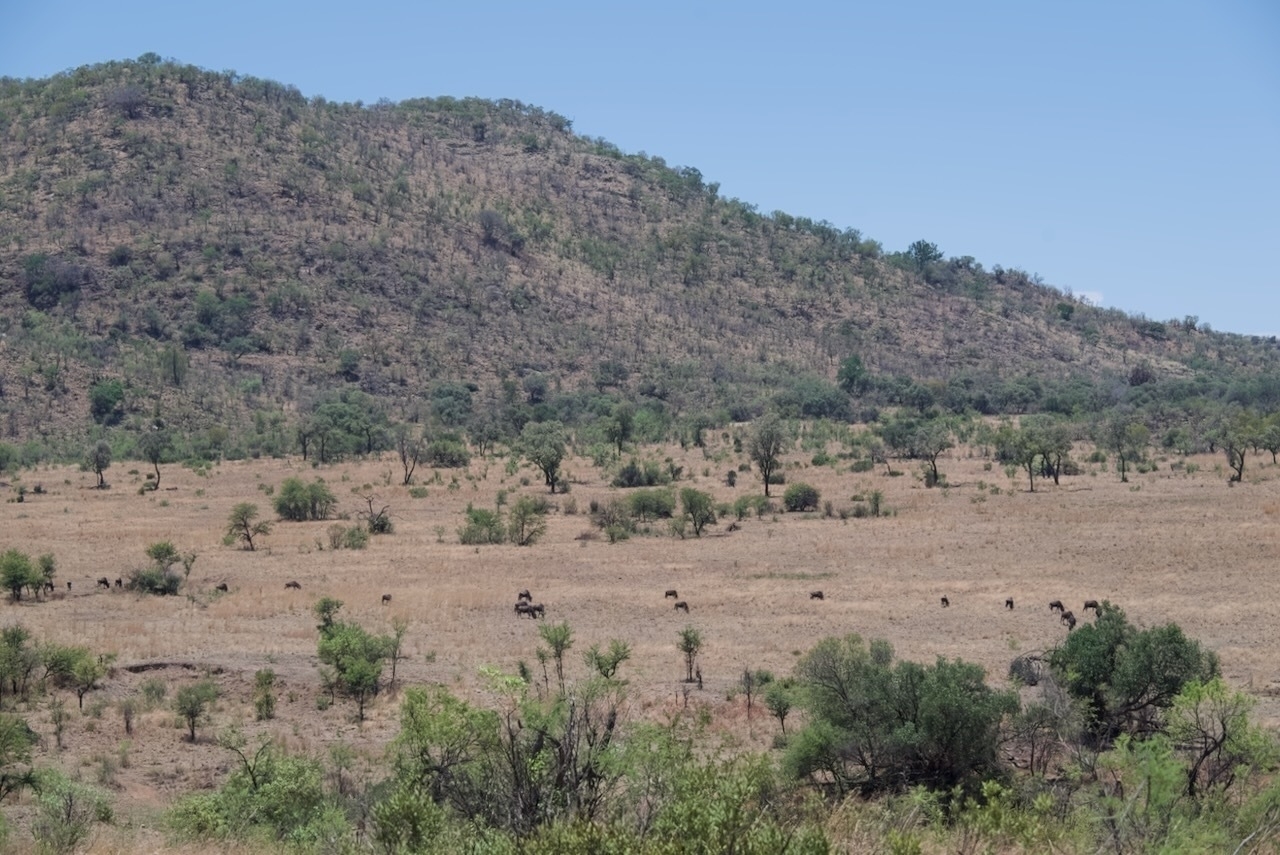
Coming and going
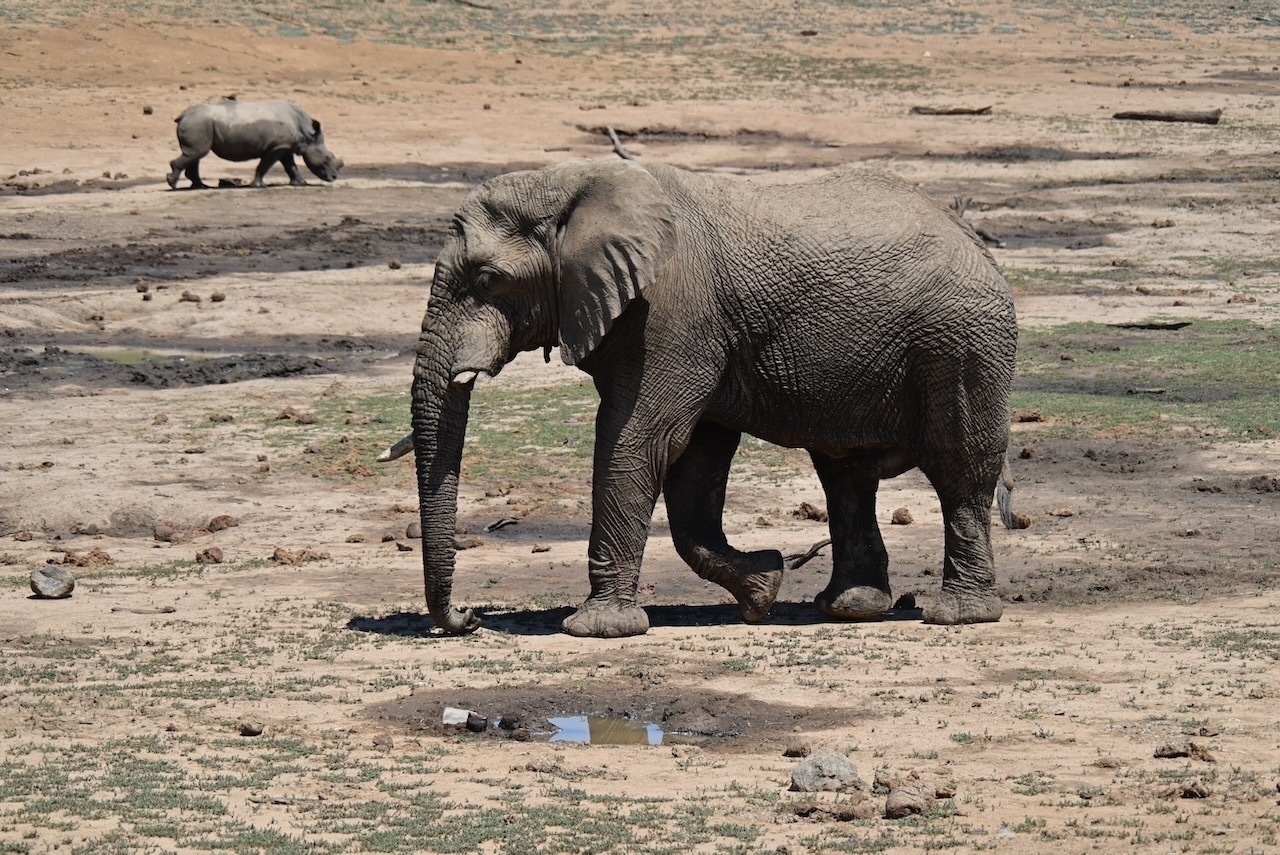
My favorite elephant of the day
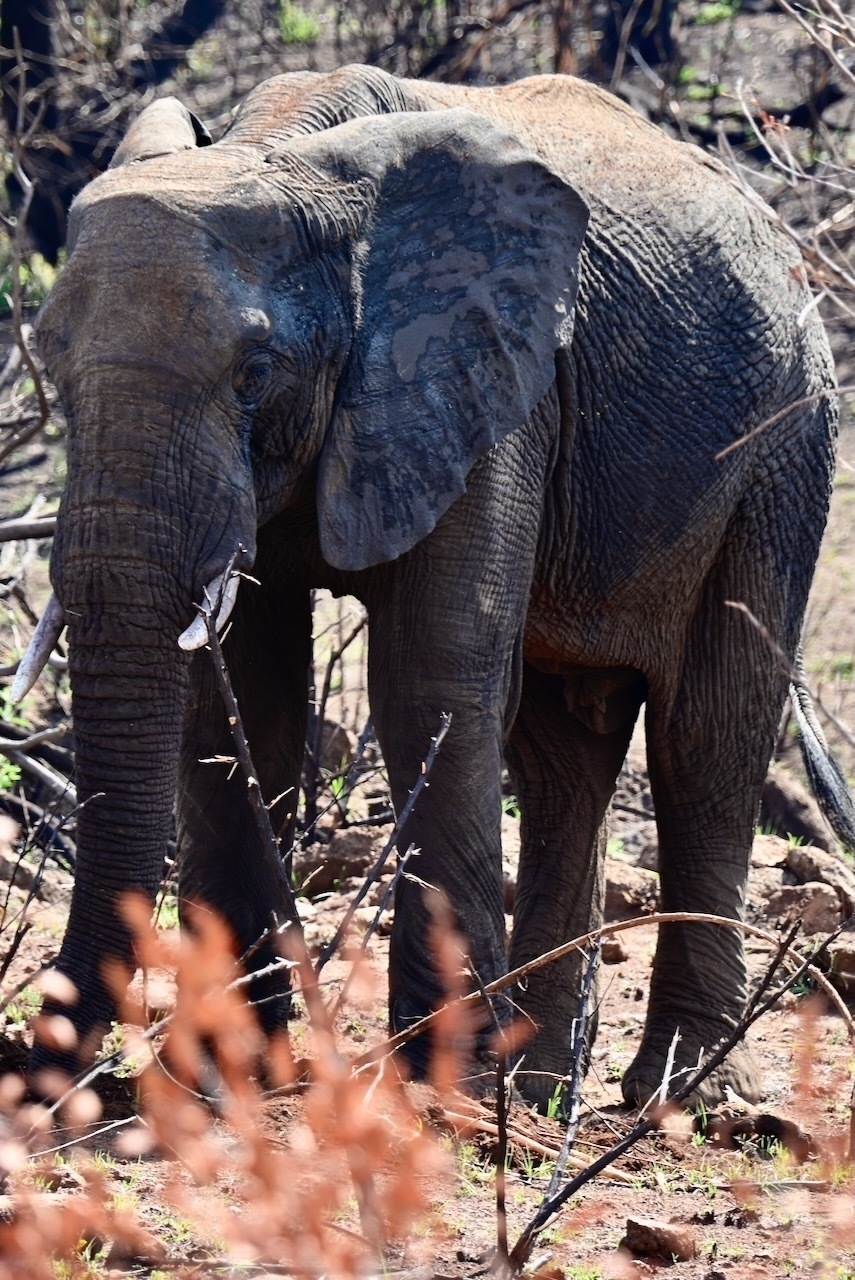
📷 You can find some more shots from the day on our public iCloud album.
